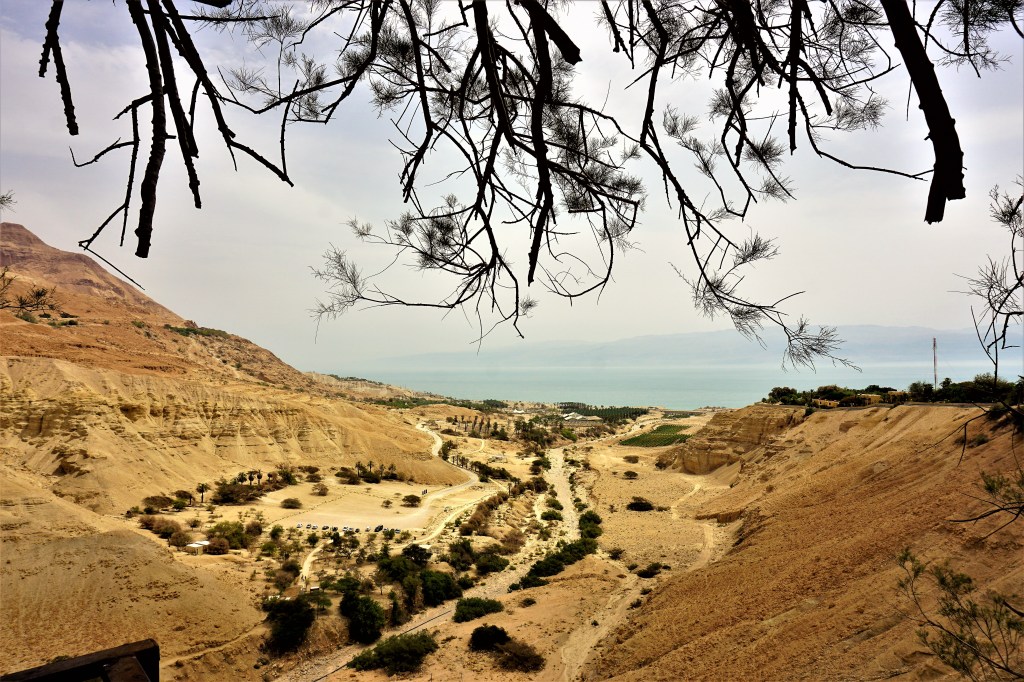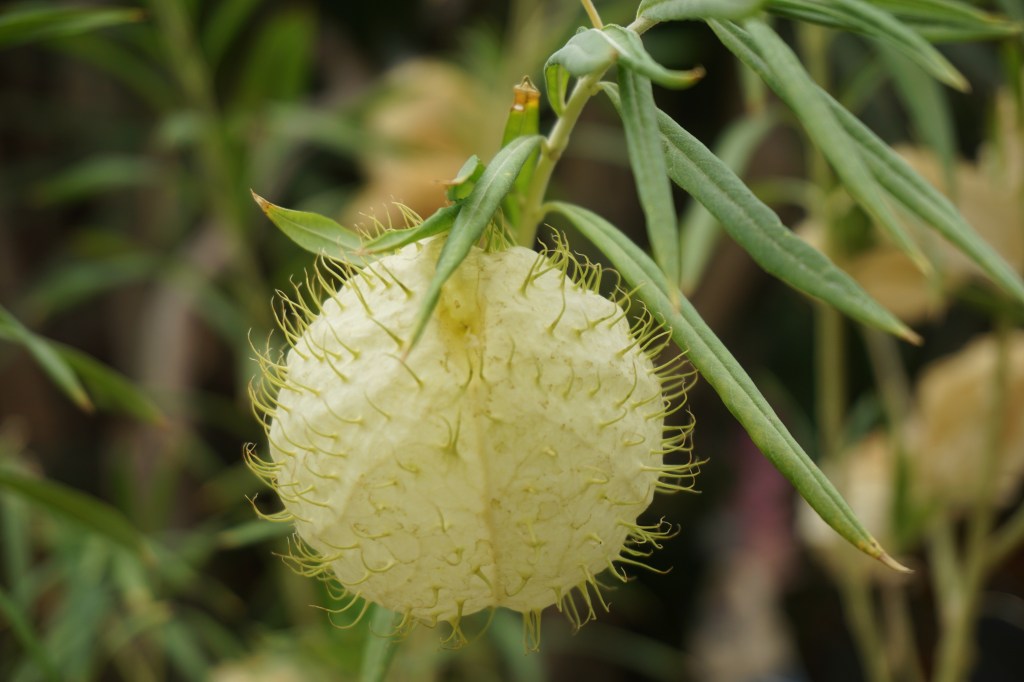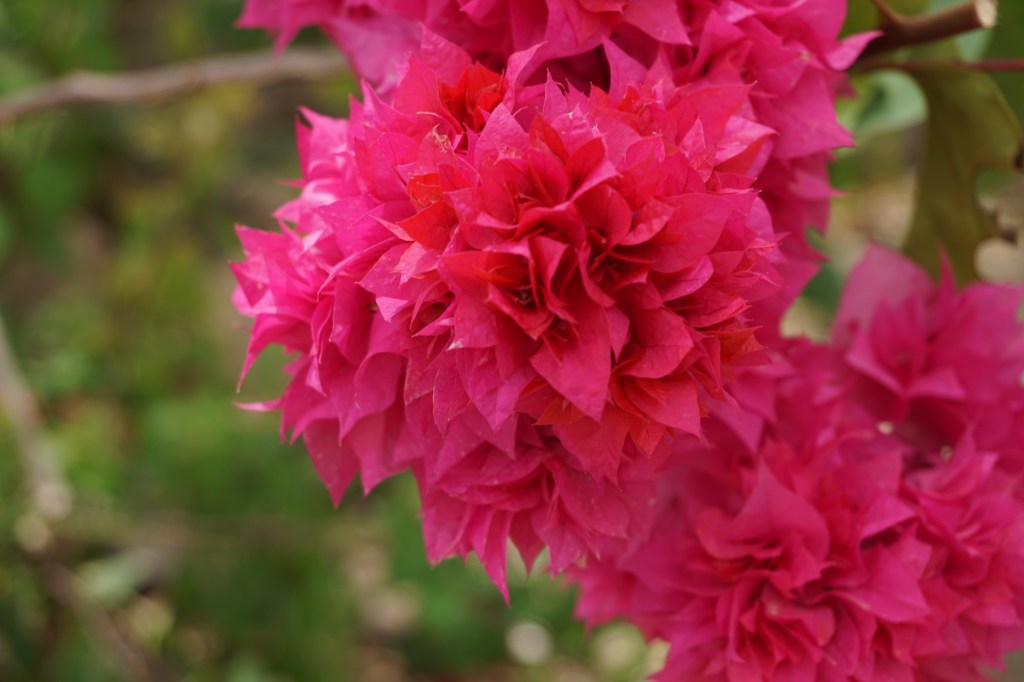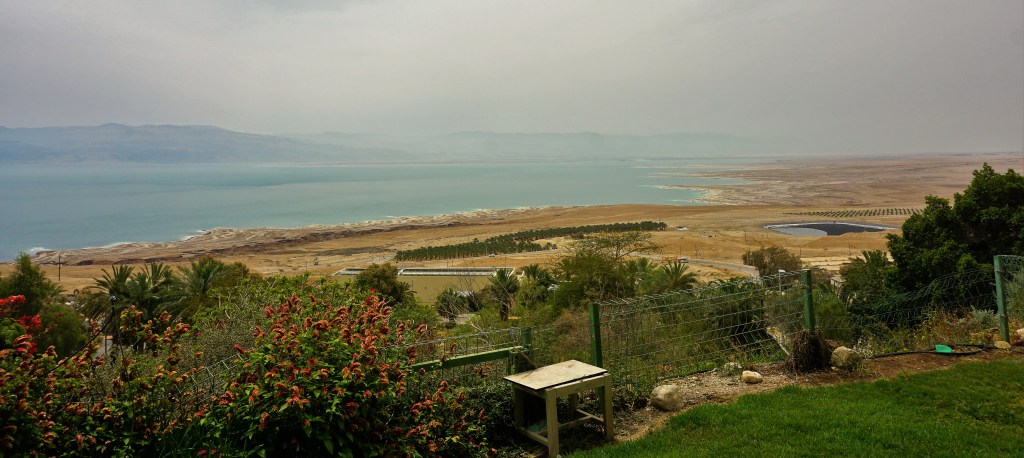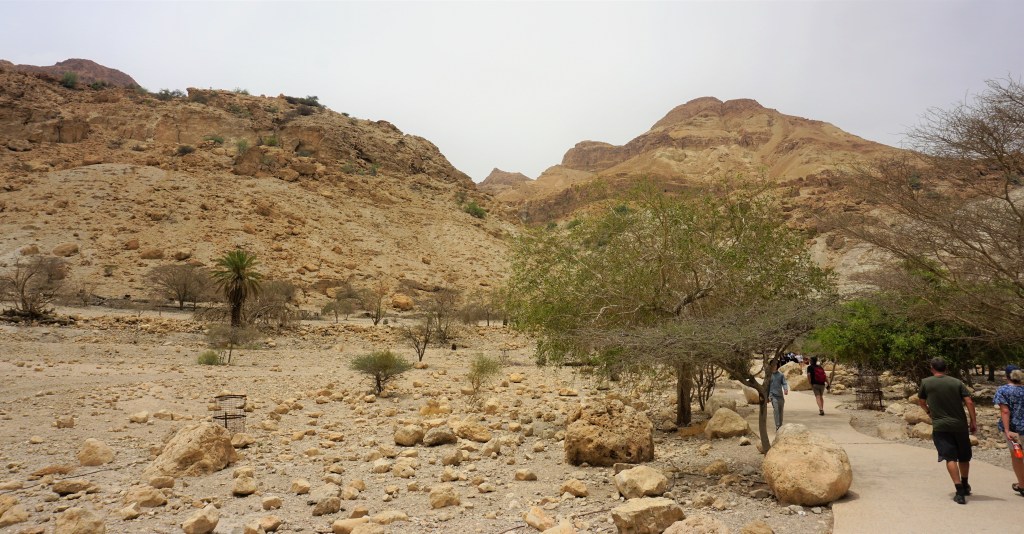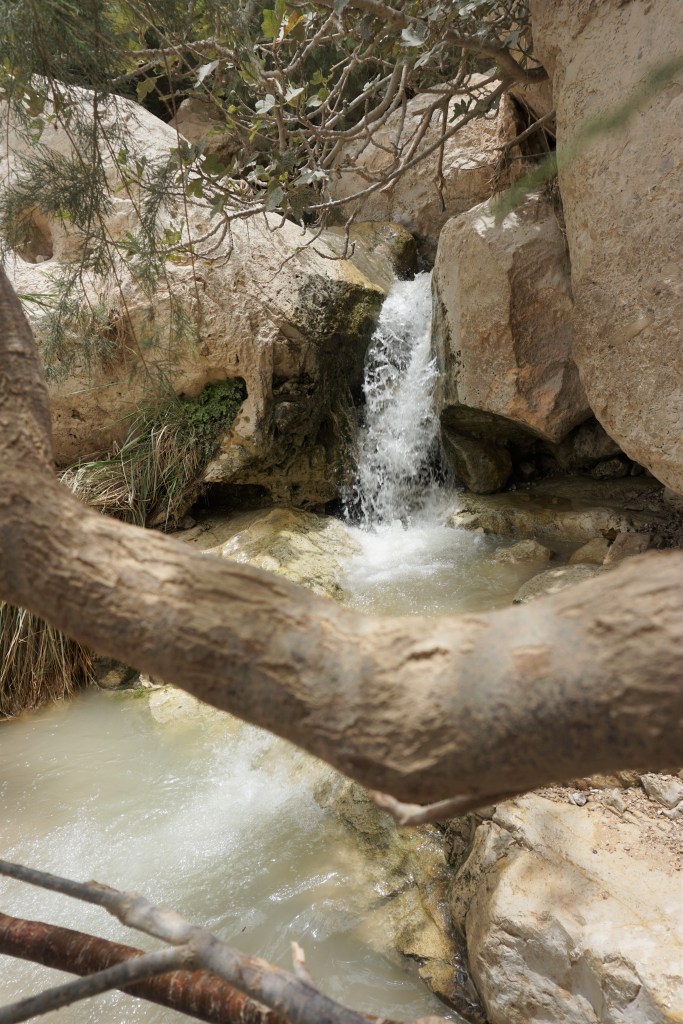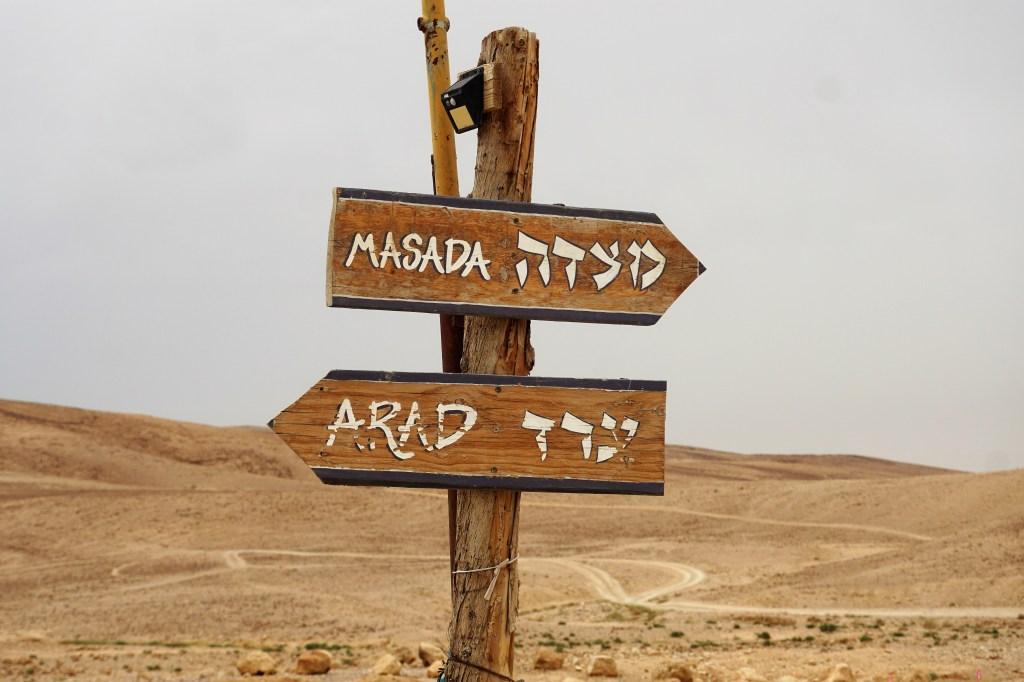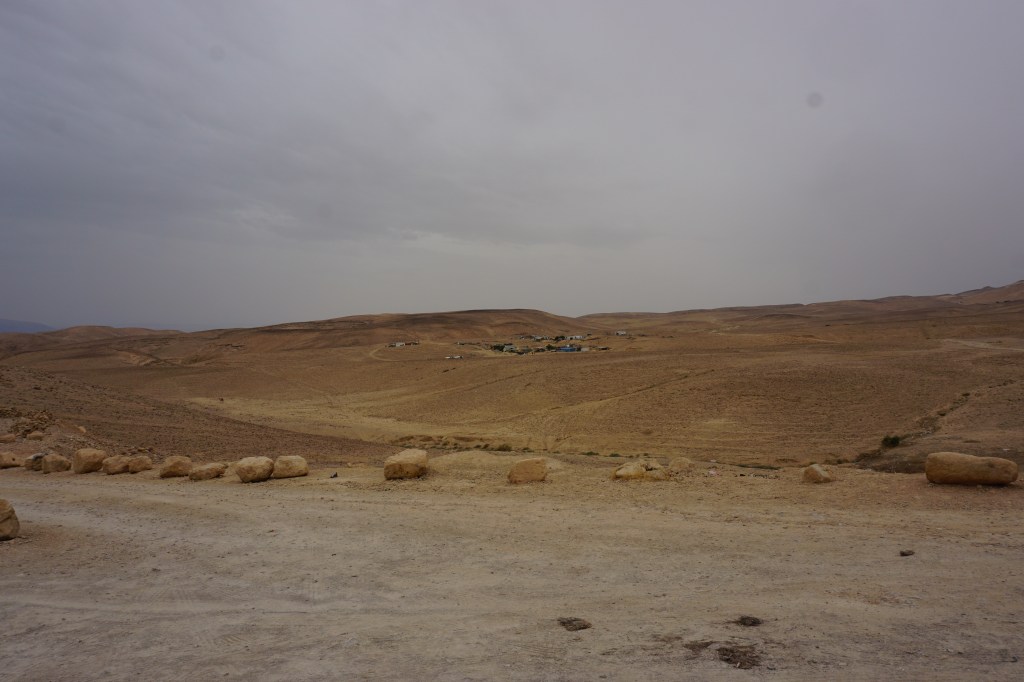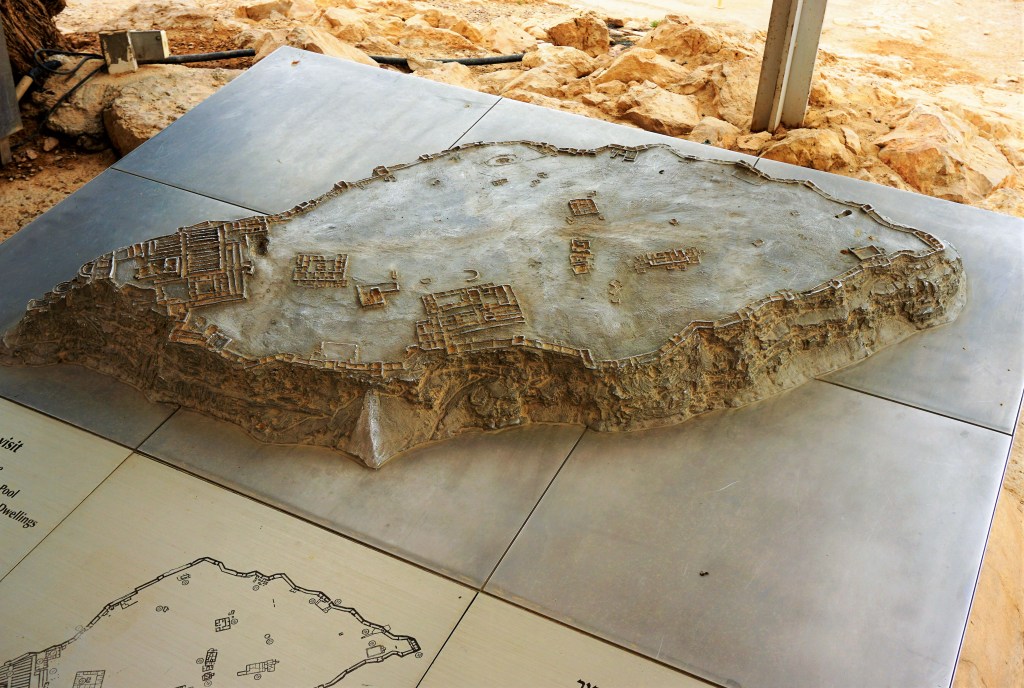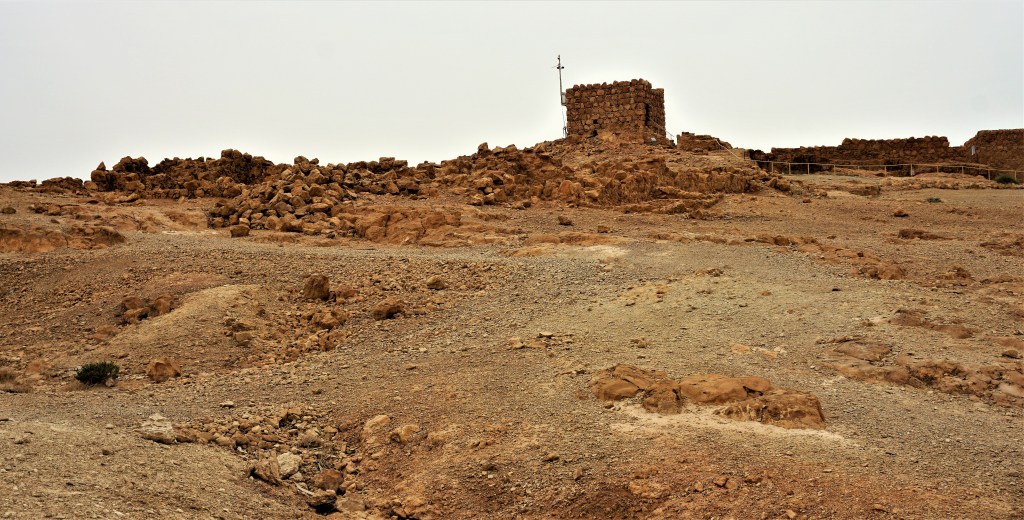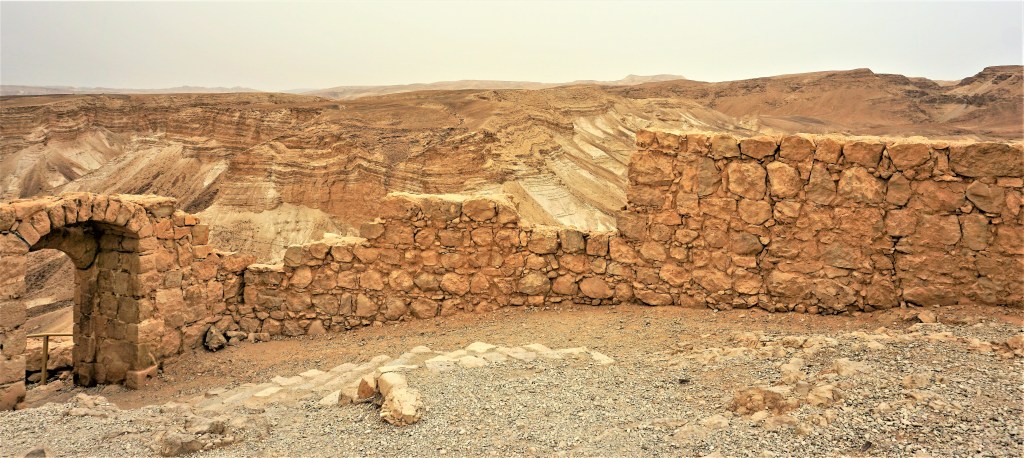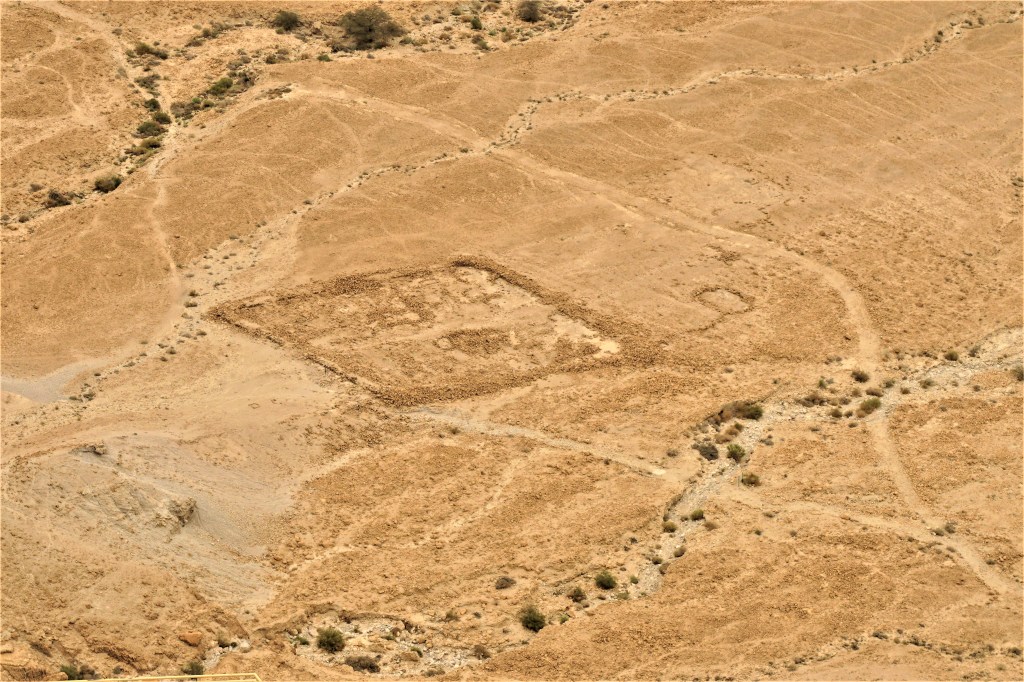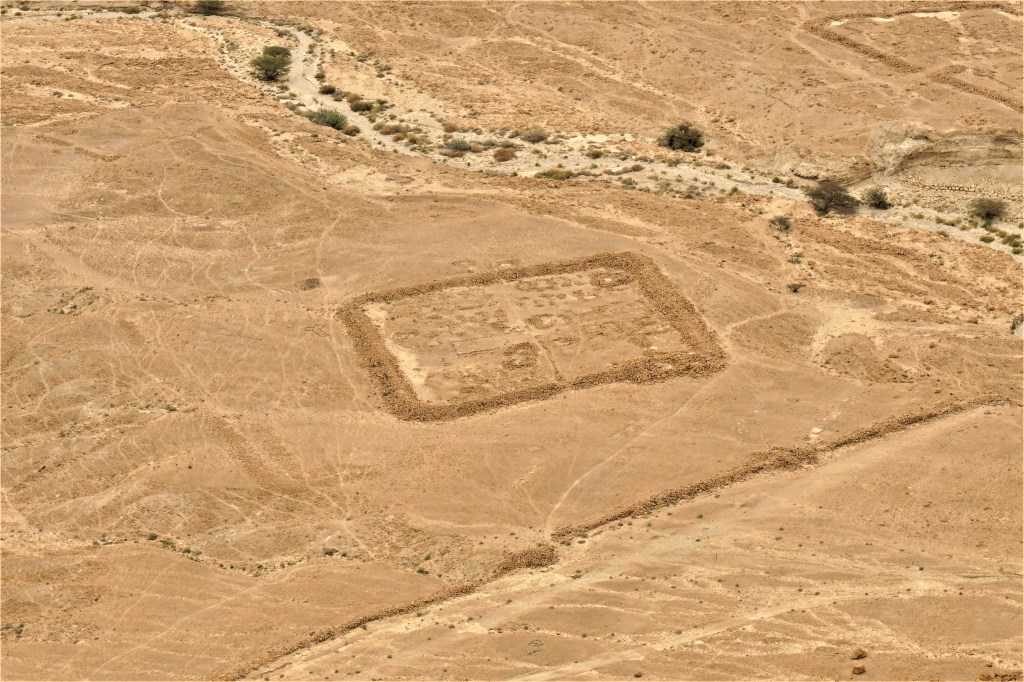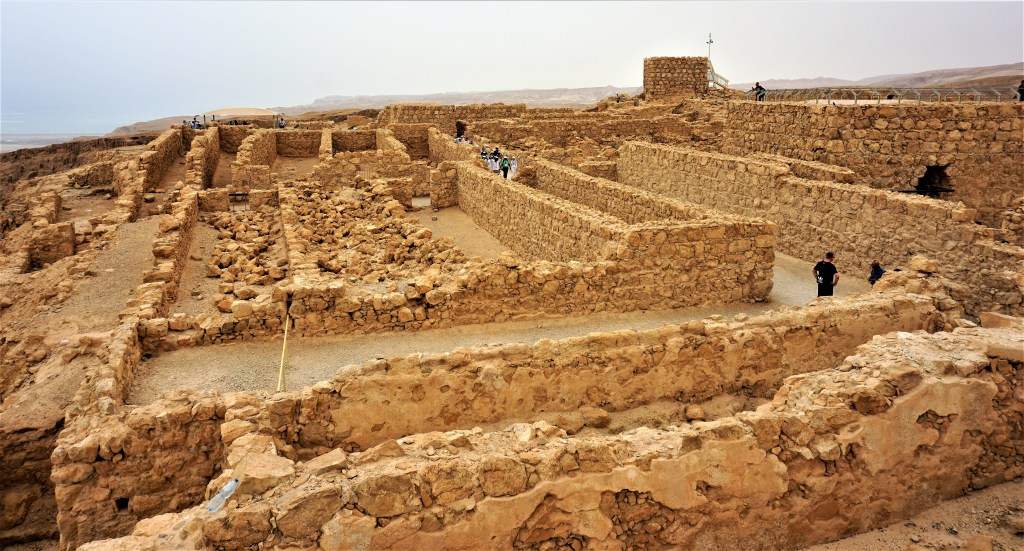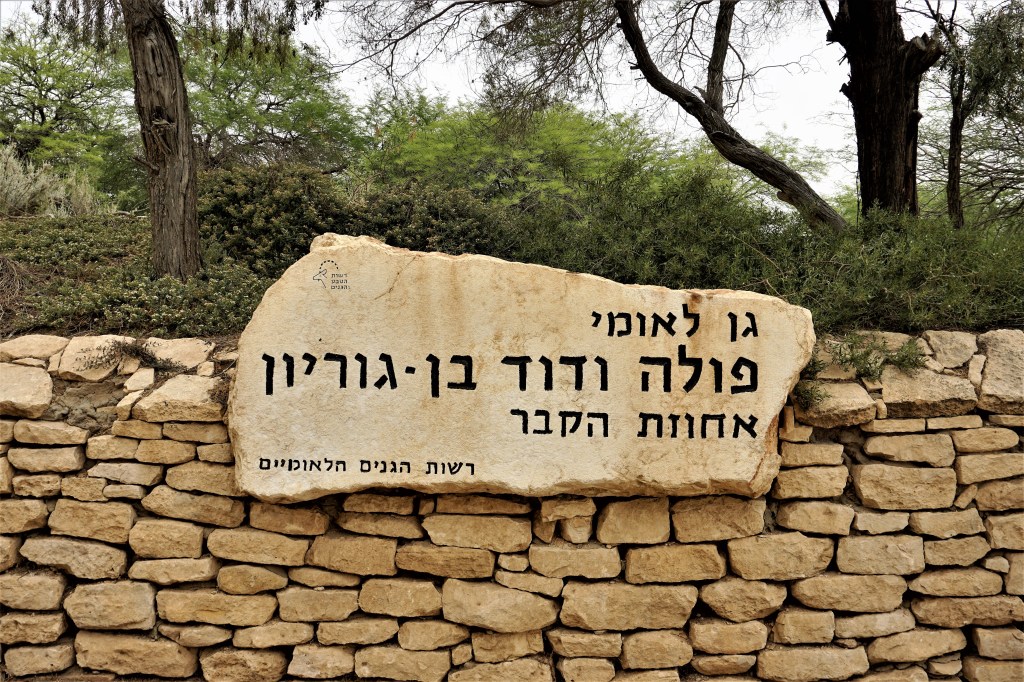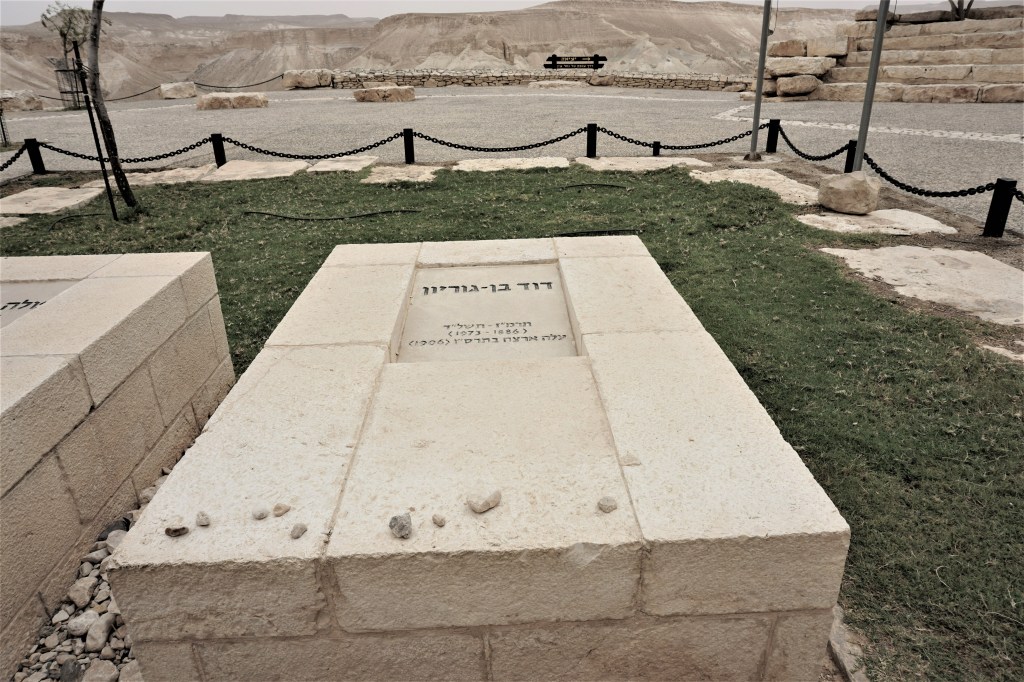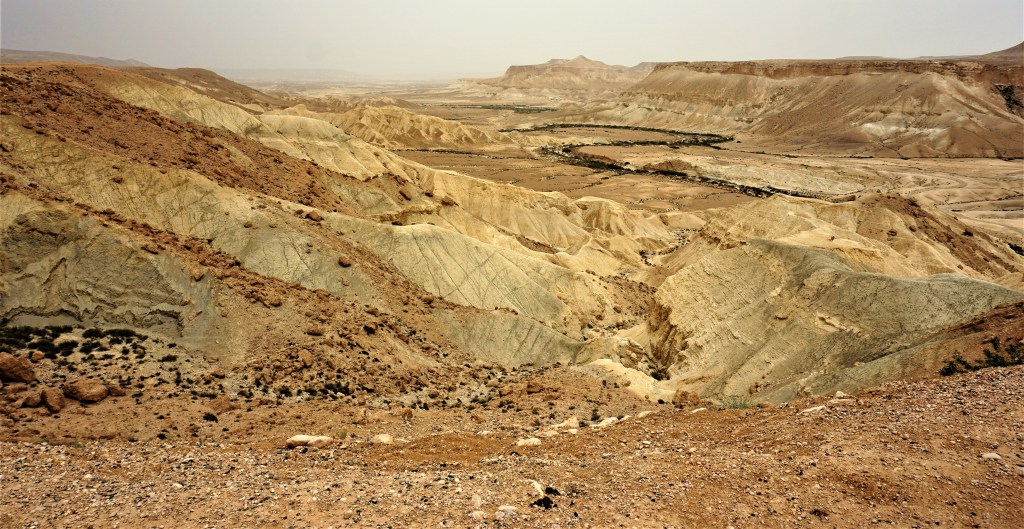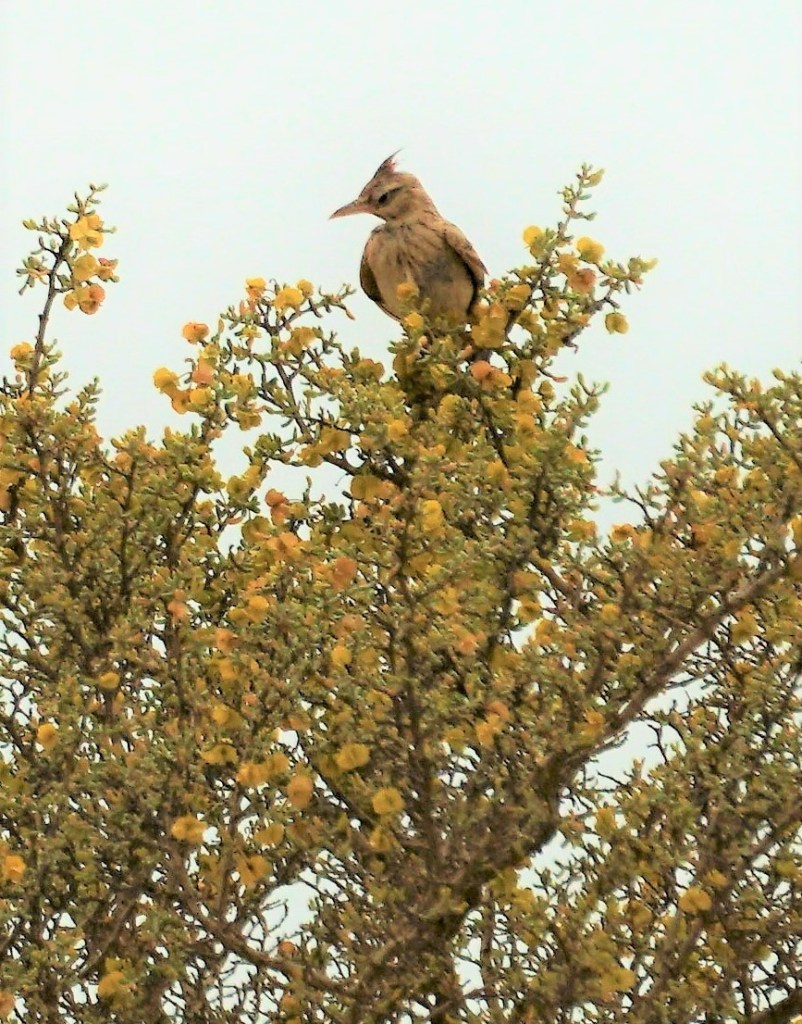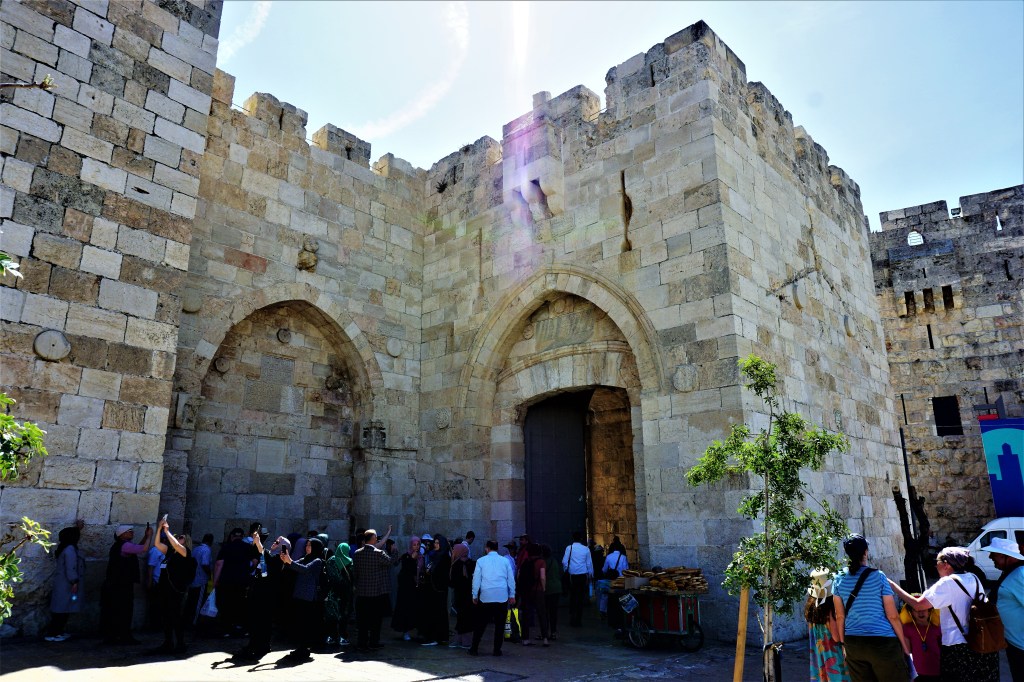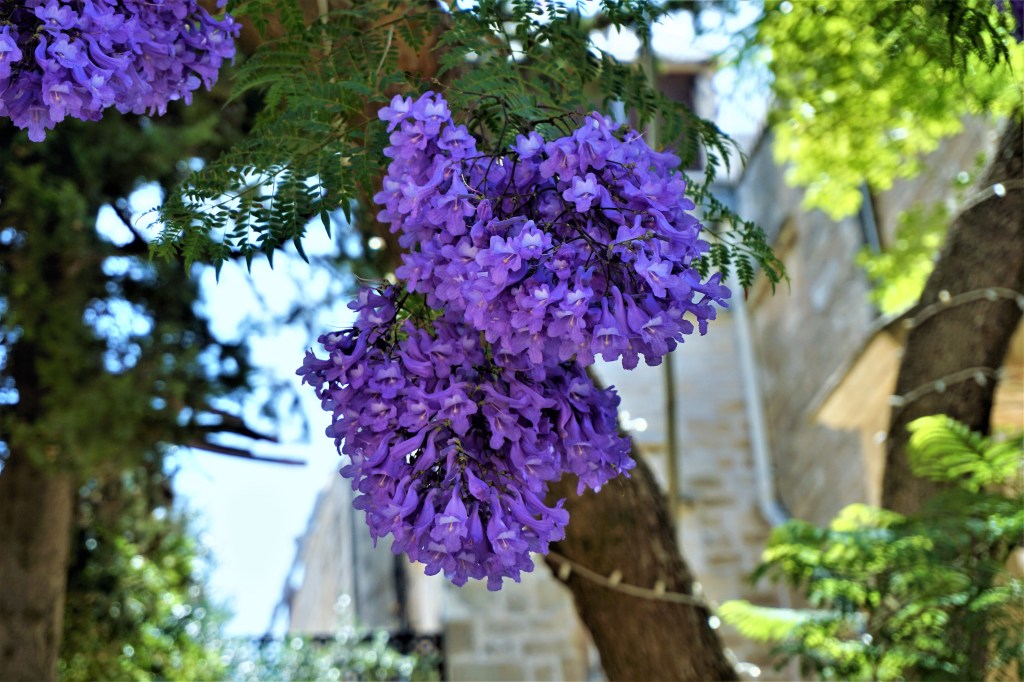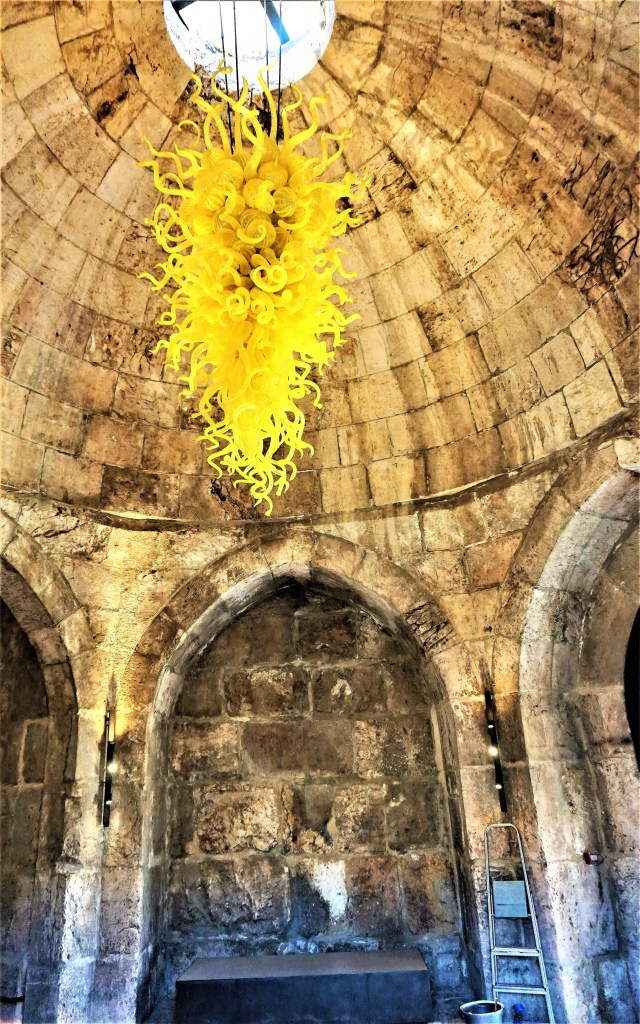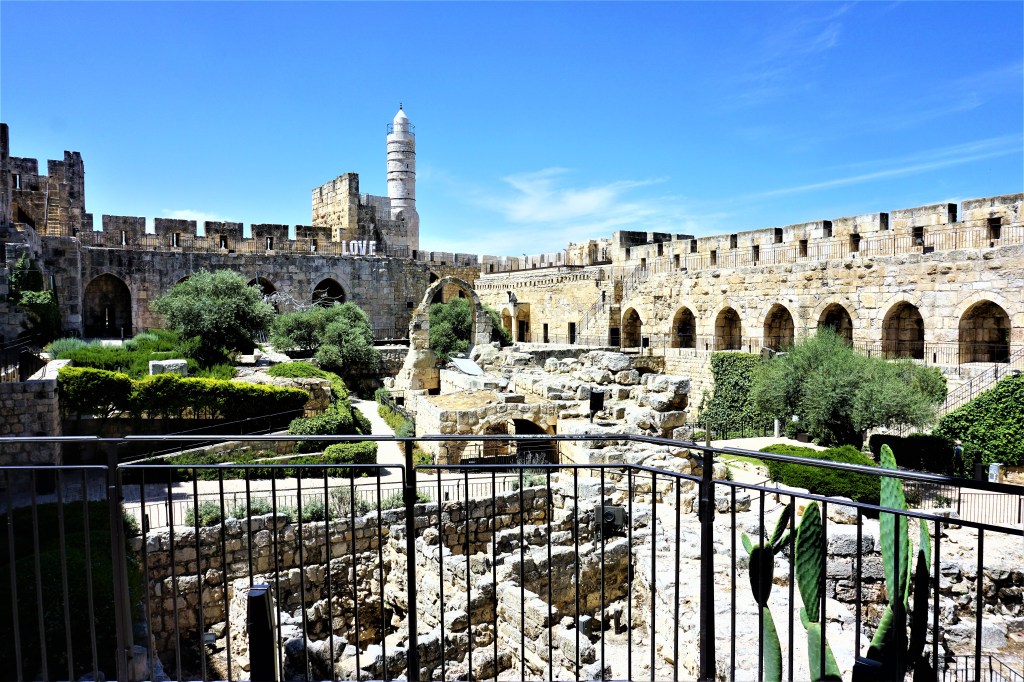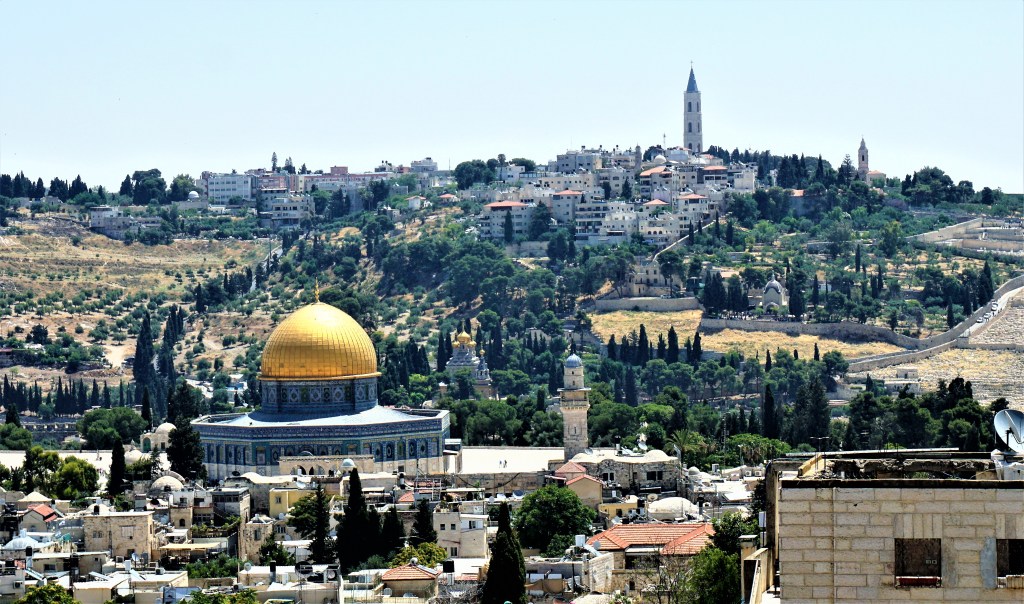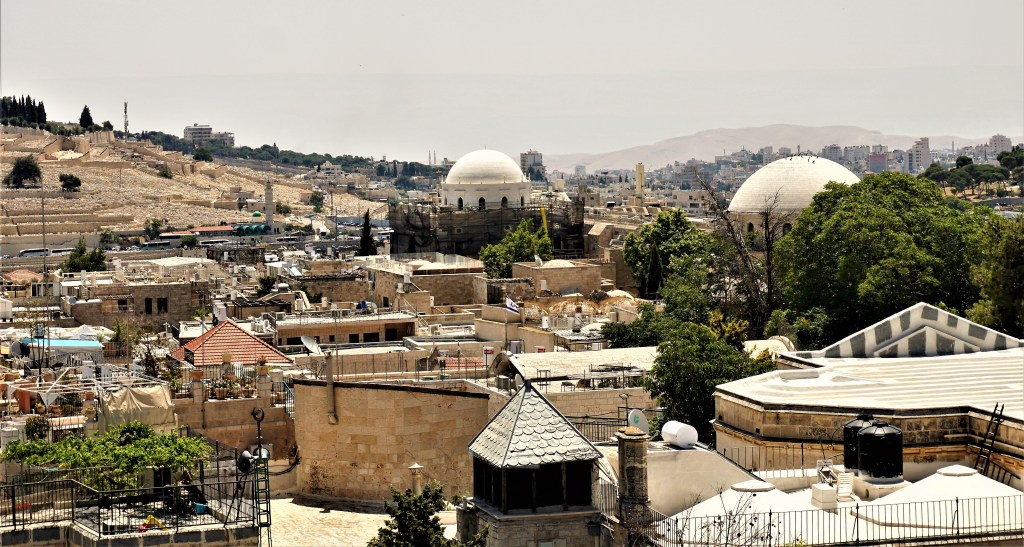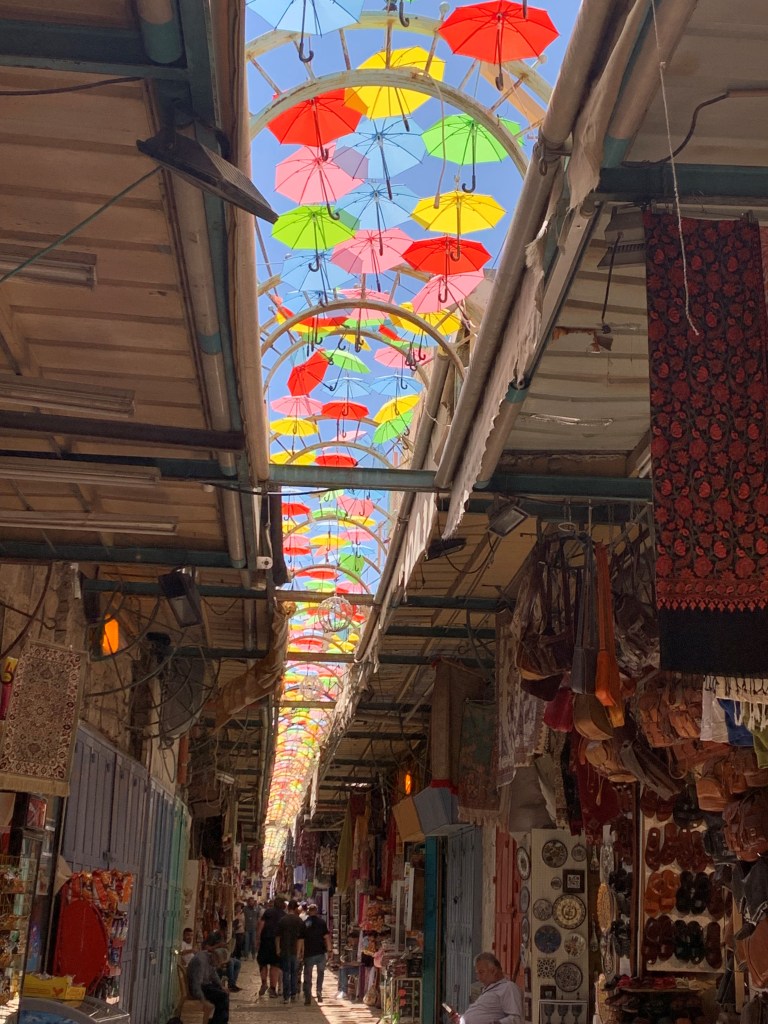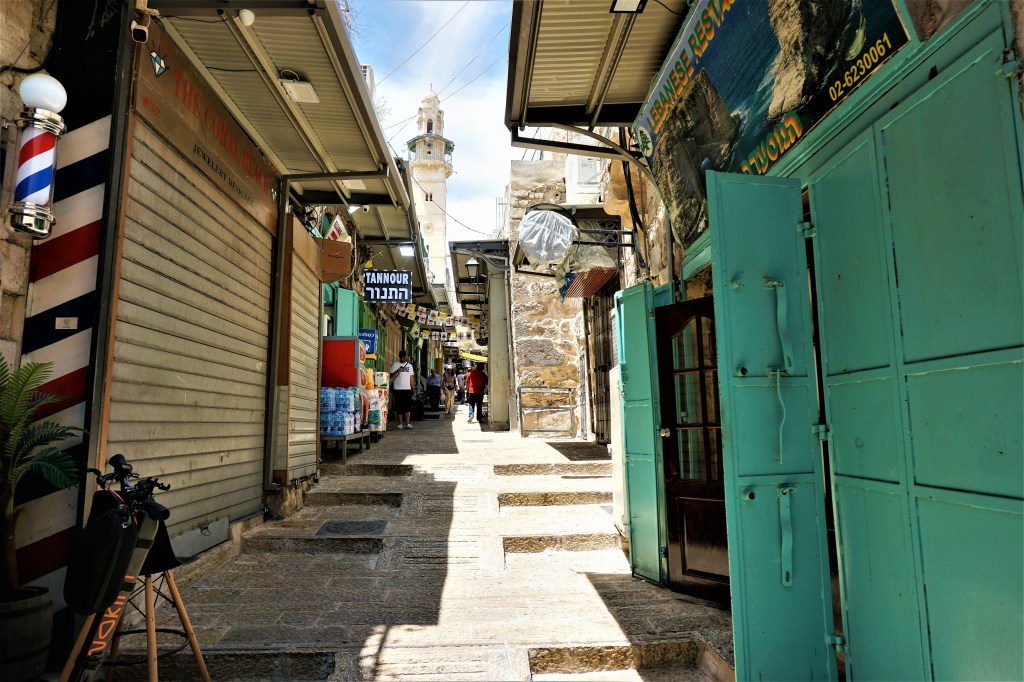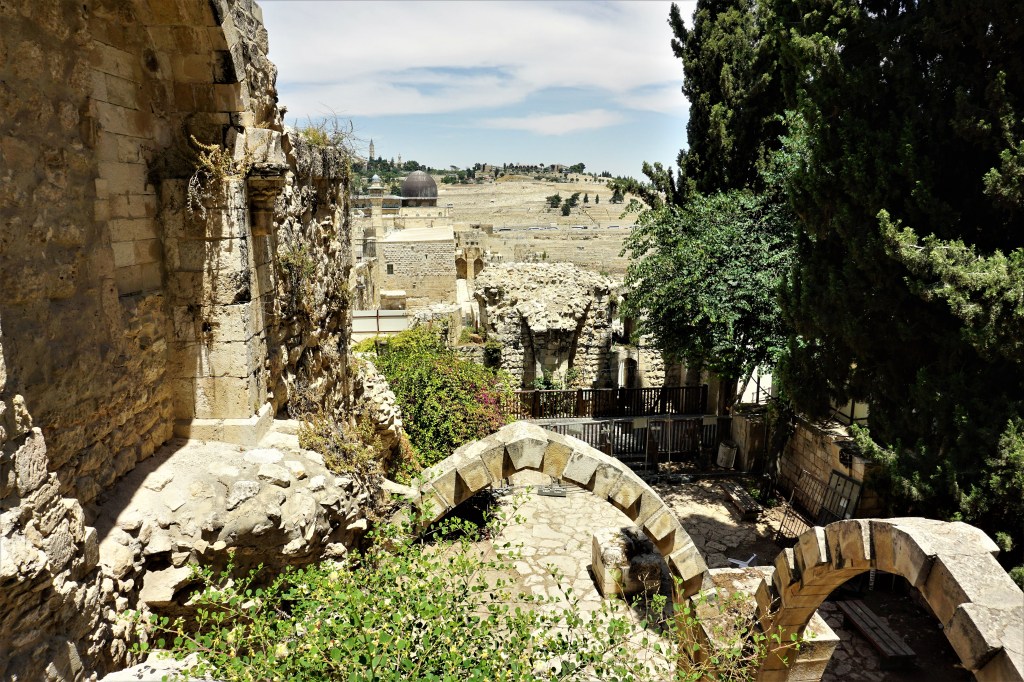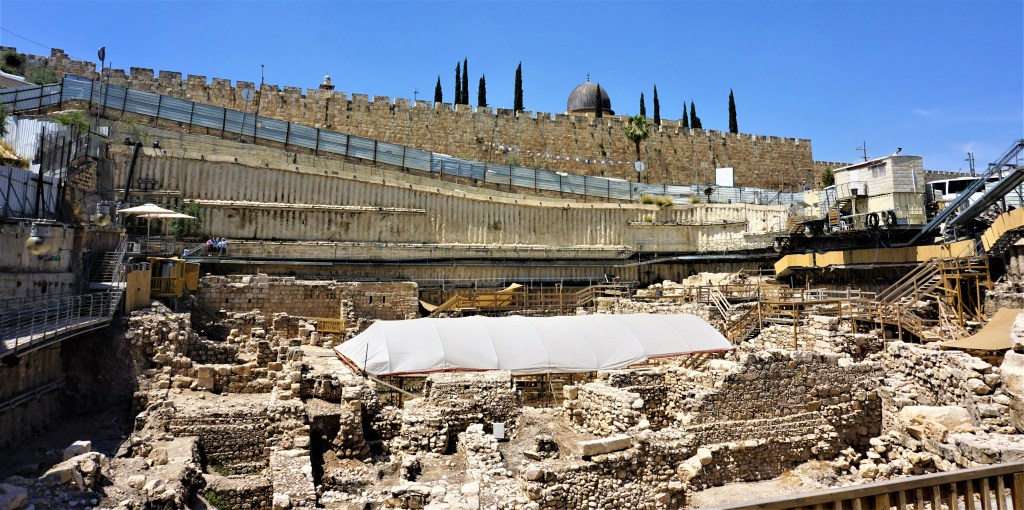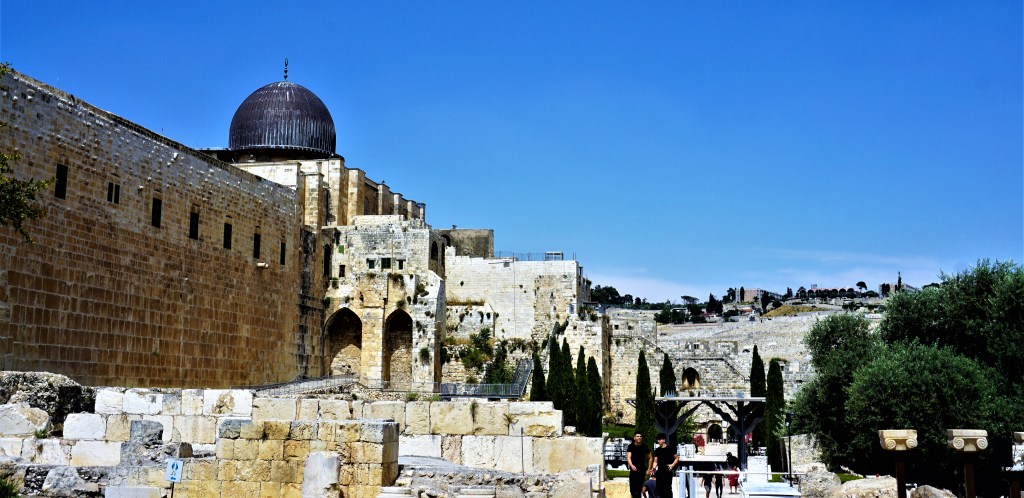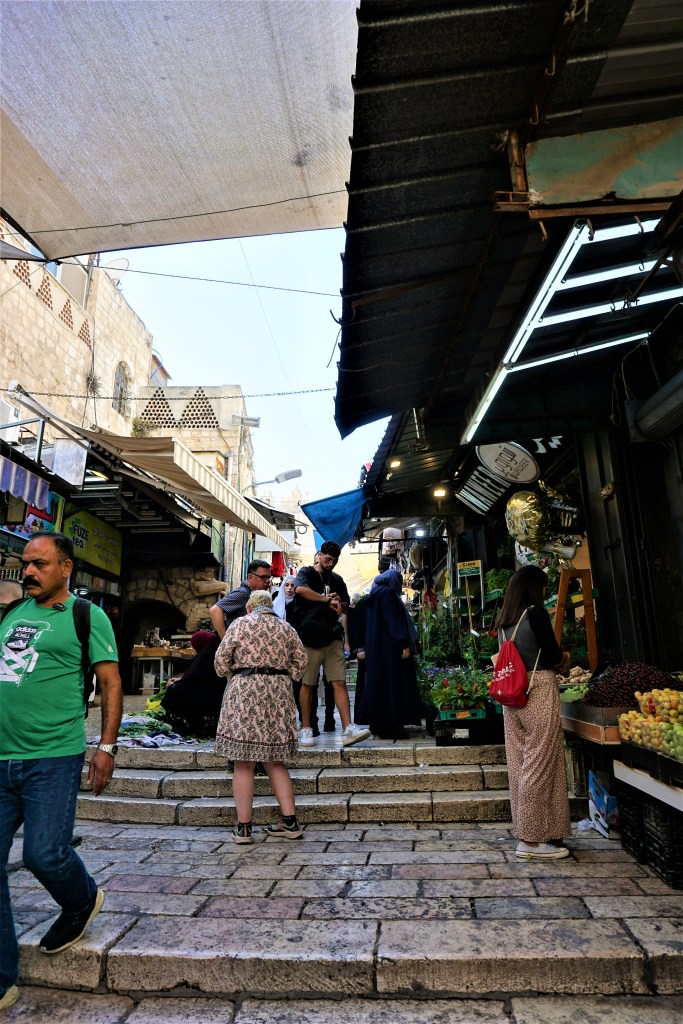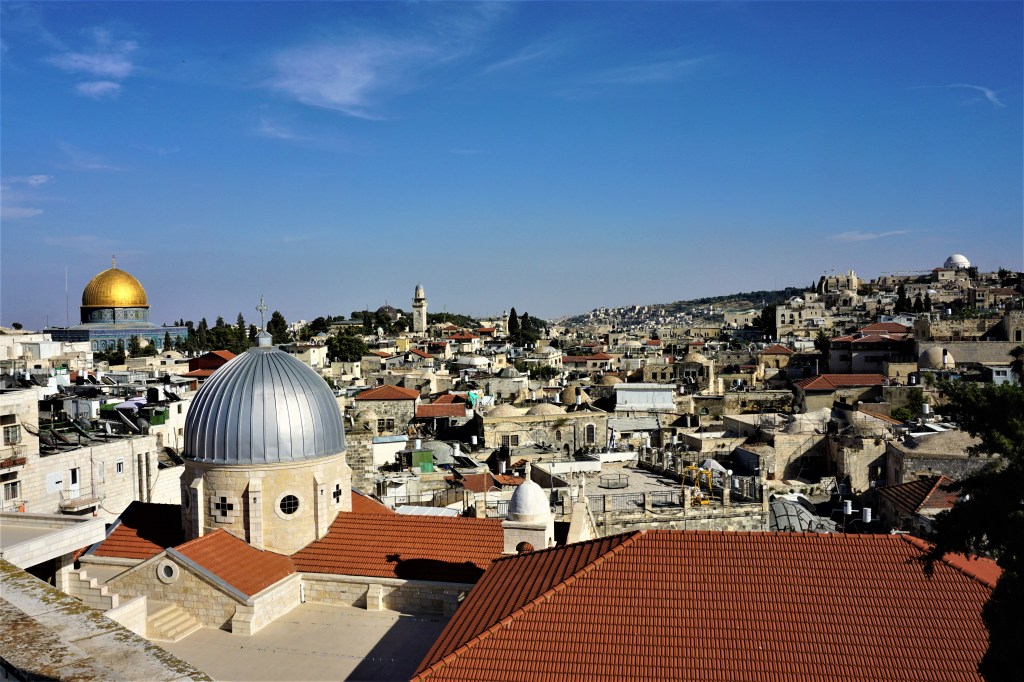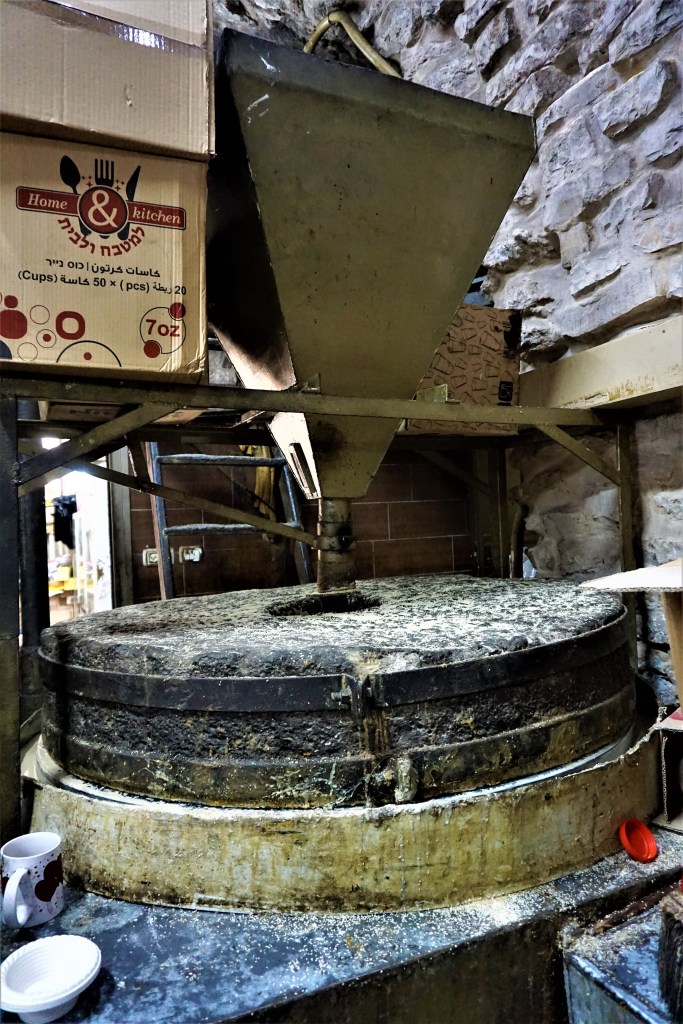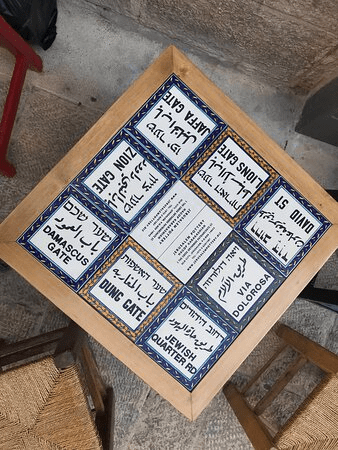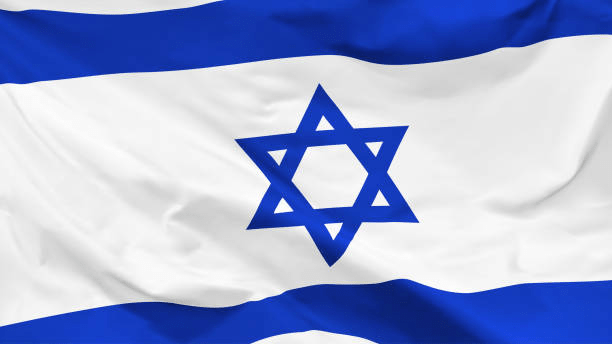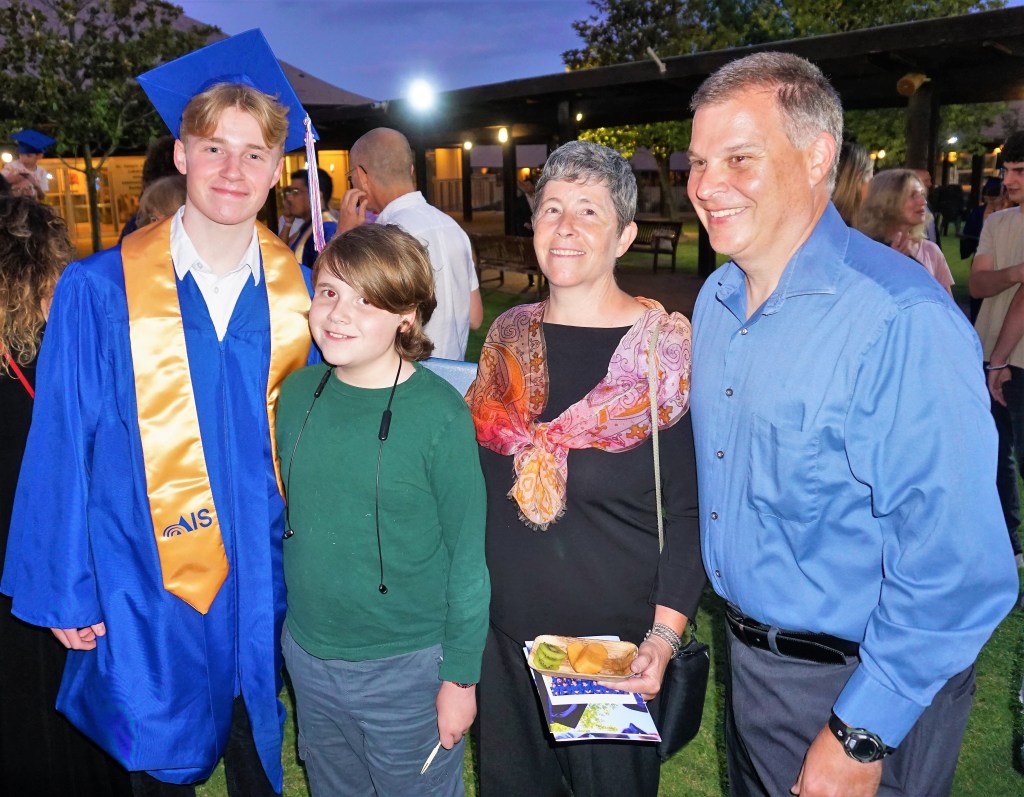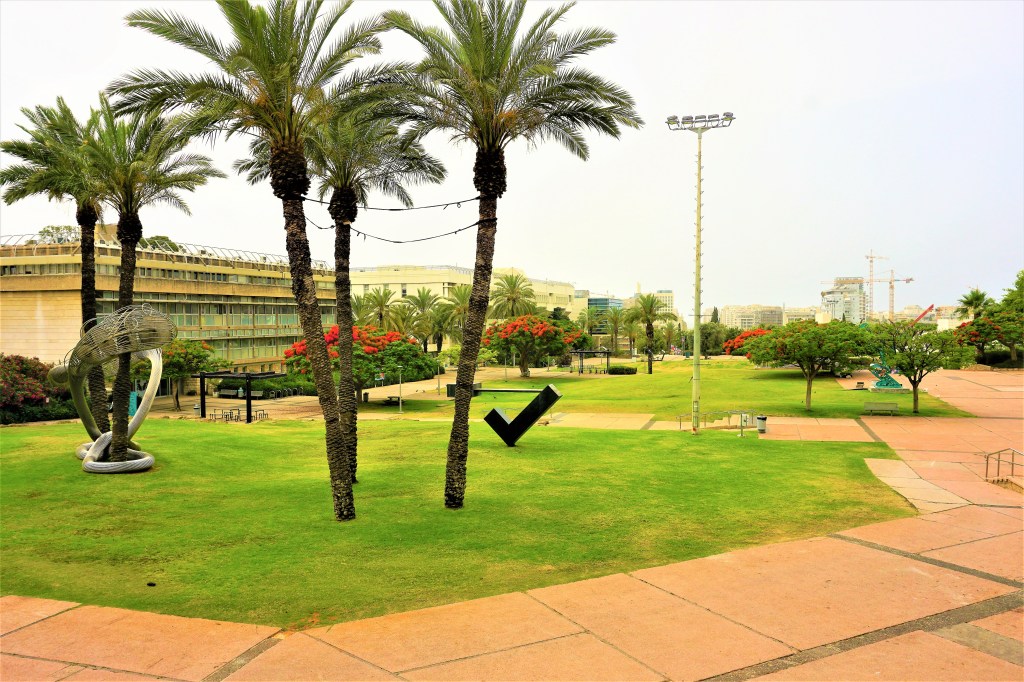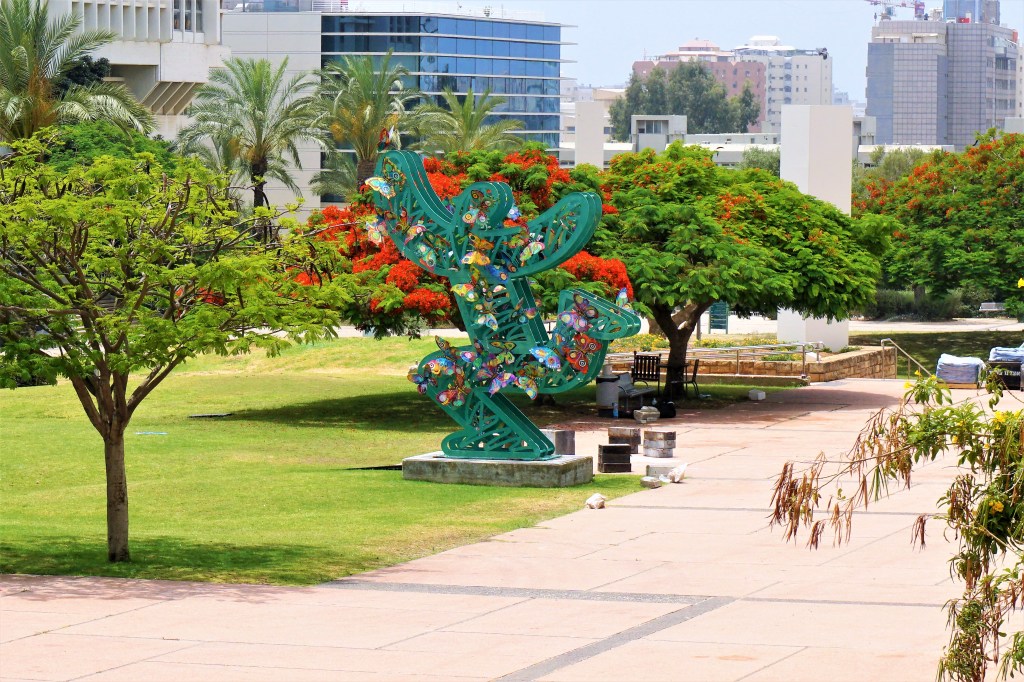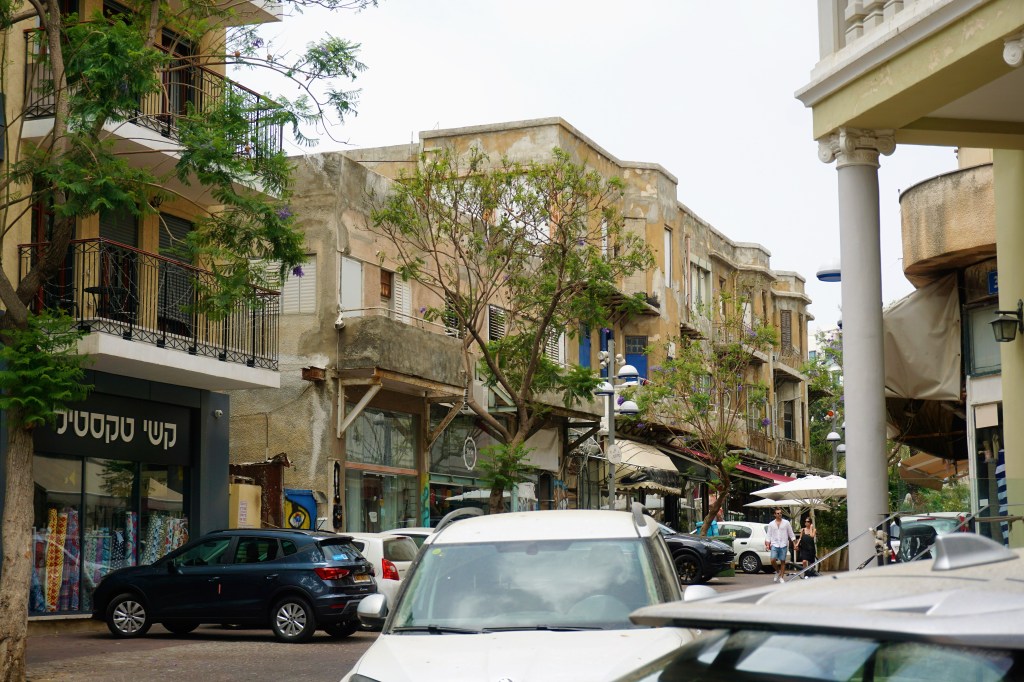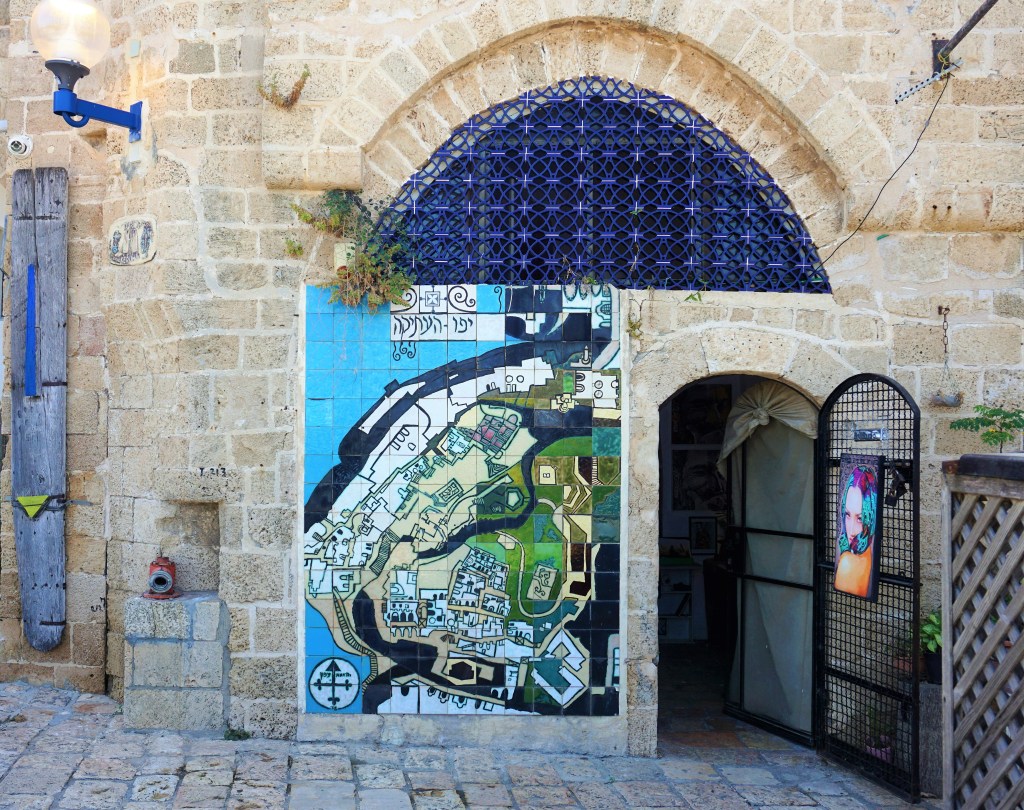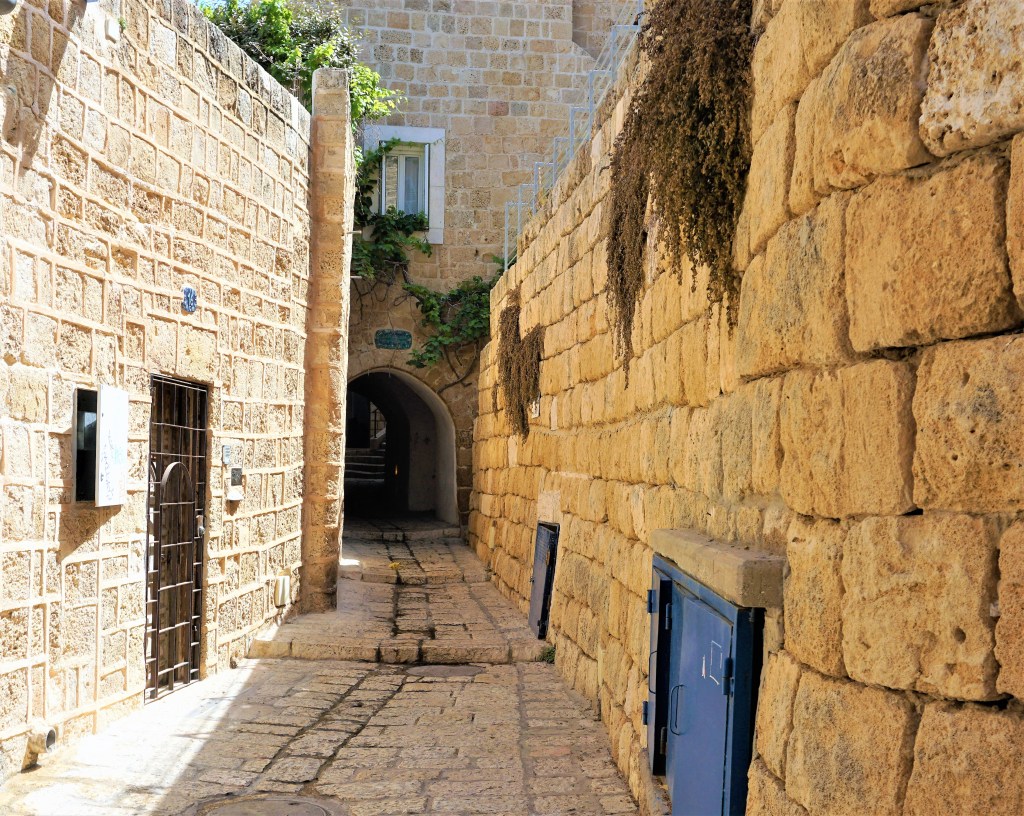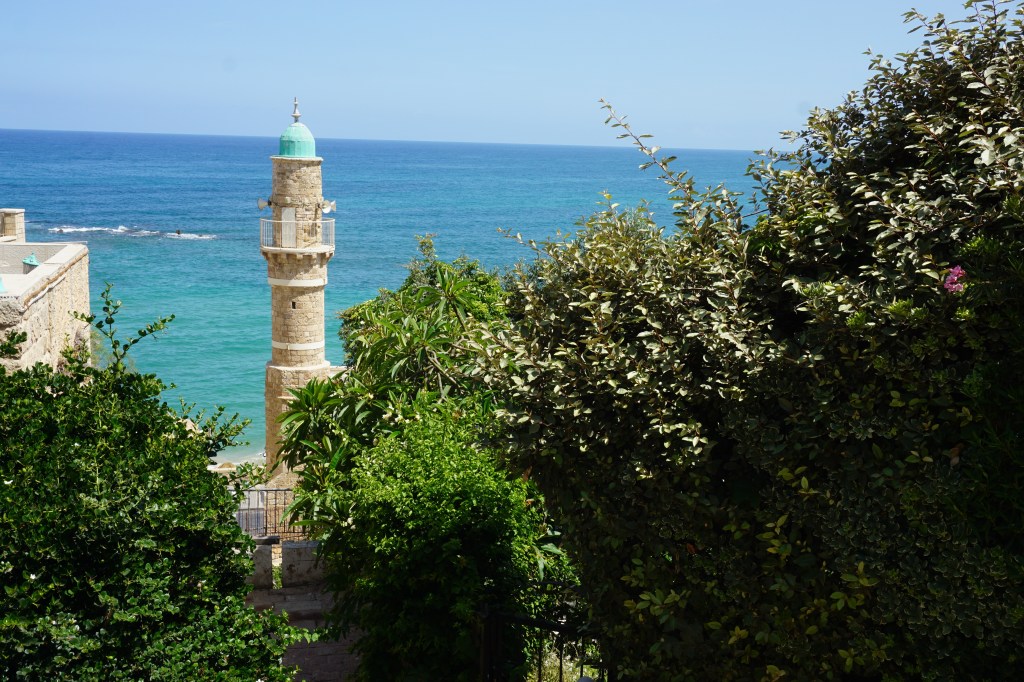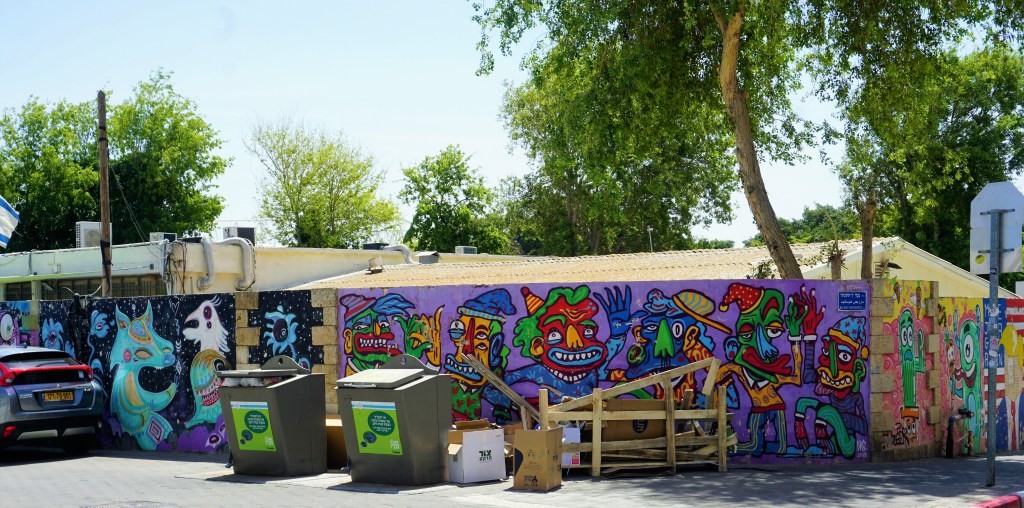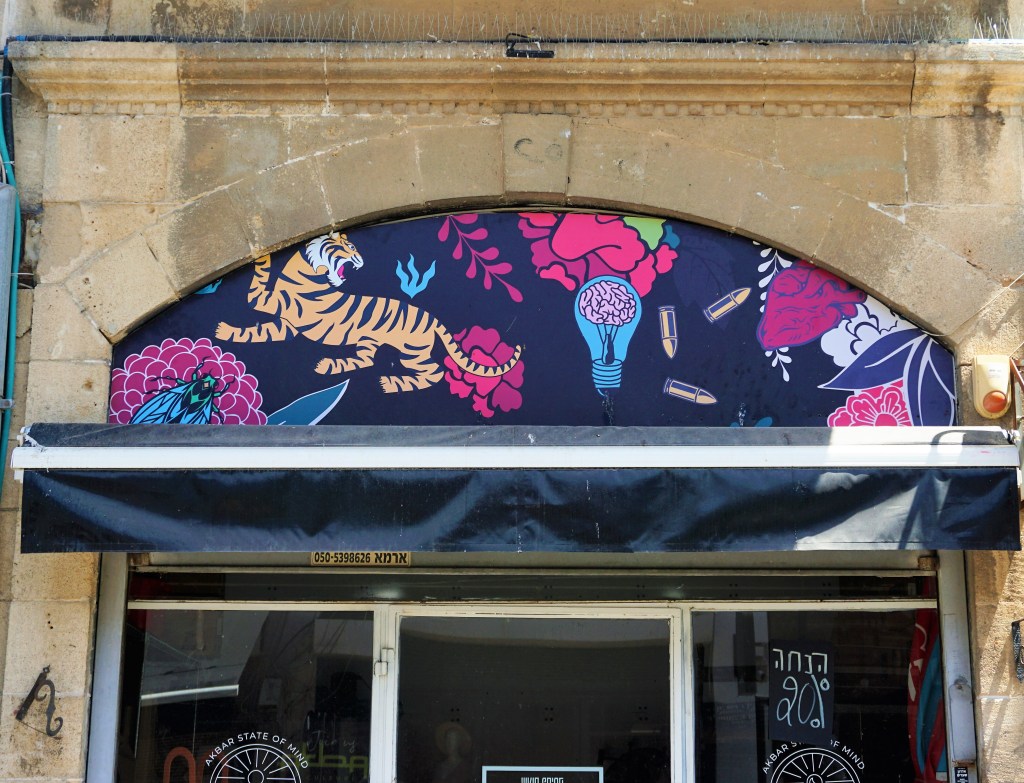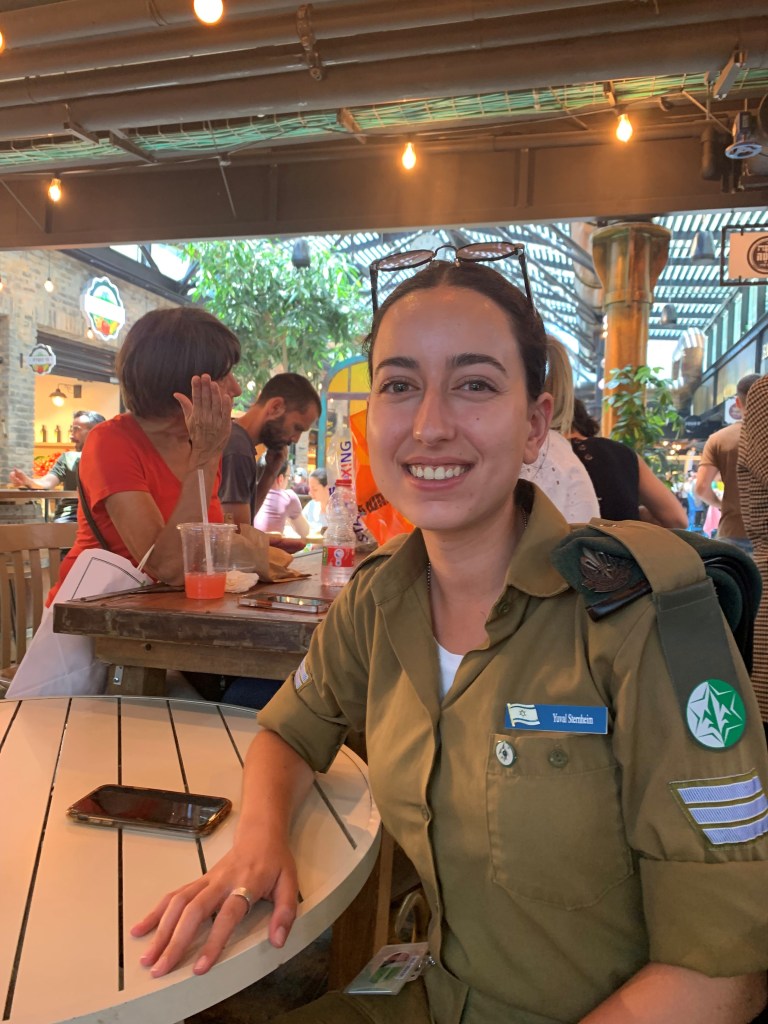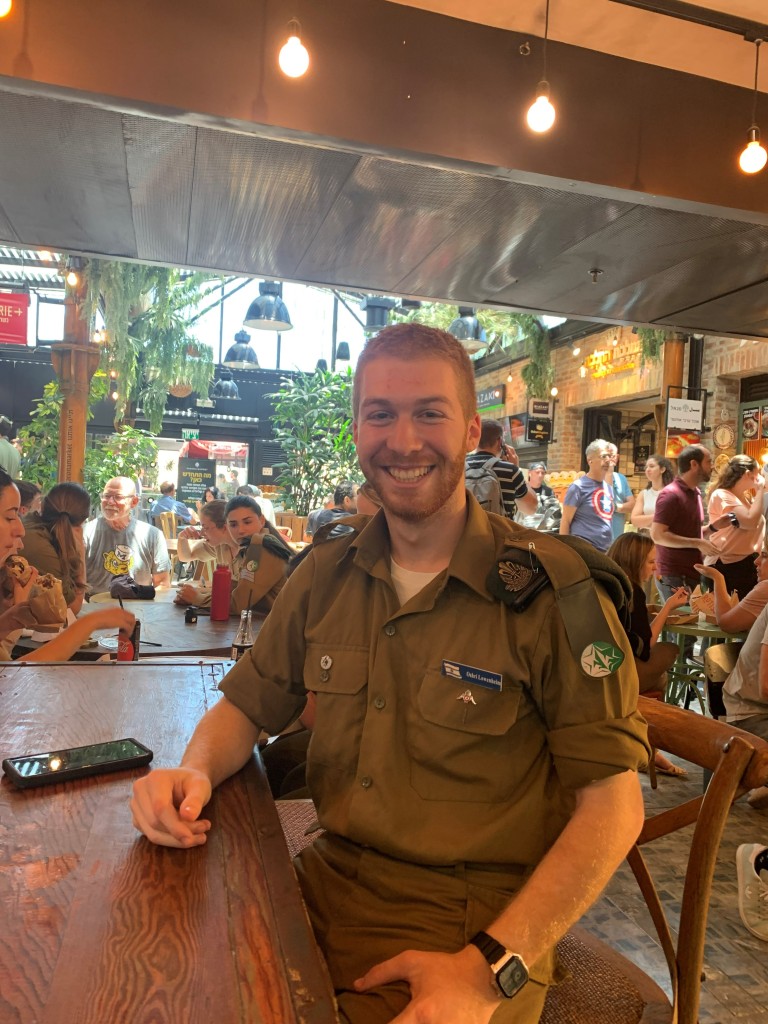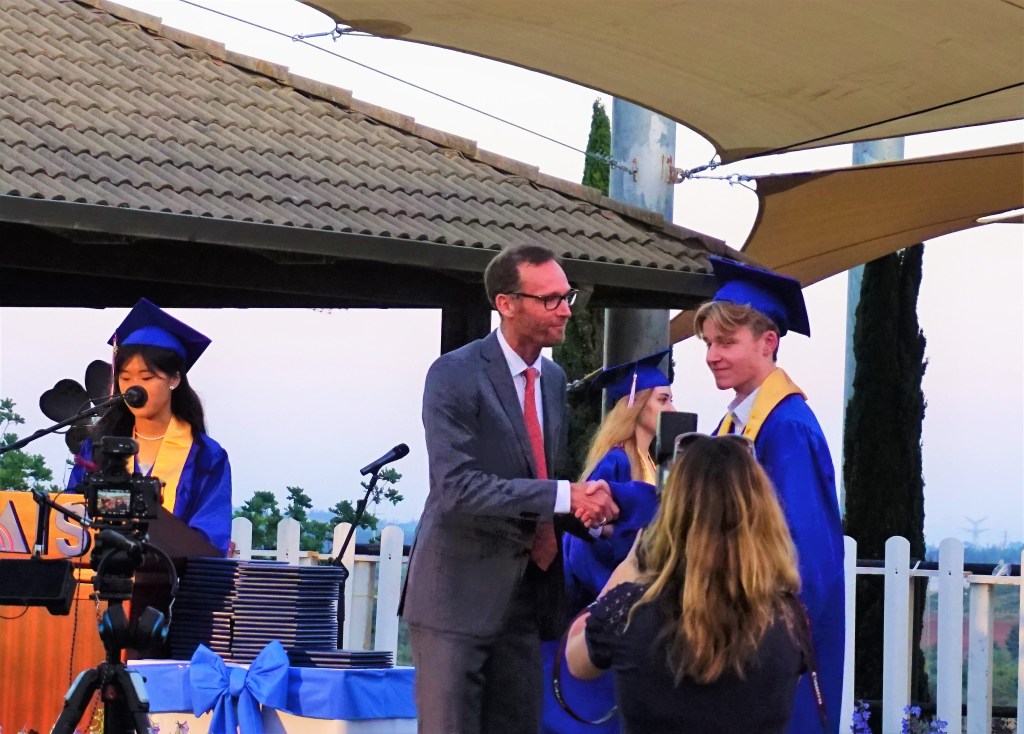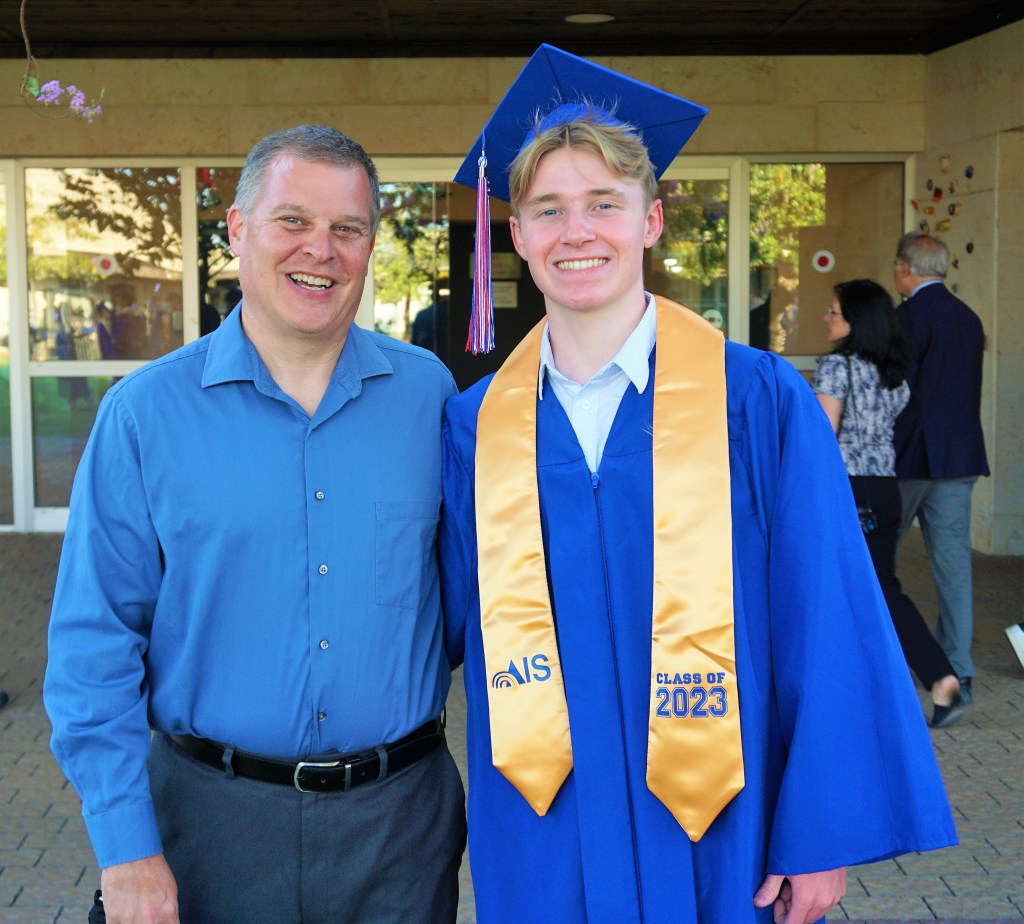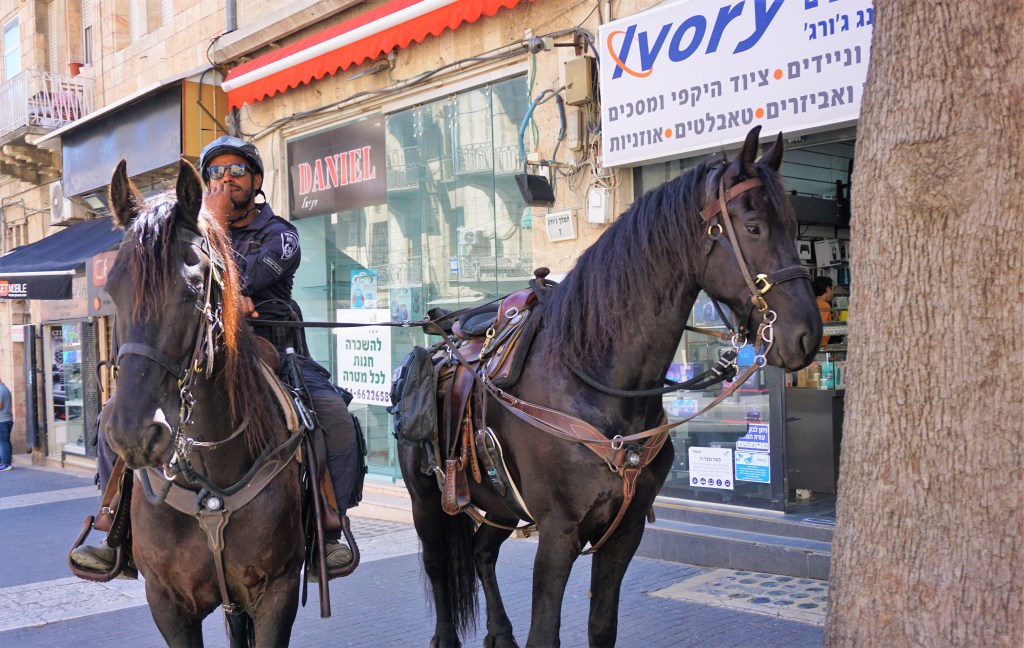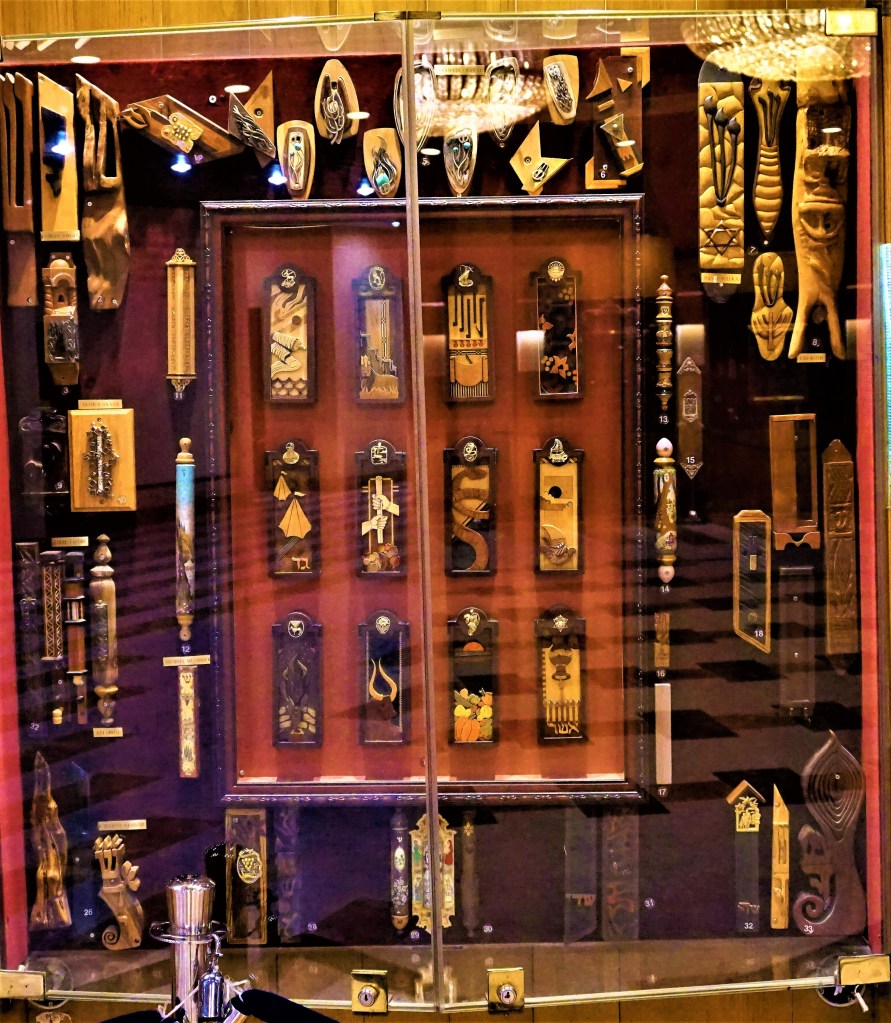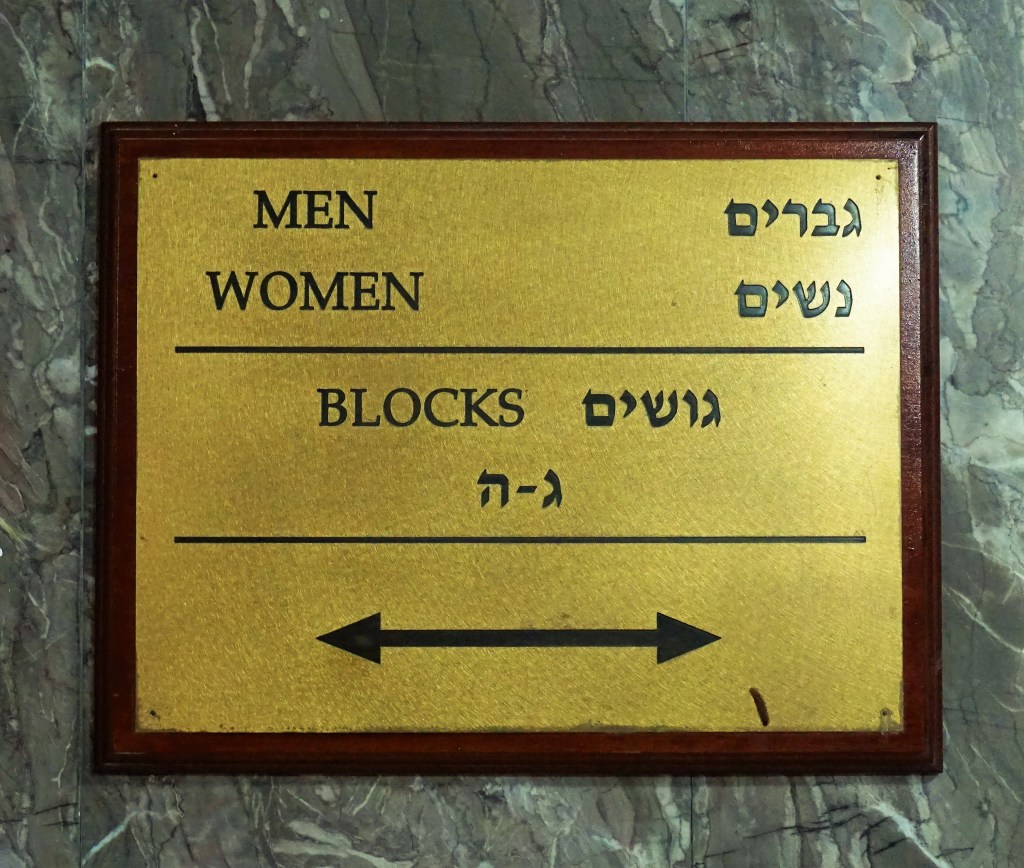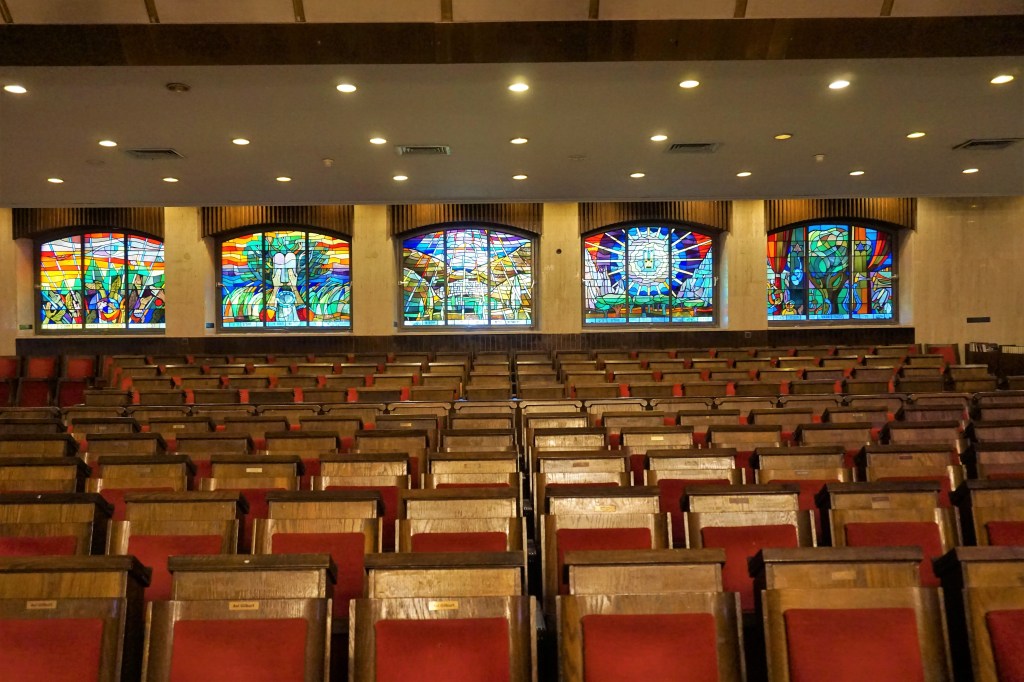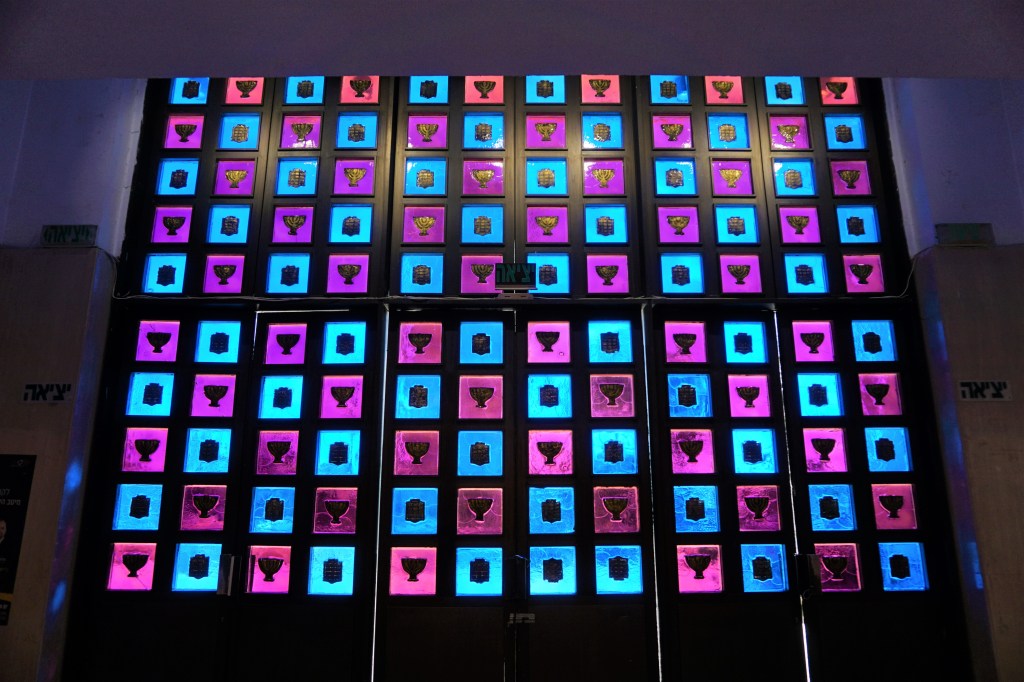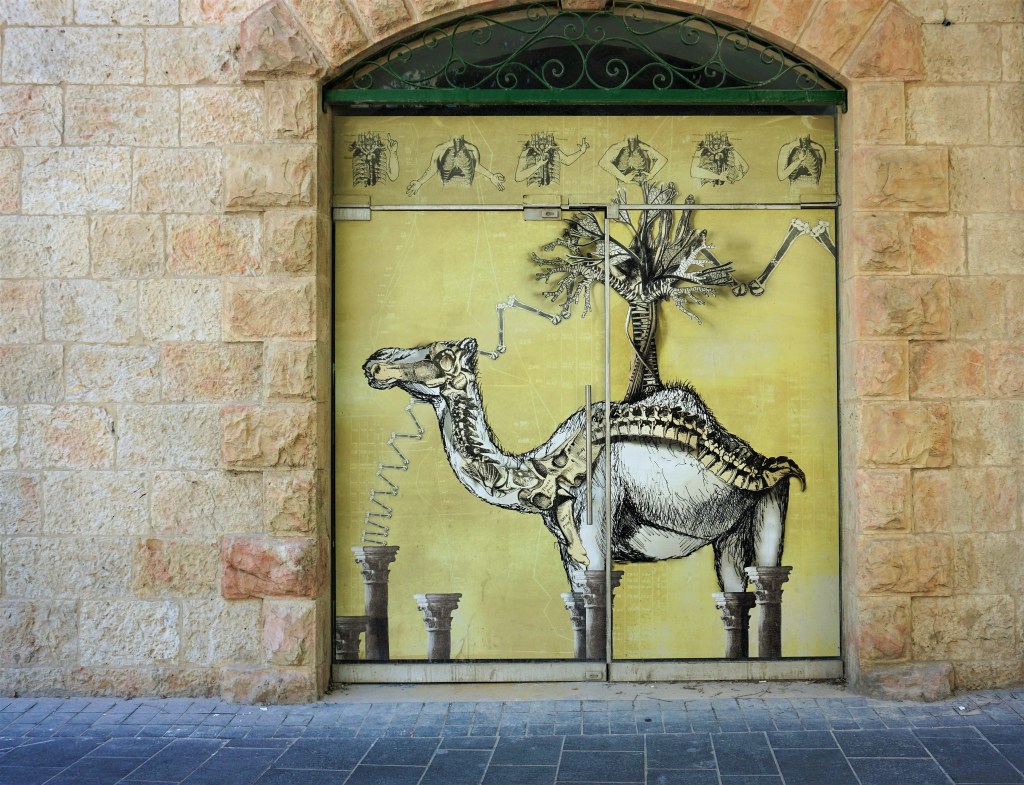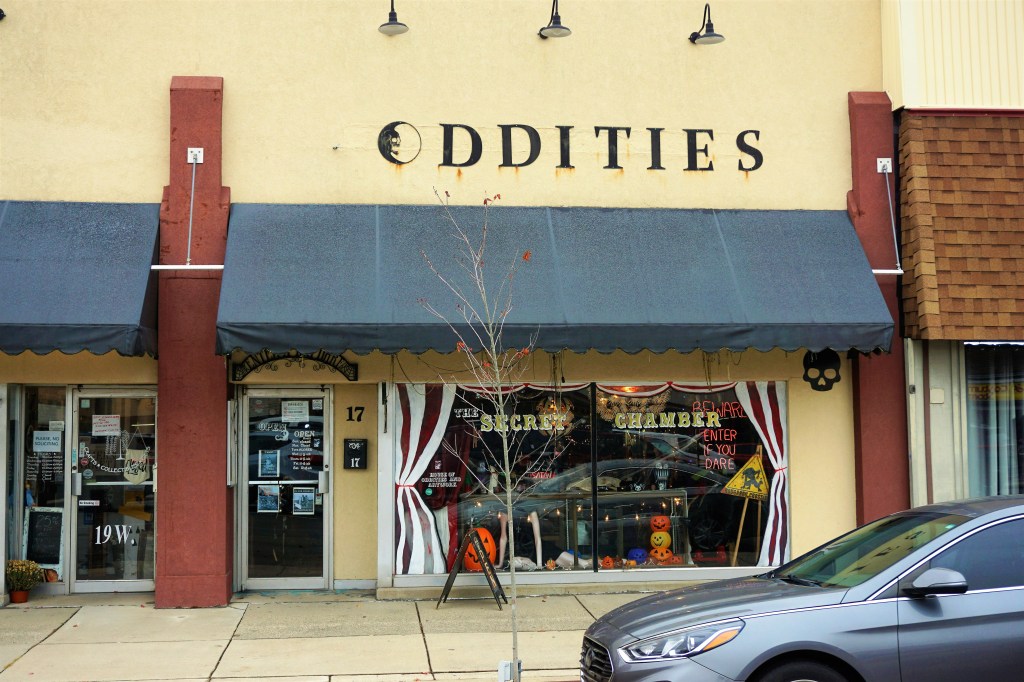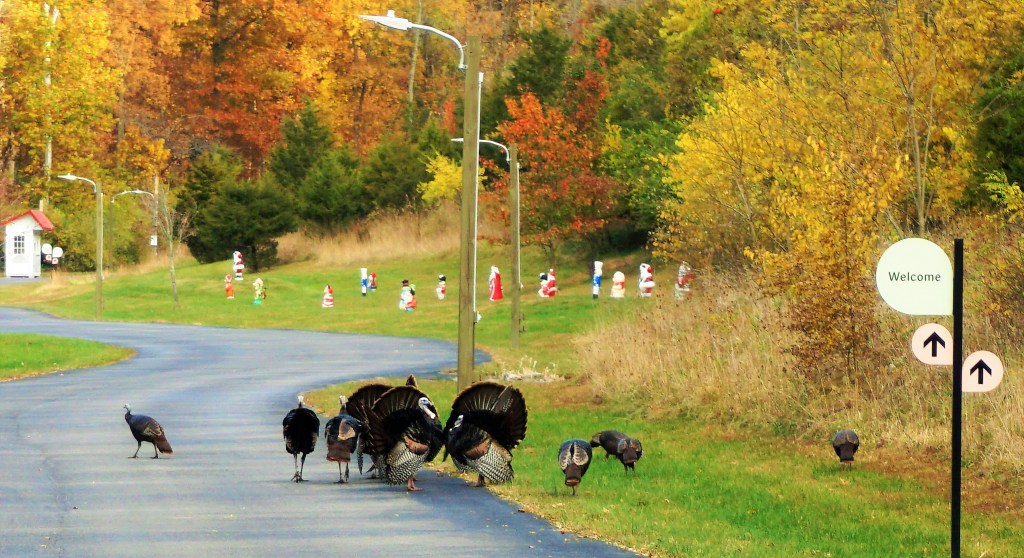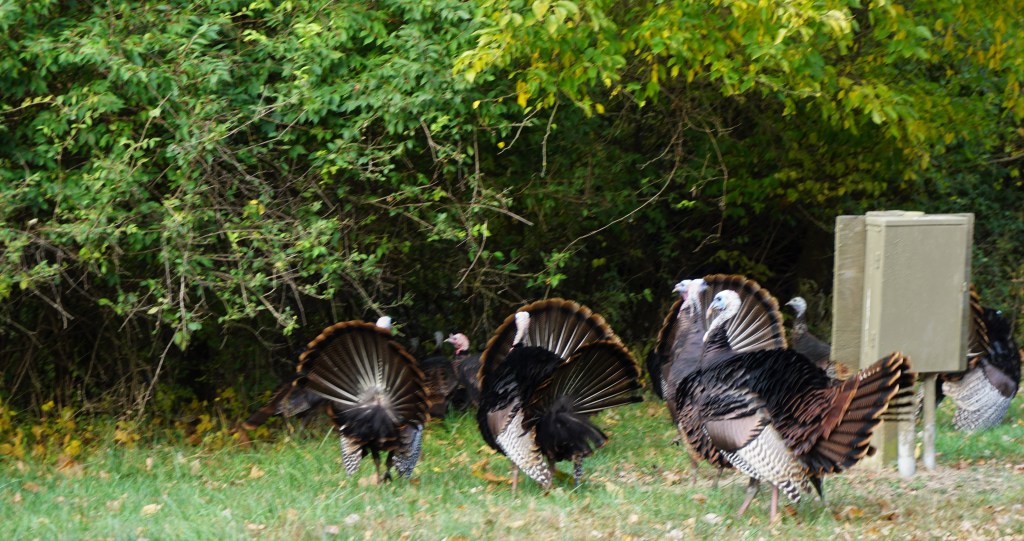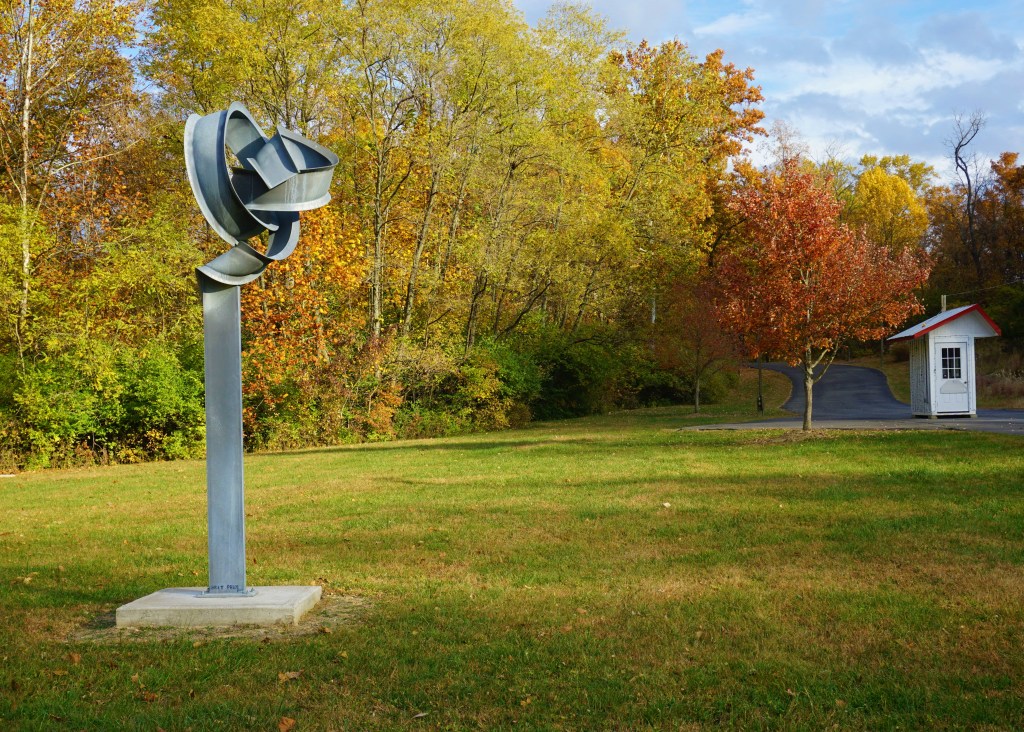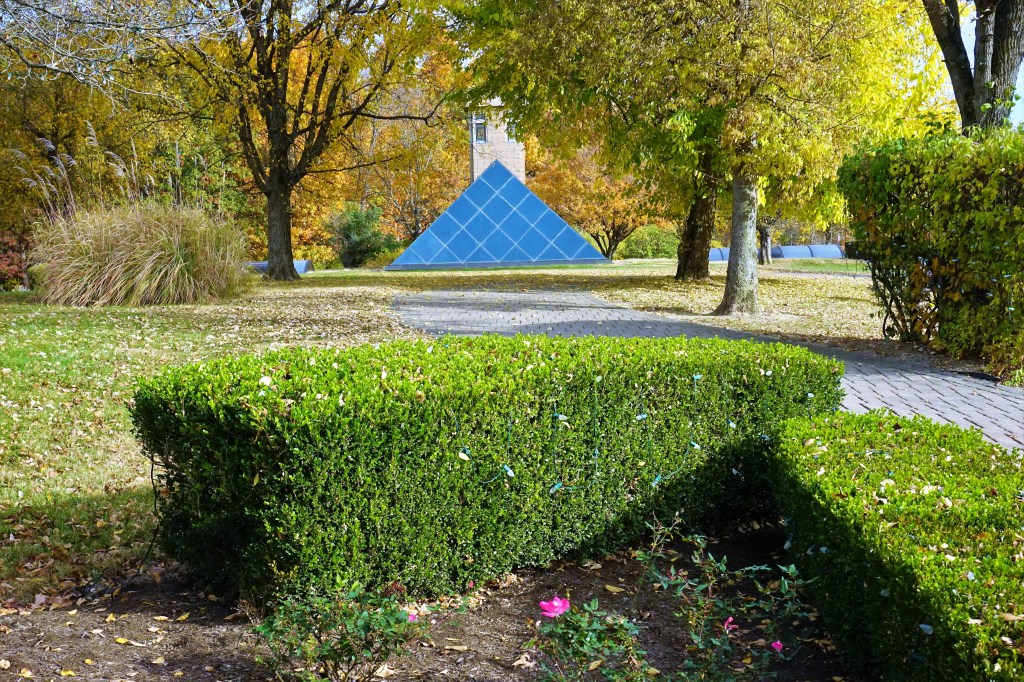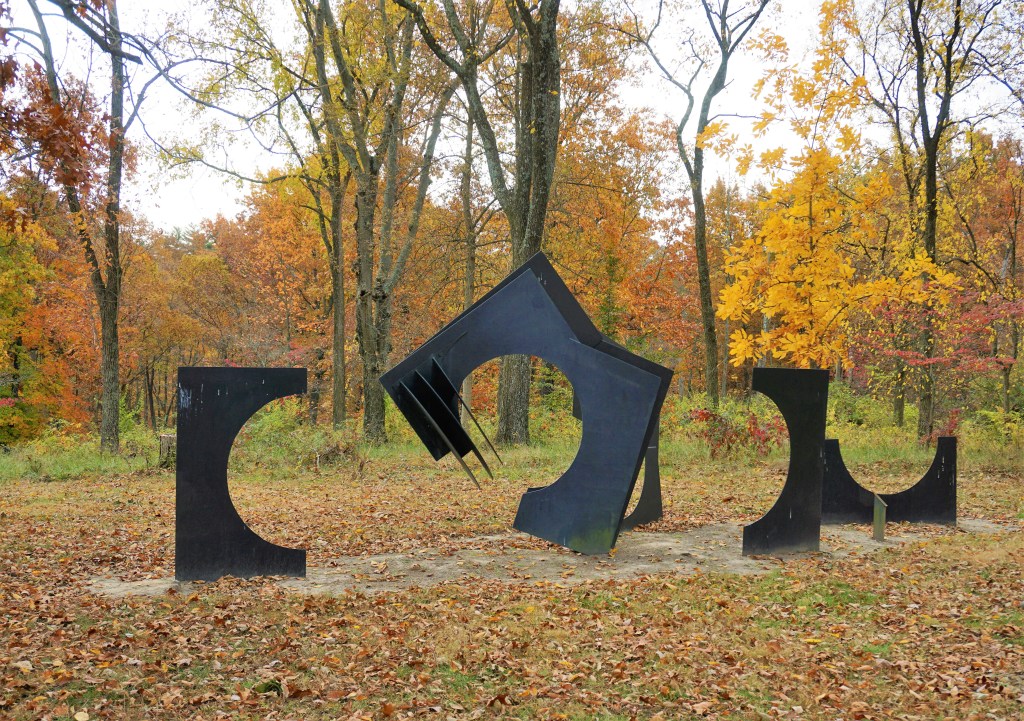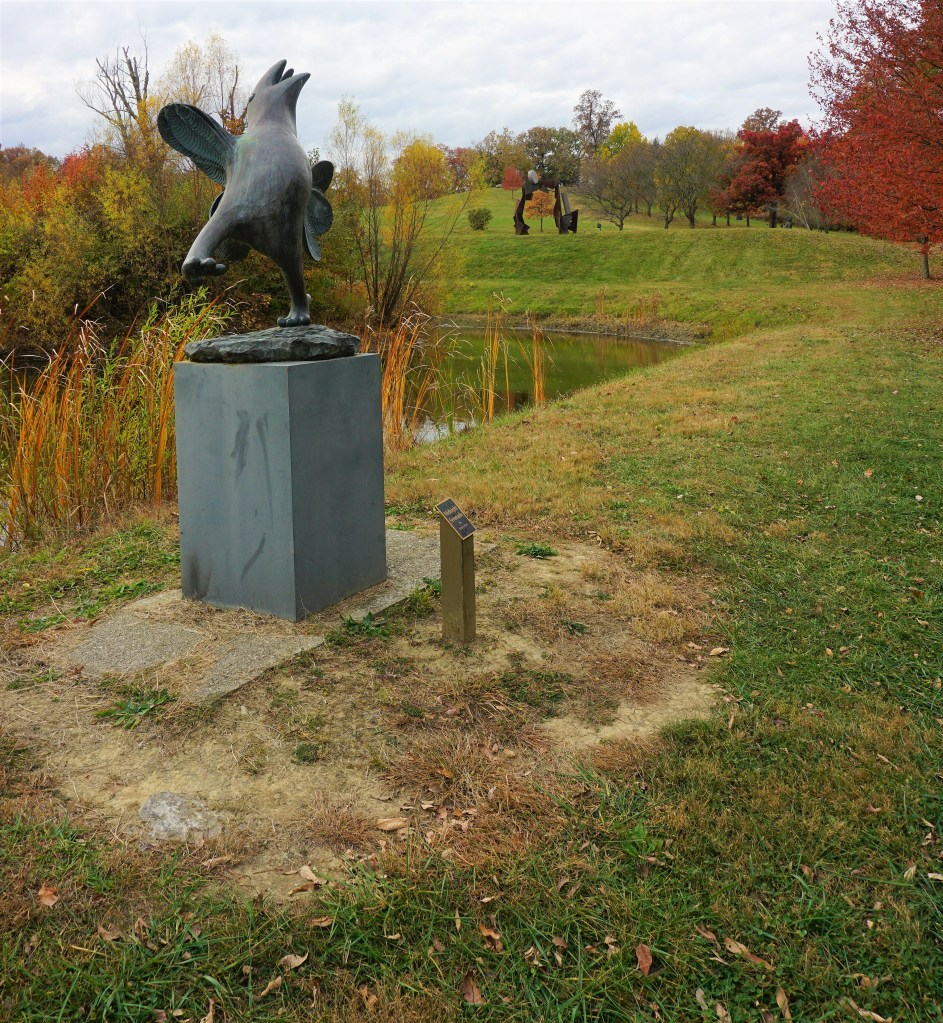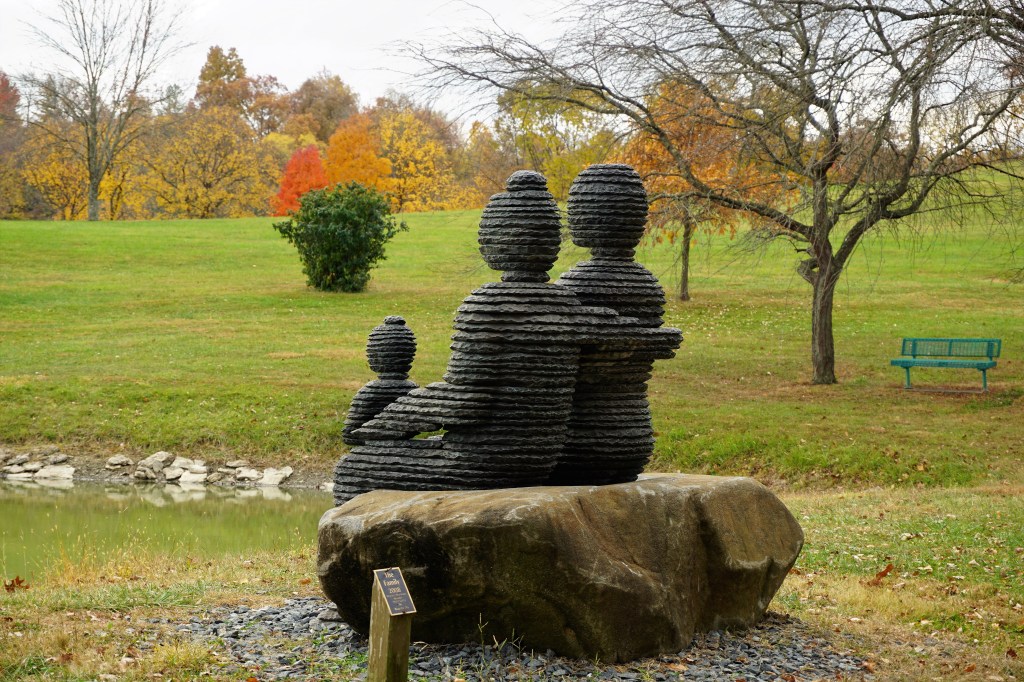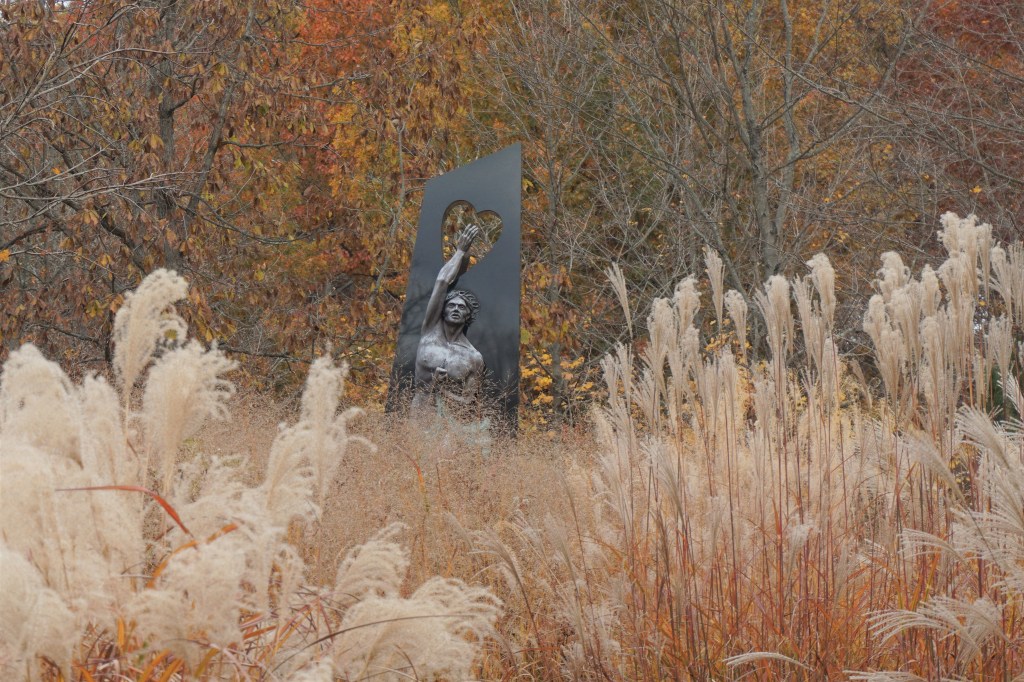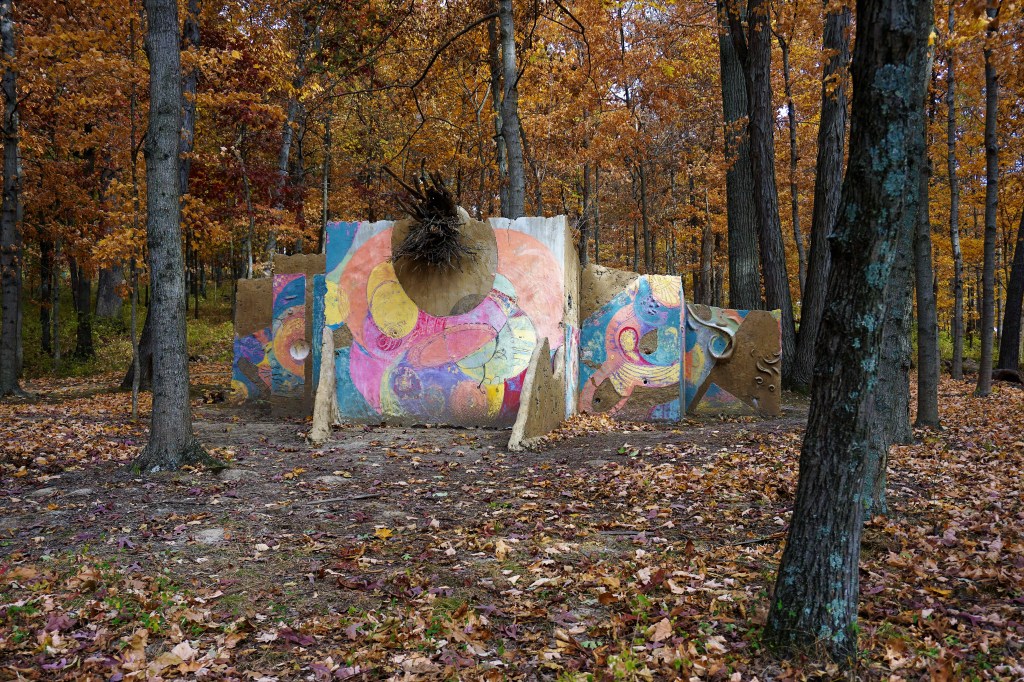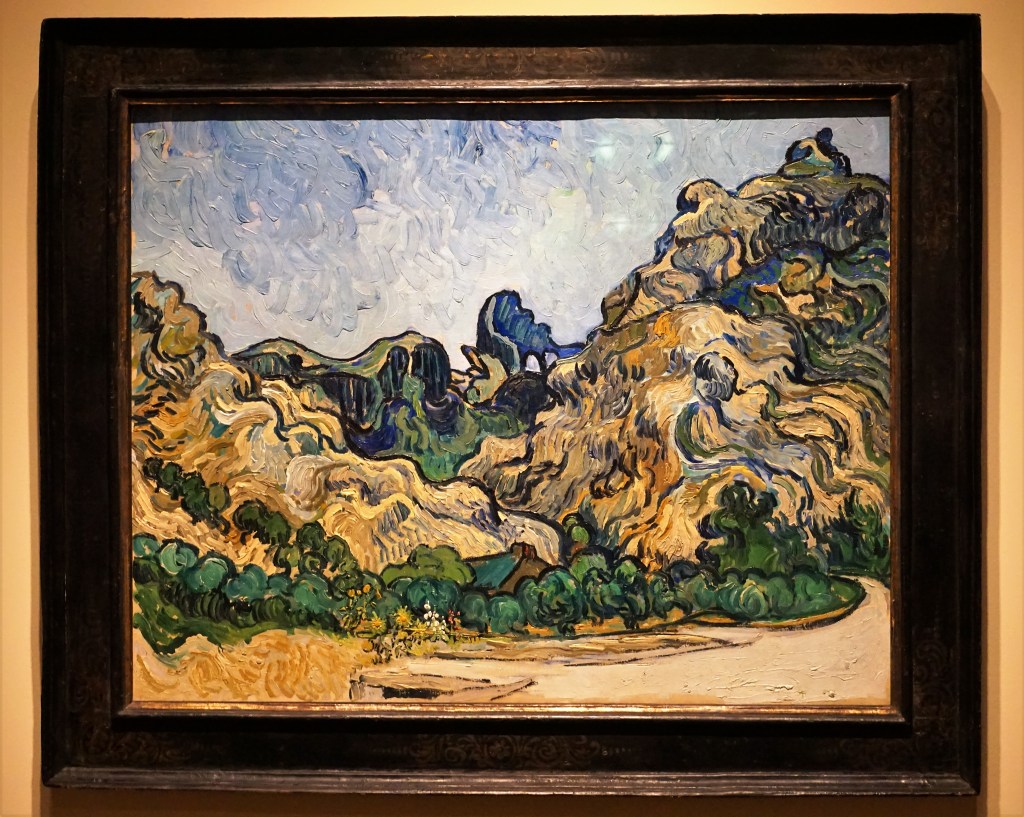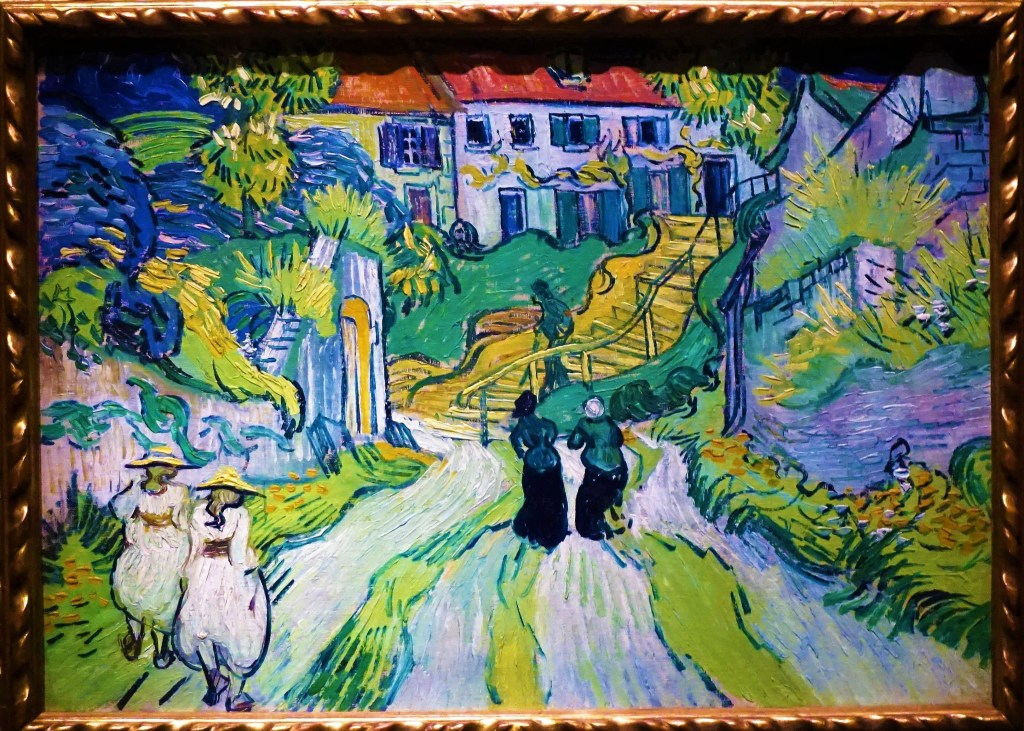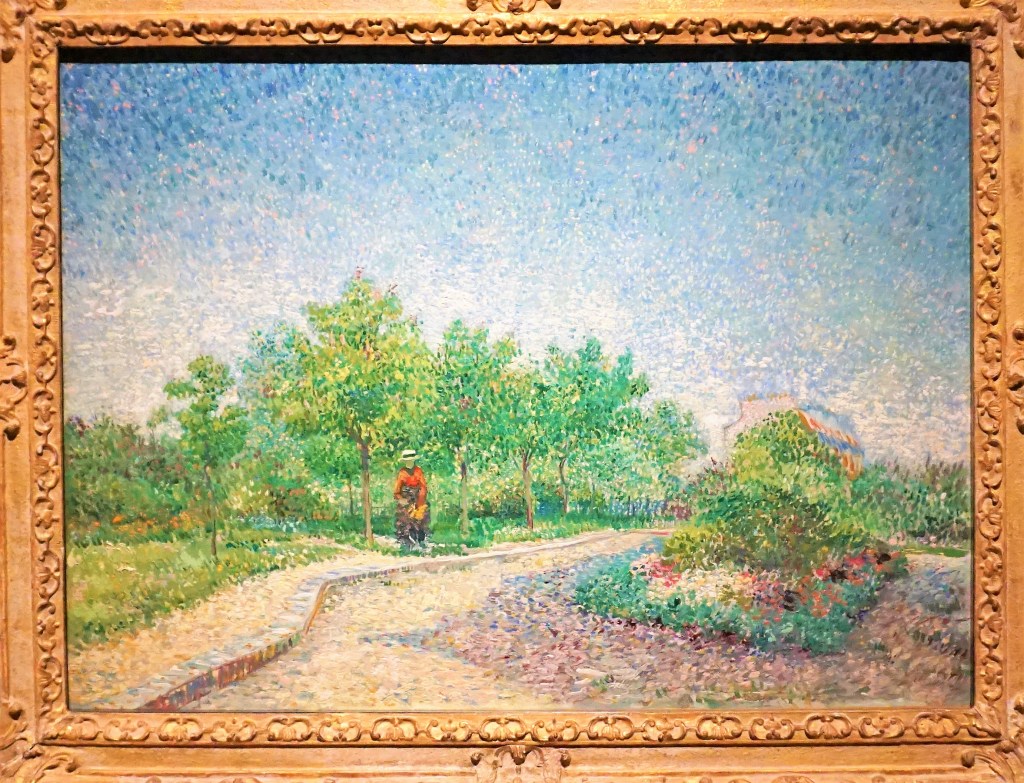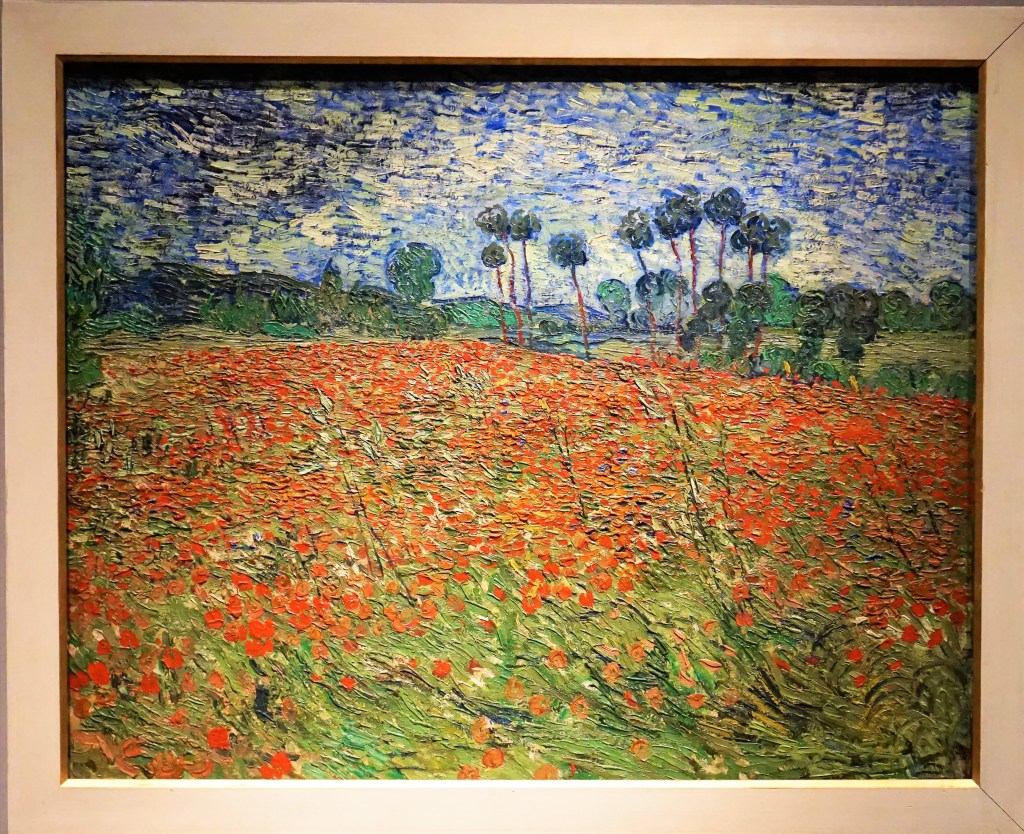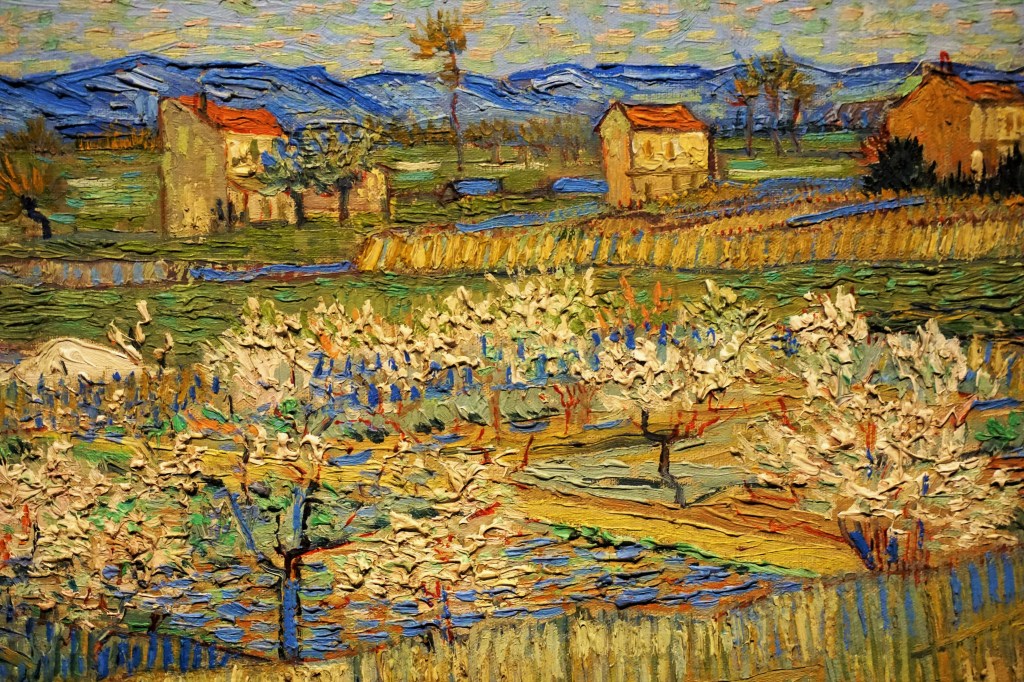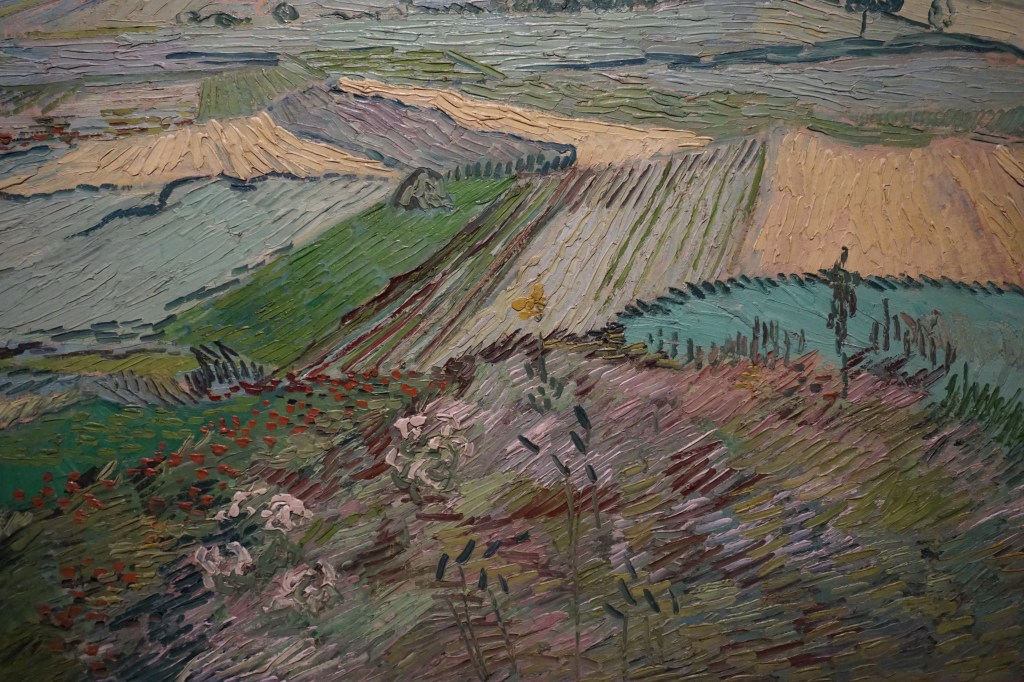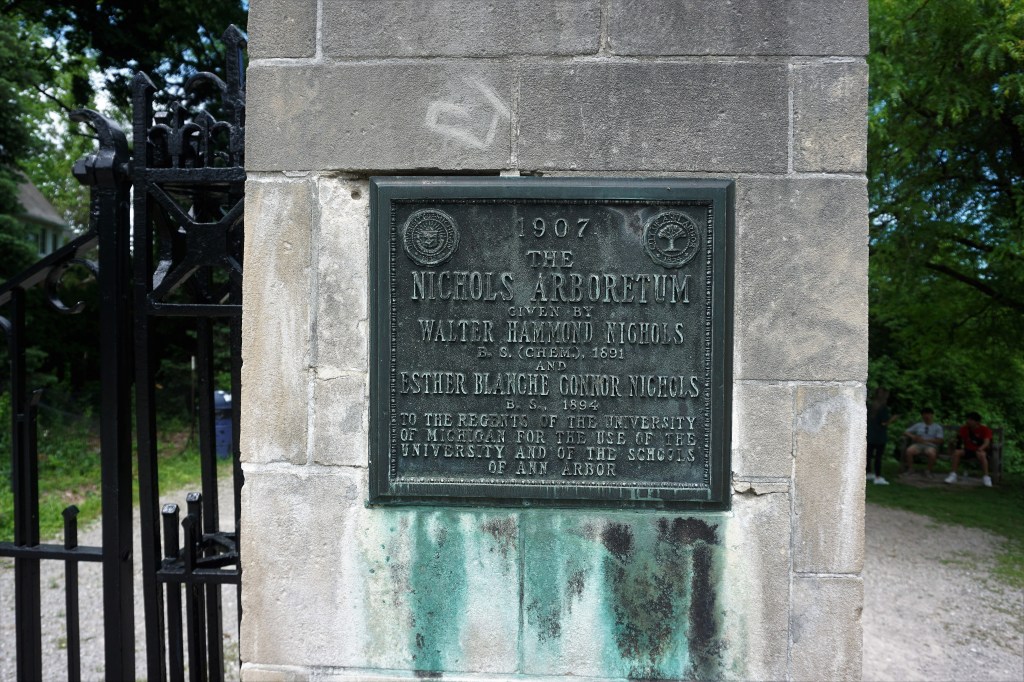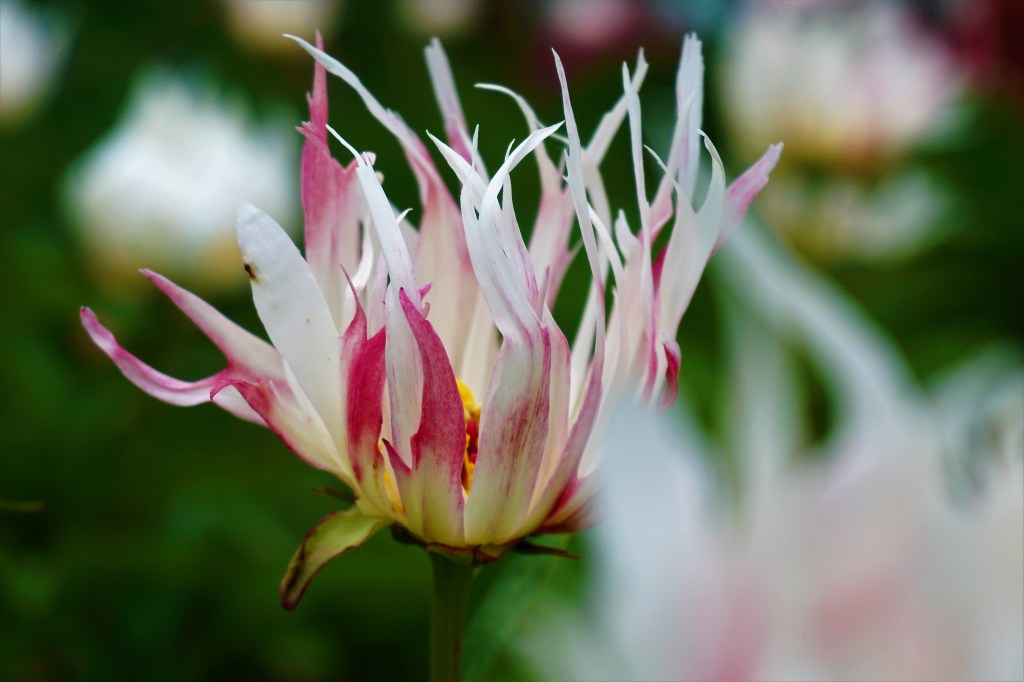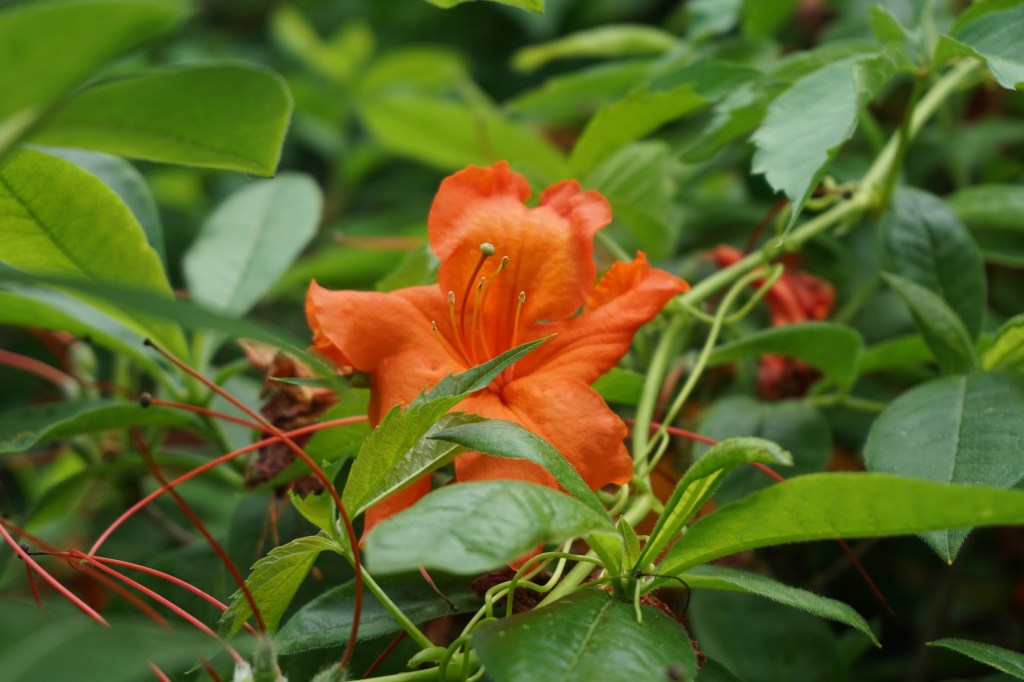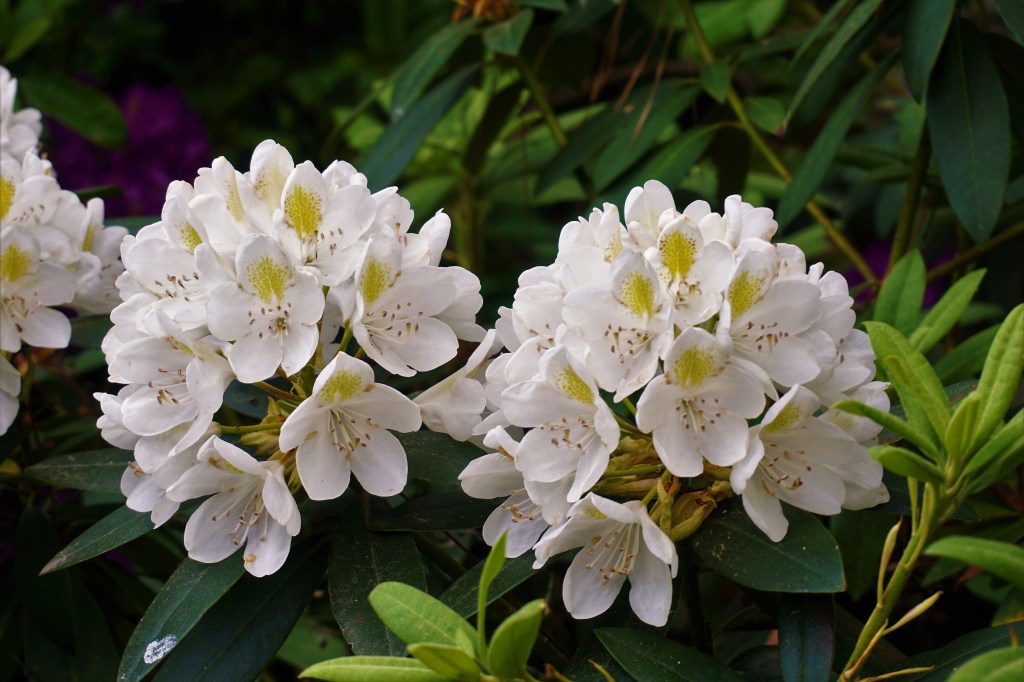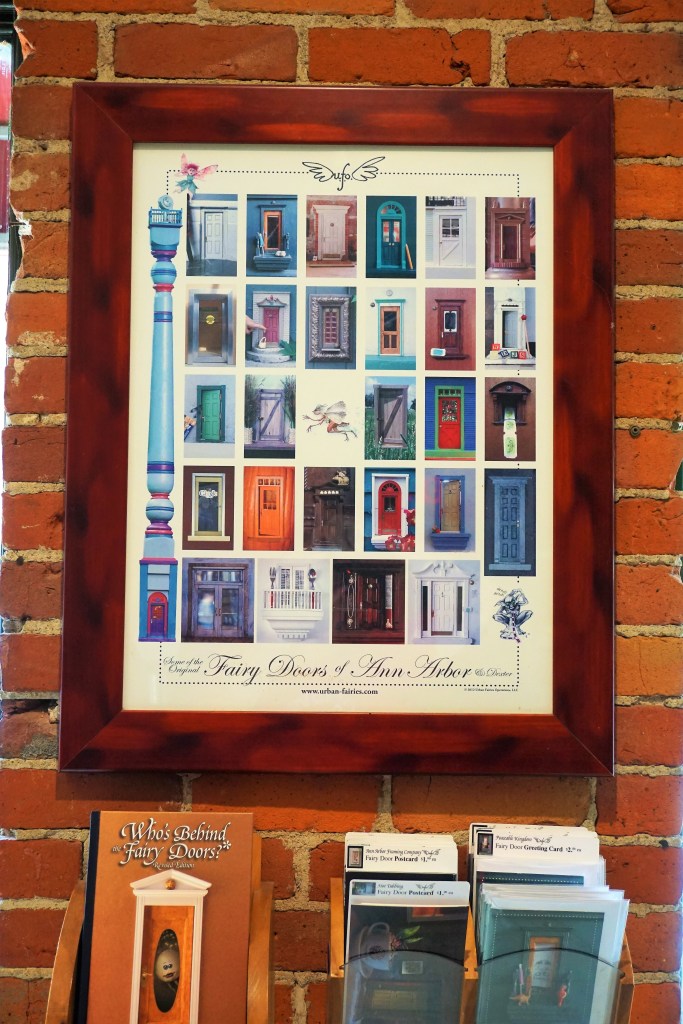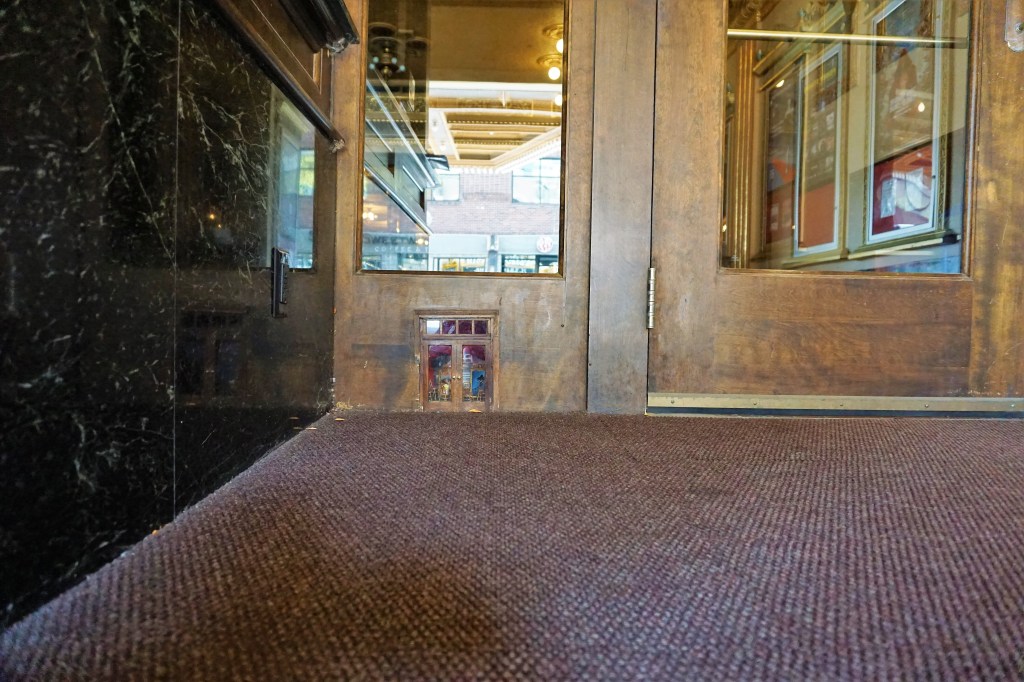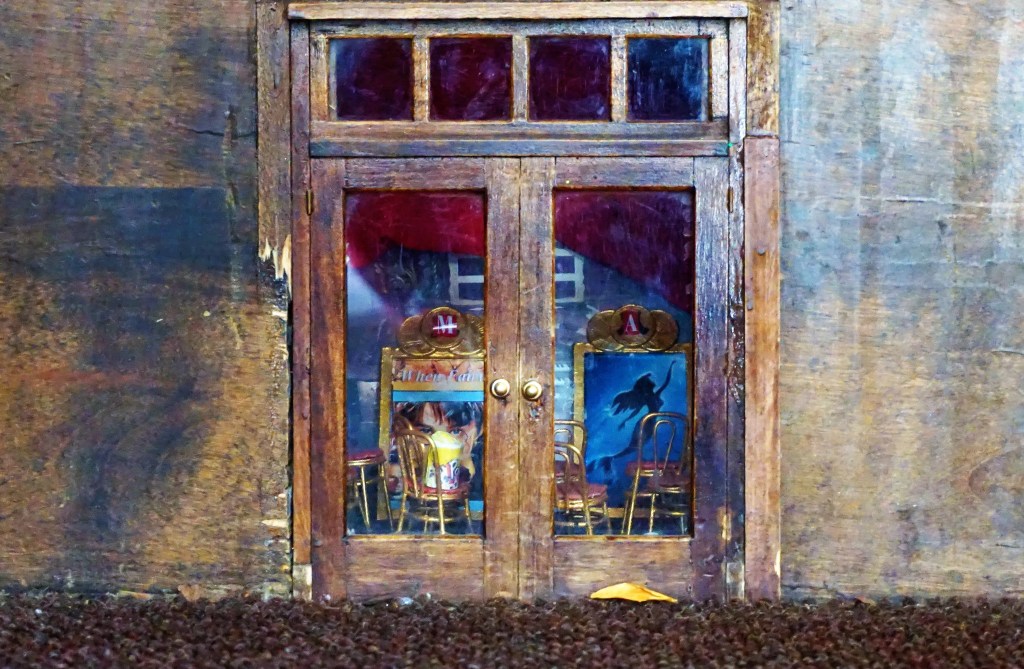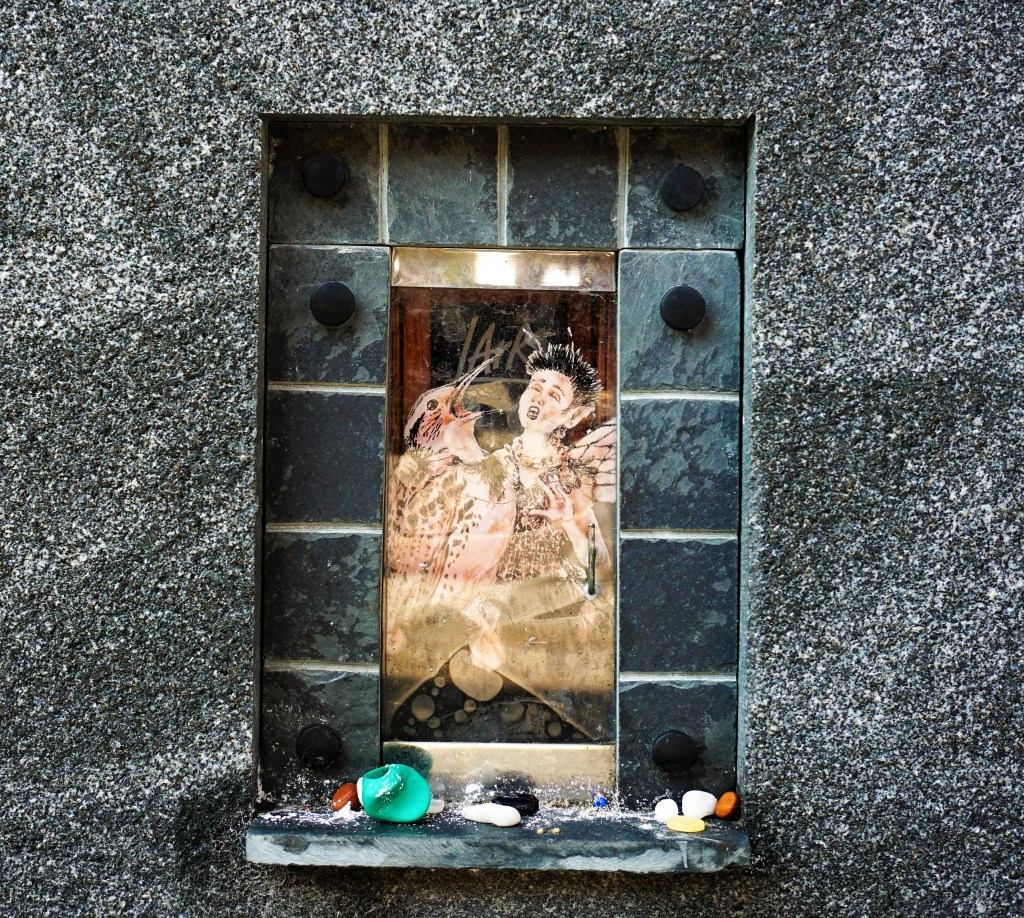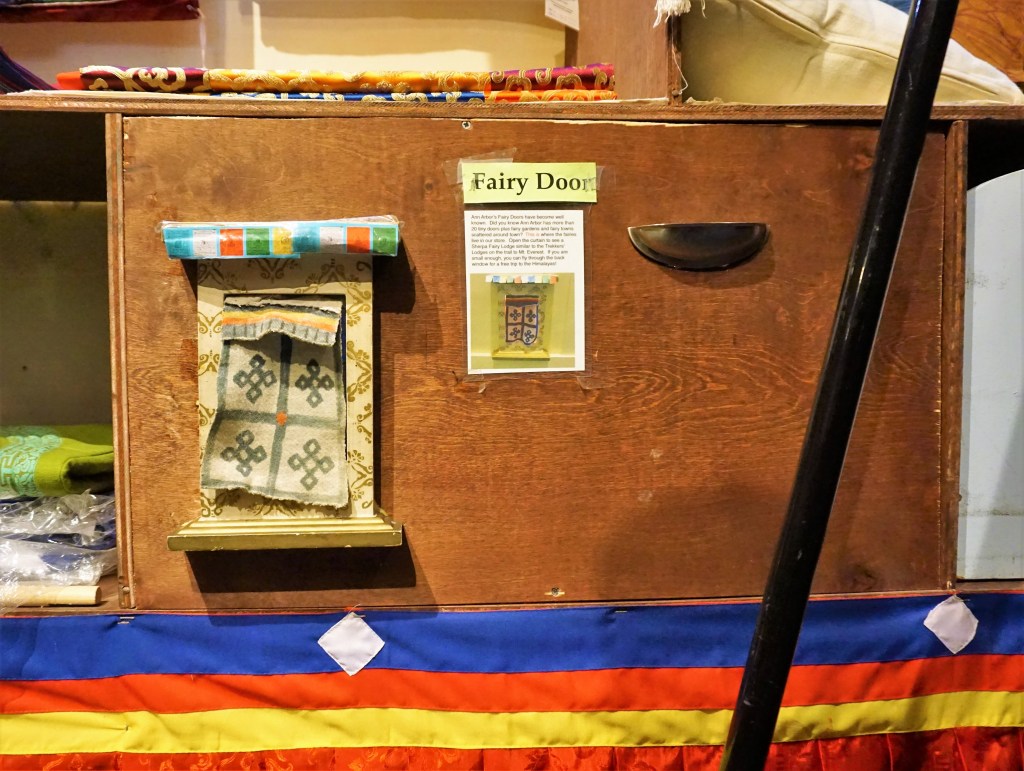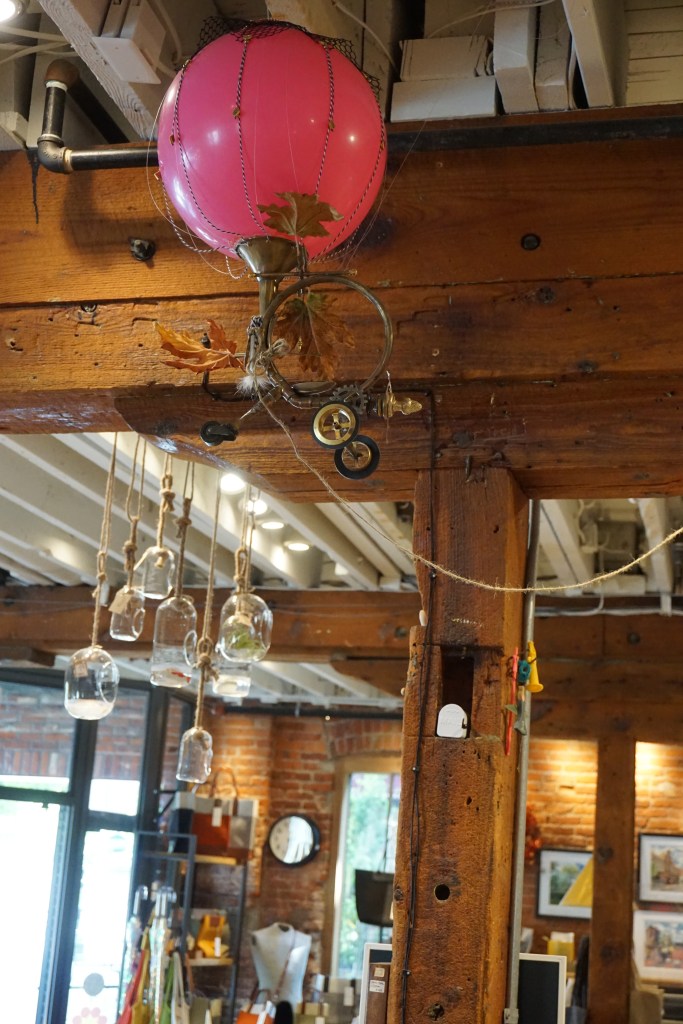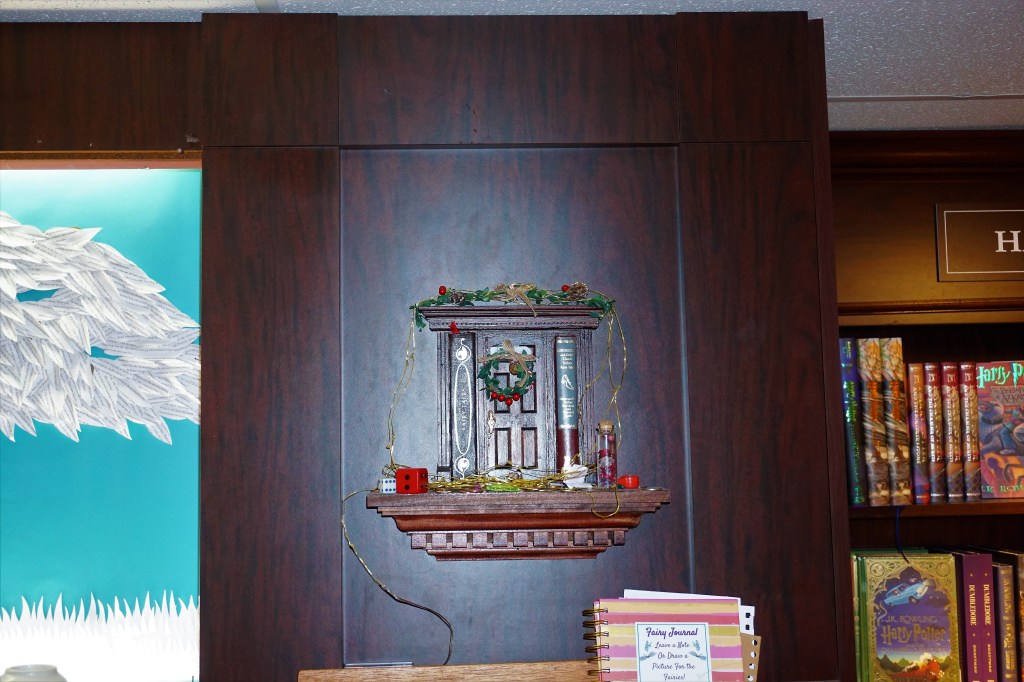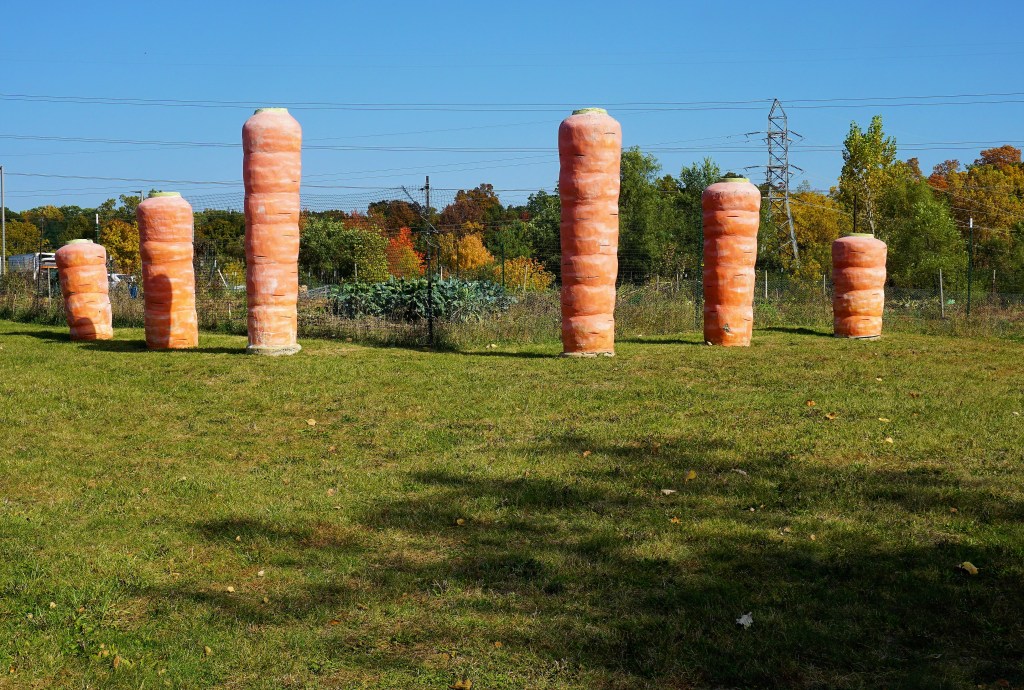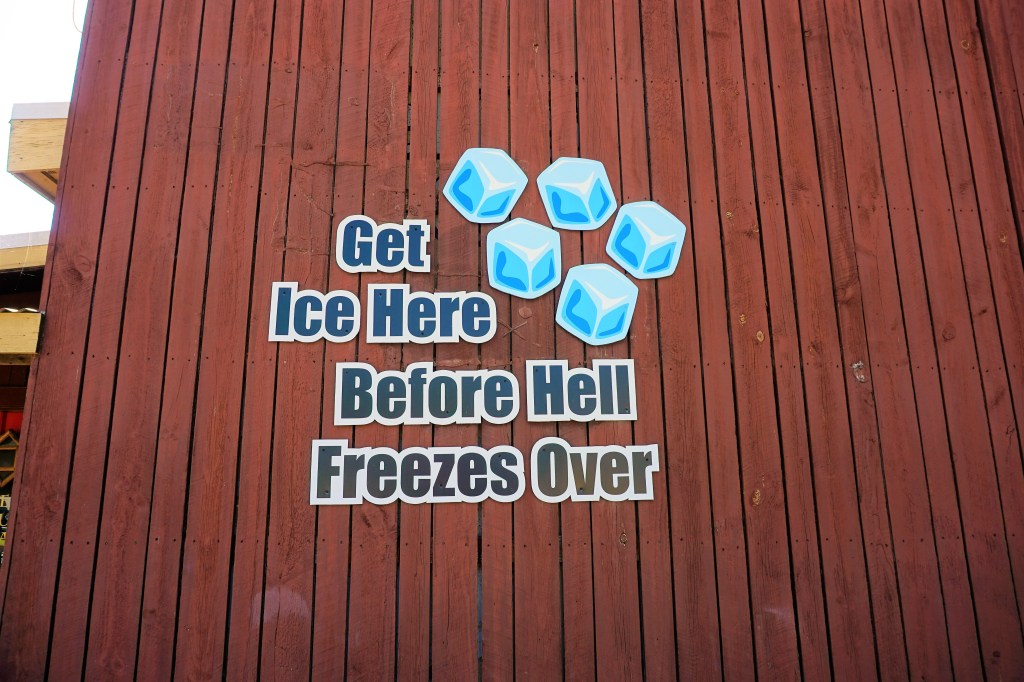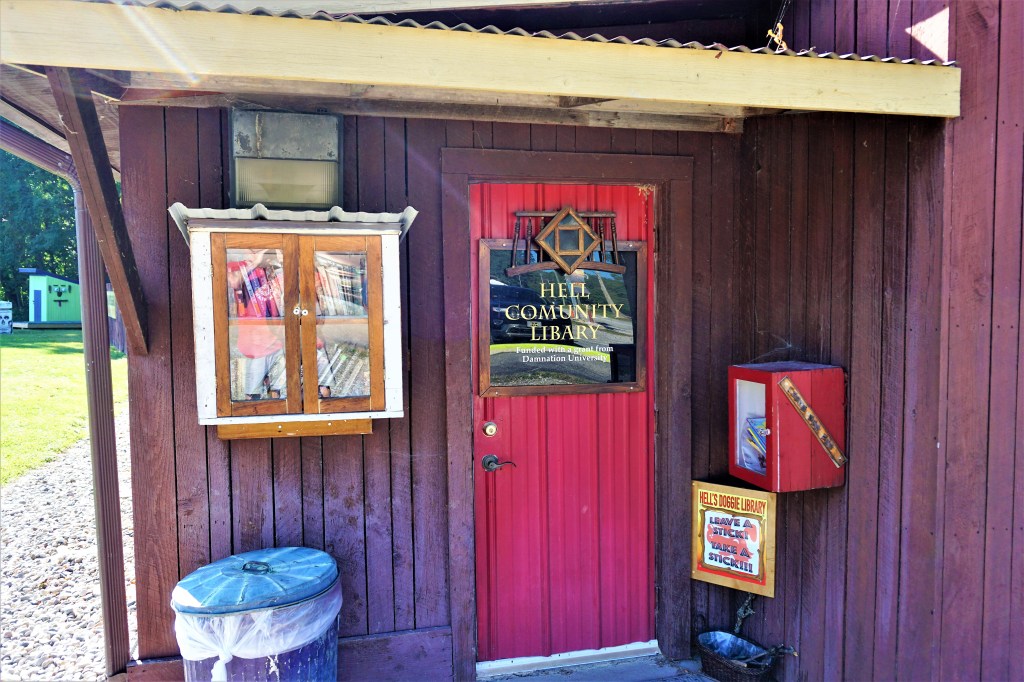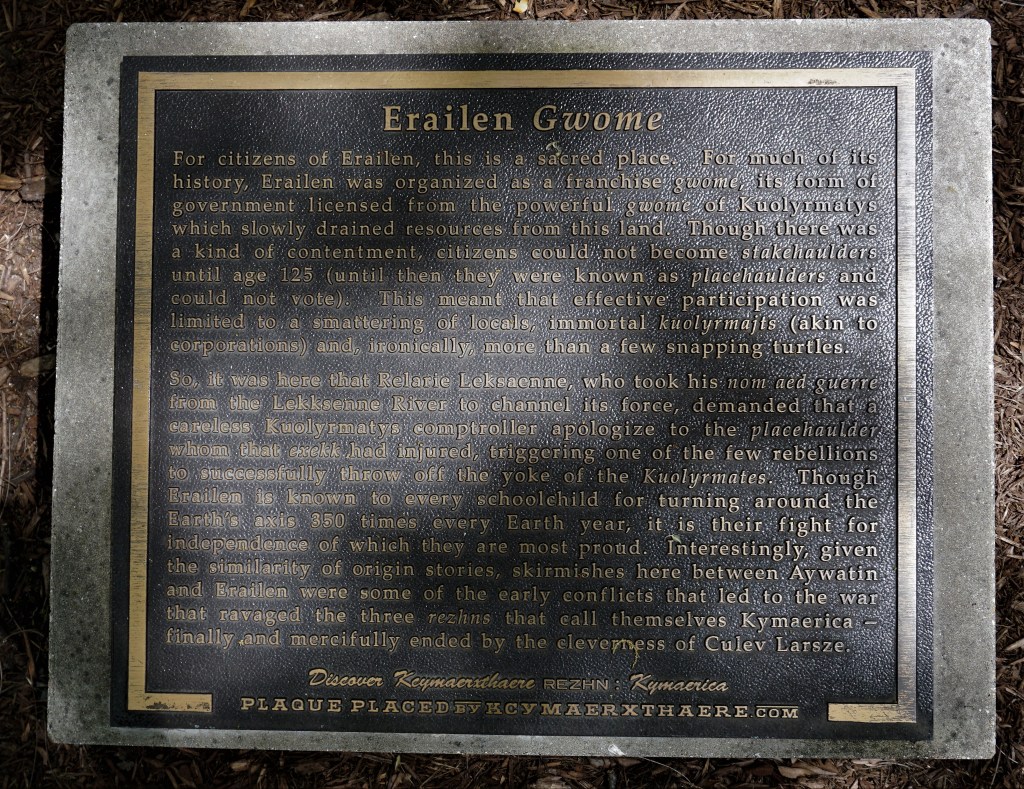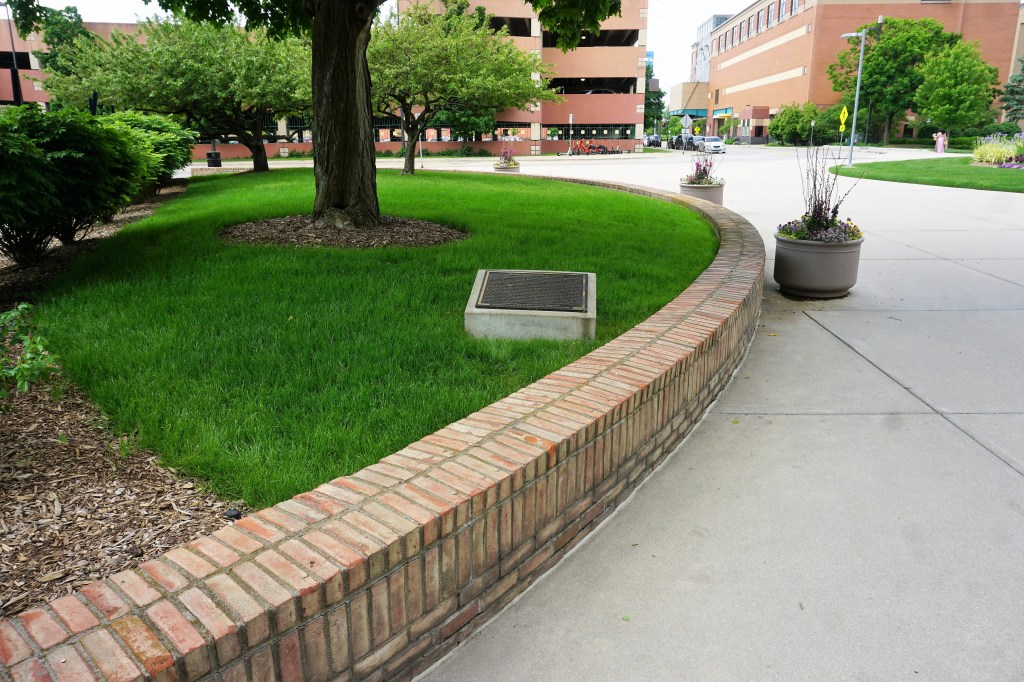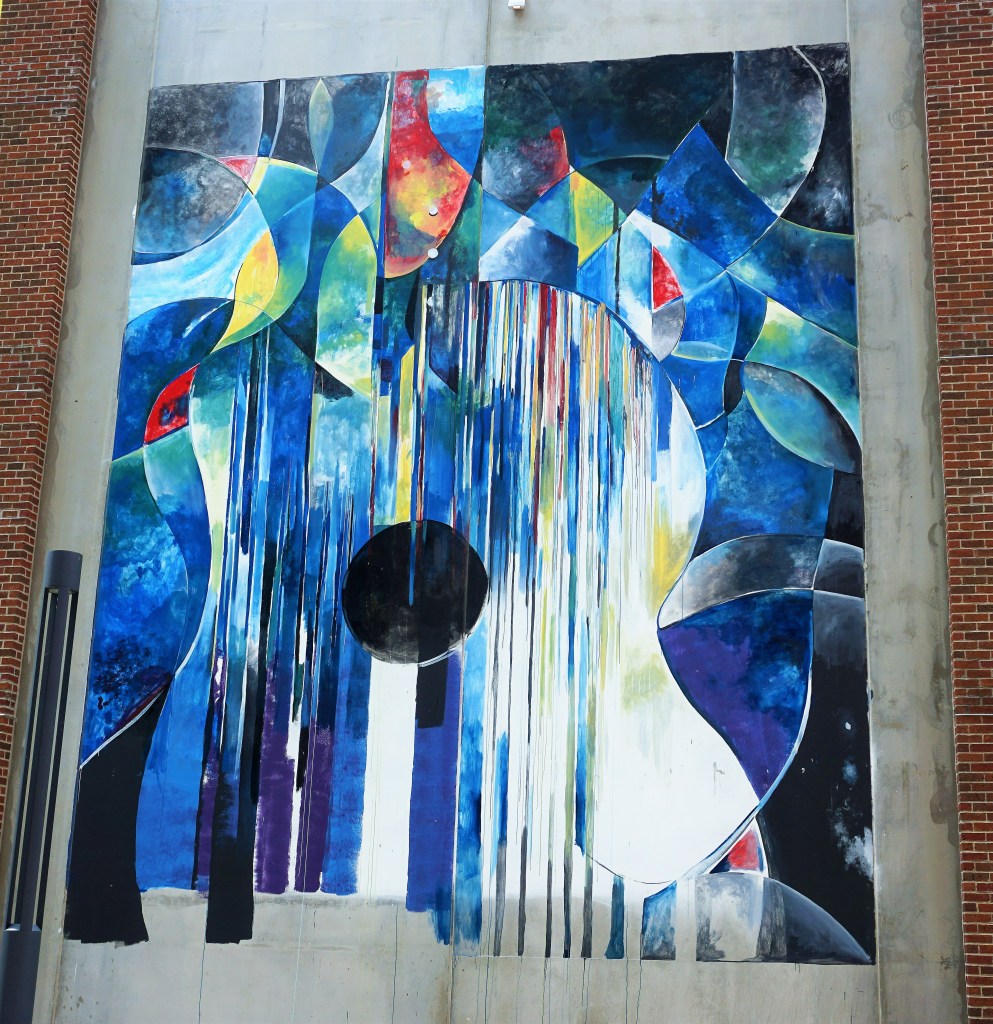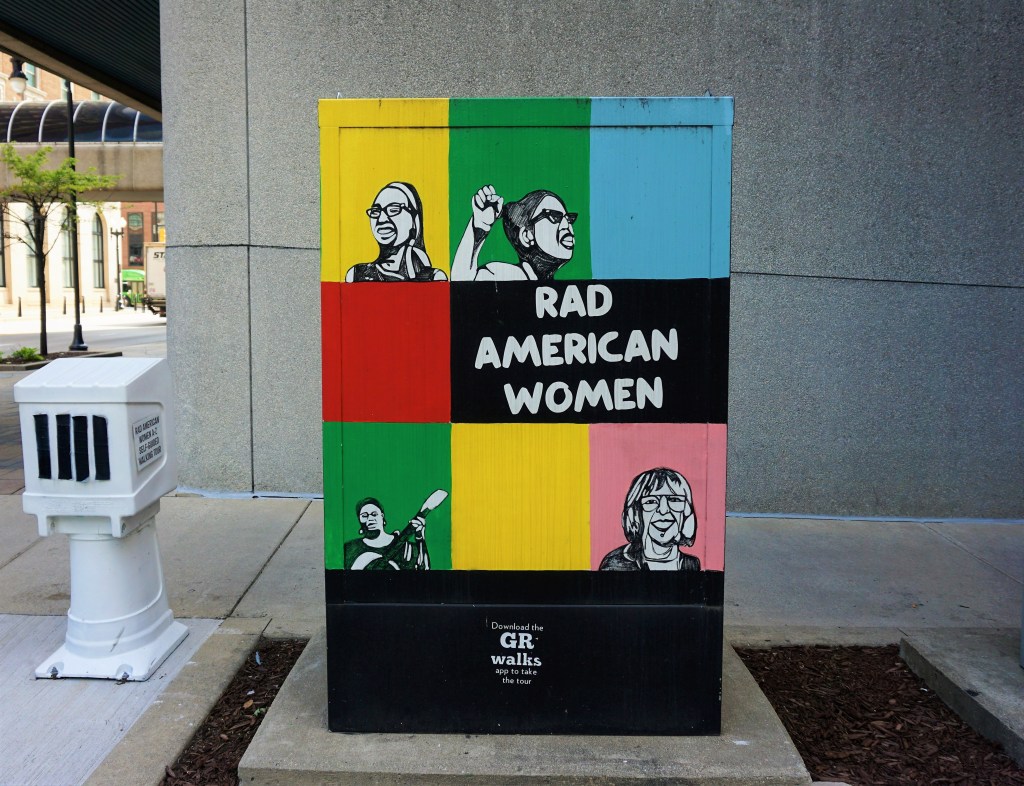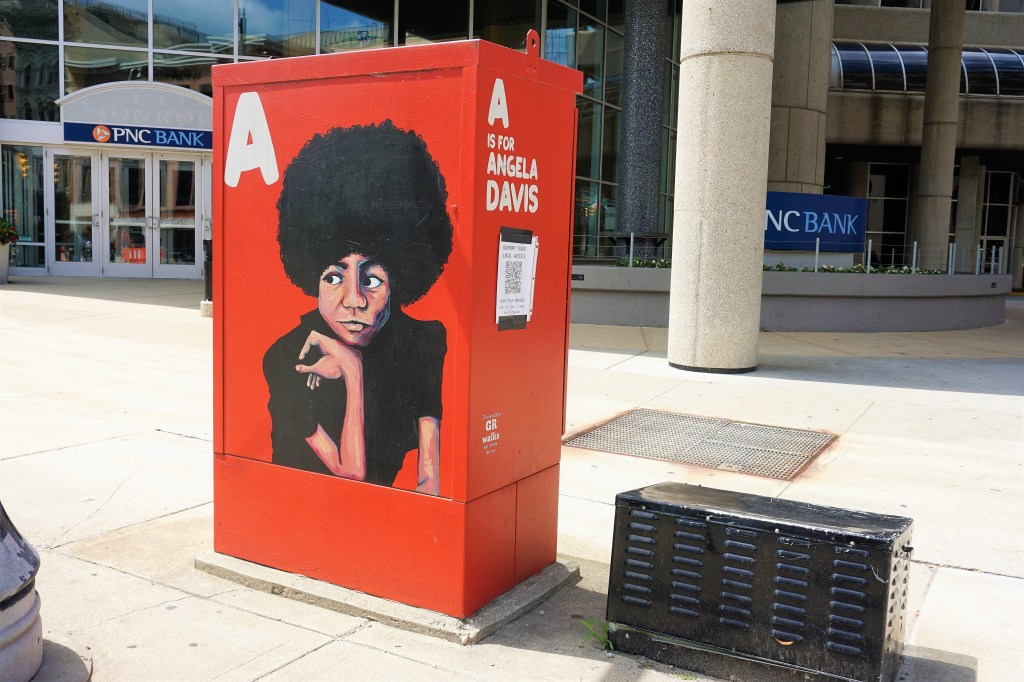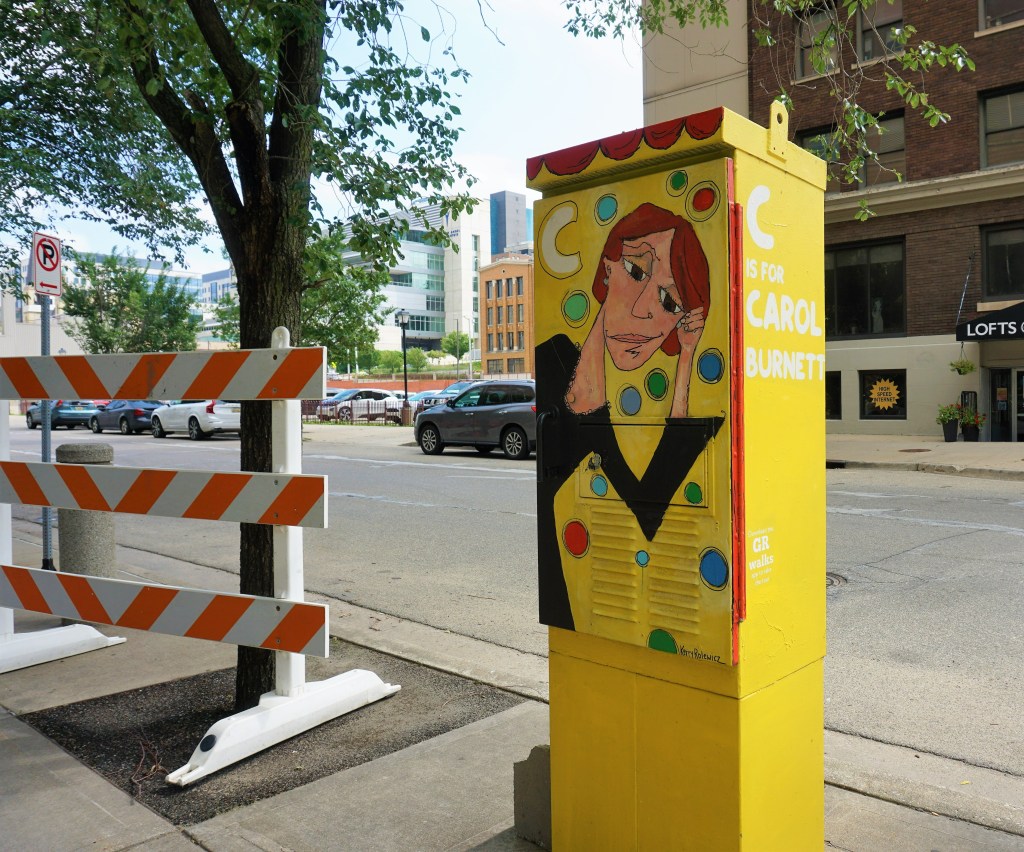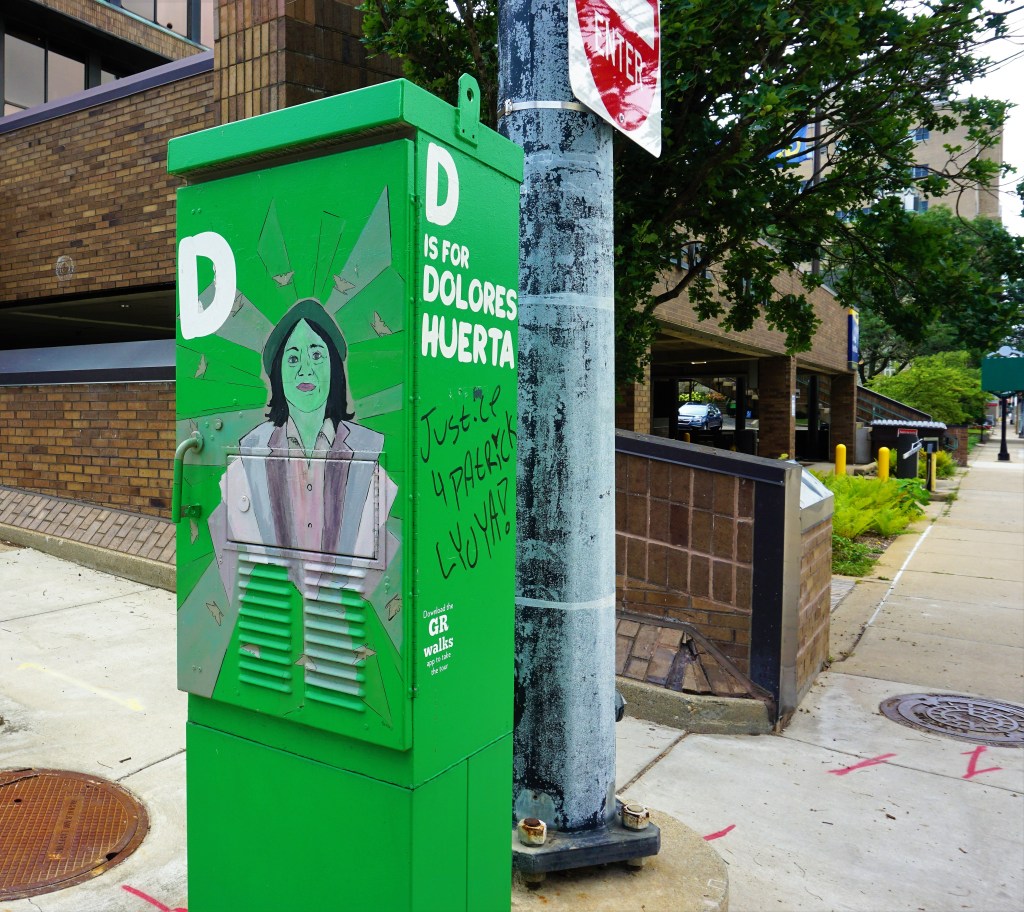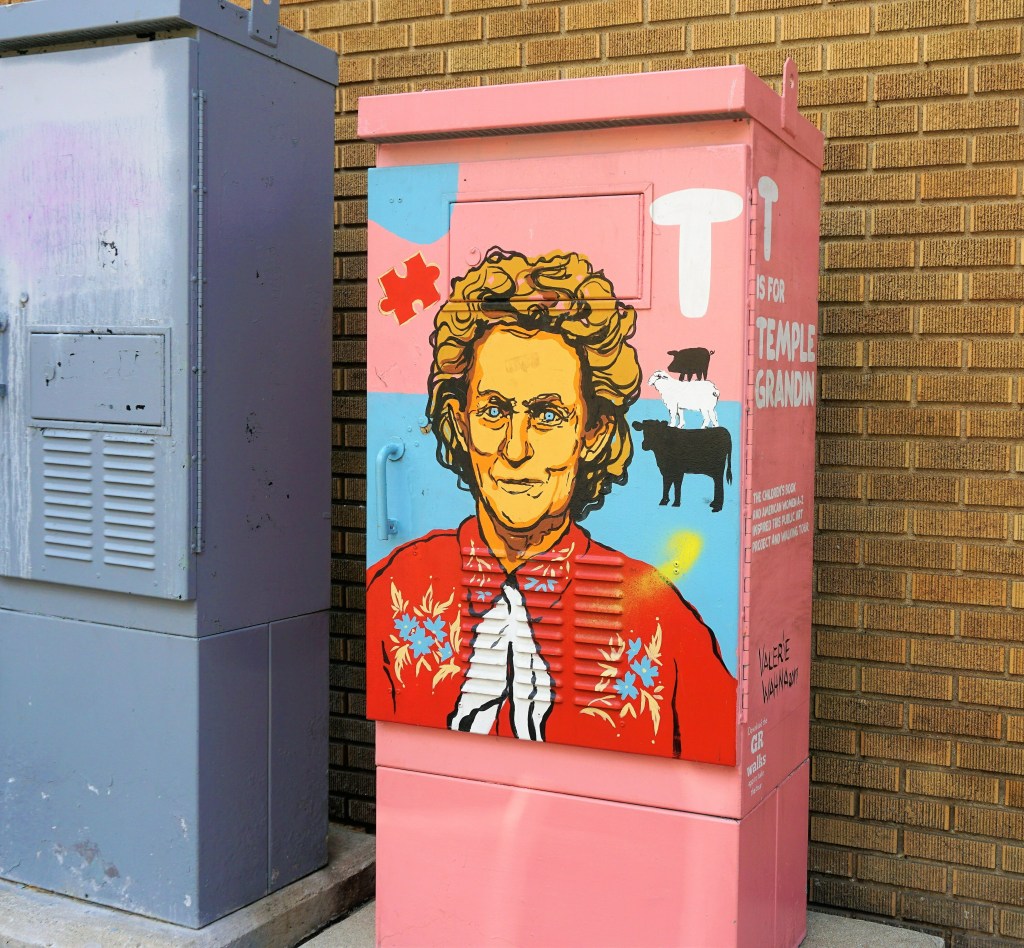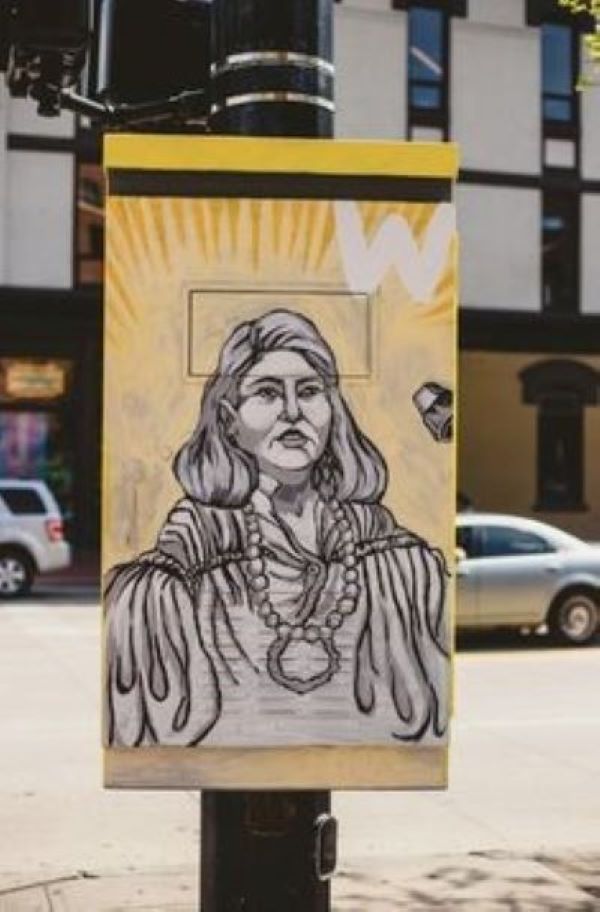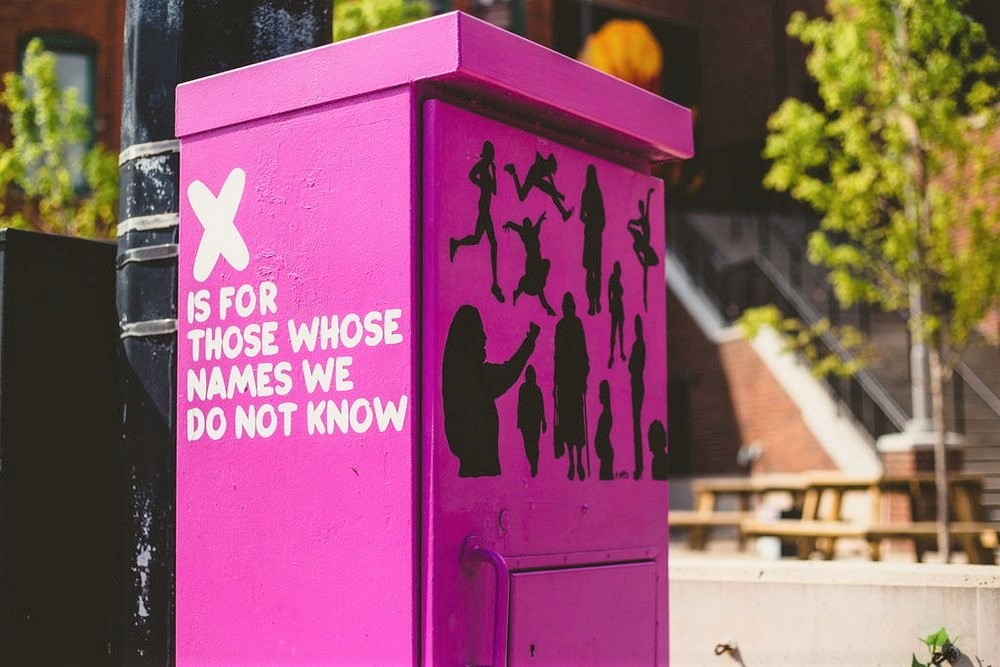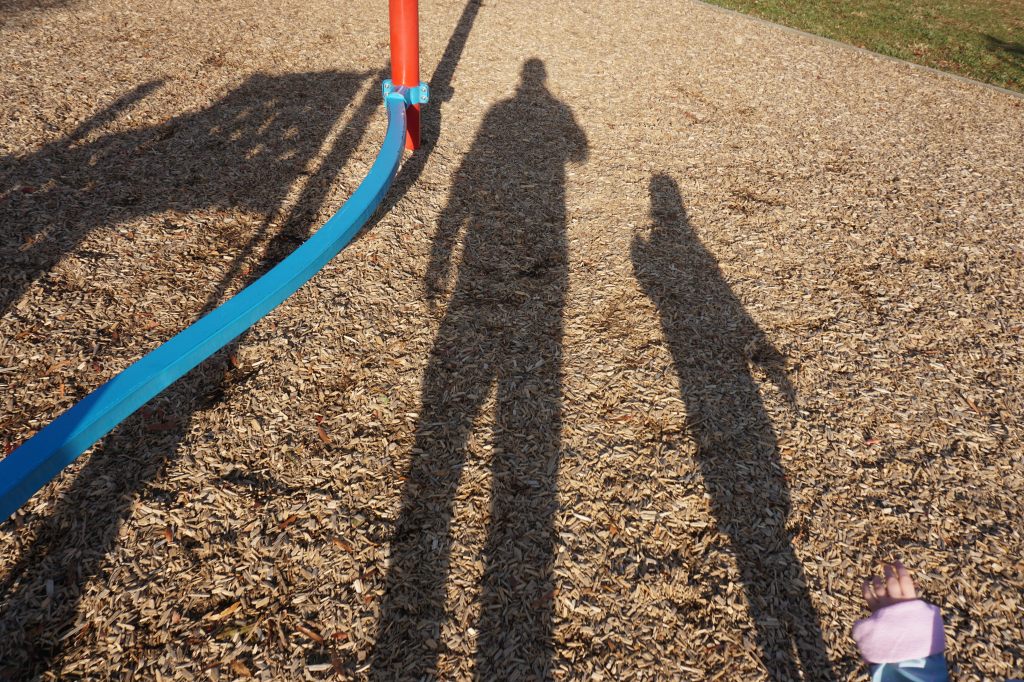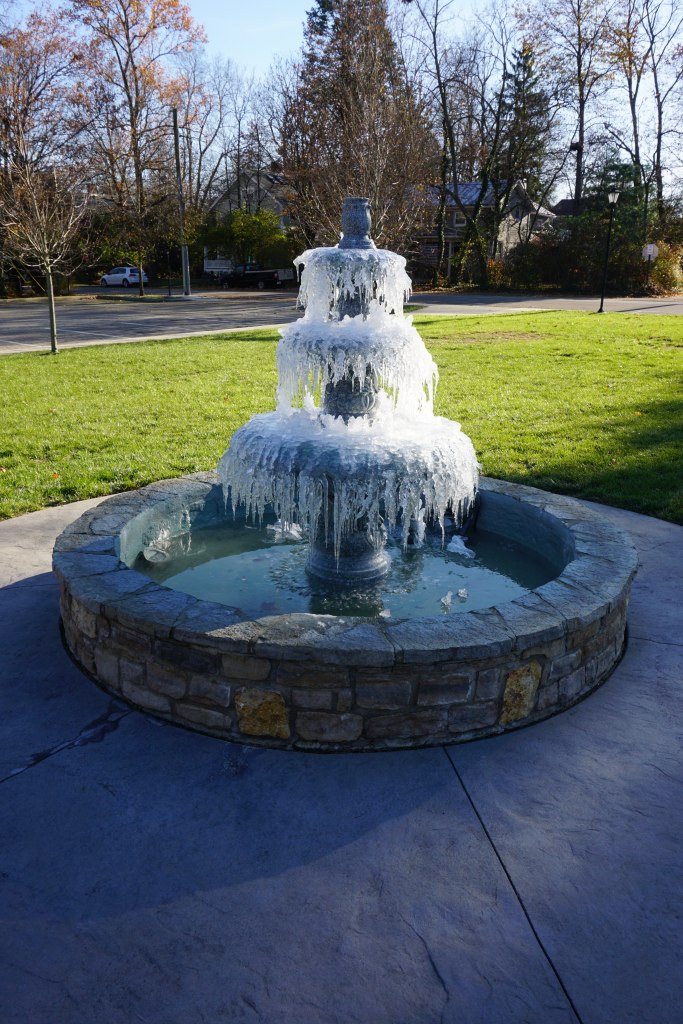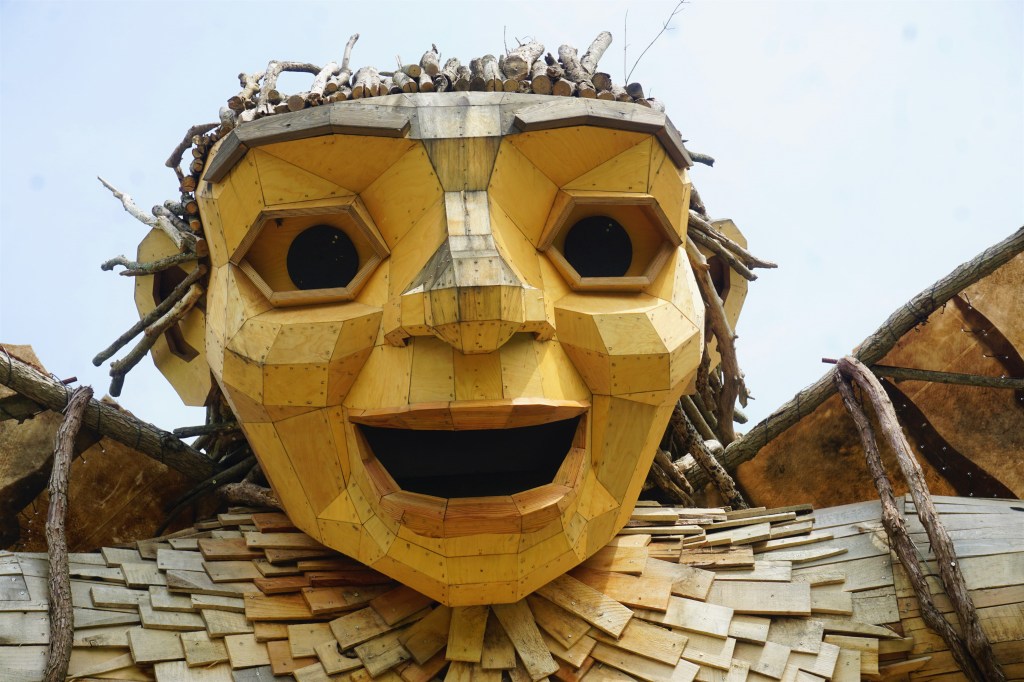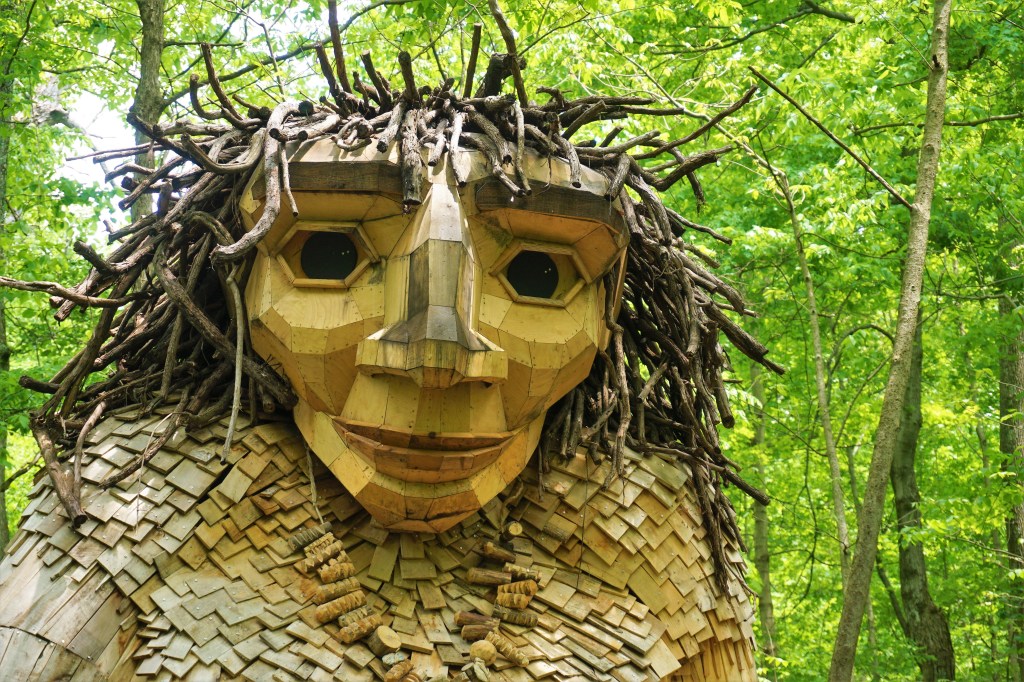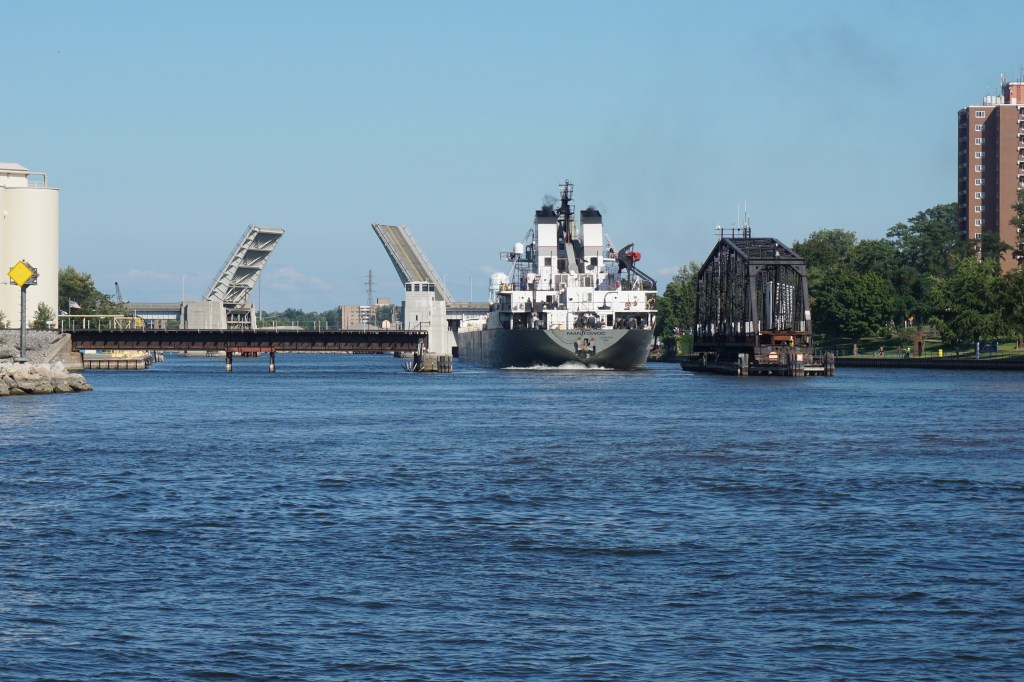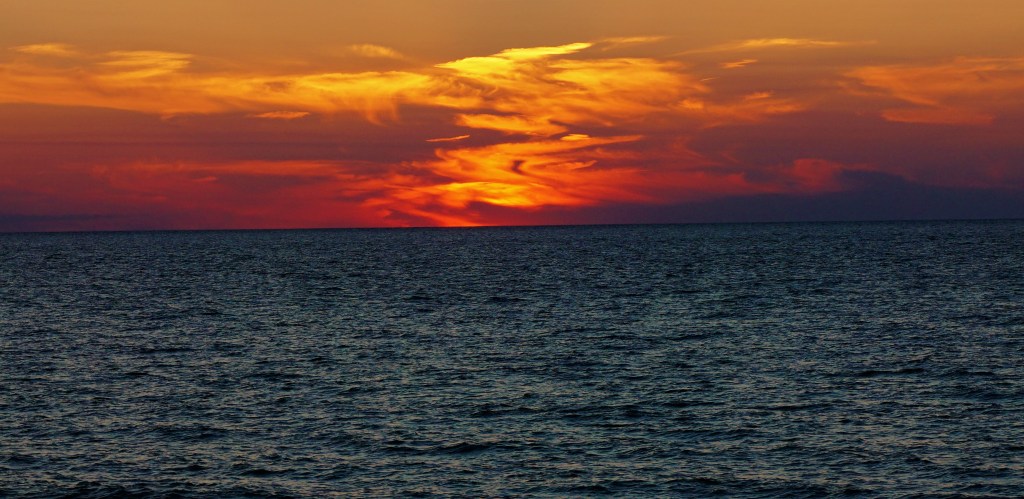
Let’s see…Tiberias – check. Jaffa and Tel Aviv – check. Old City Jerusalem – check. The Dead Sea, Judaean and Negev Desert, Zin Valley – check.
June, 2023
We may have visited the Holy Land in June, but it is during October, 2023 that we are writing this blog, and today is Day 7 after the cowardly attack on Israeli civilians by Hamas terrorists. As war rages and sides are taken it is clear to us that the bottom line is that this horror is not about Palestinian or Israeli rights. It is about the singular mission of Hamas to murder Israelis – to murder Jews – and their total disregard for the fate of their own people. We pray that war shall be no more, and that the murder of innocents should forever cease – swords should be beaten into plowshares. The world must unite and must condemn and never, never tolerate actions such as these. All the peoples’ of the earth should find God’s greatest gift – to live in peace – of shalom. Birkat Shalom
עוֹשֶׂה שָׁלוֹם בִּמְרוֹמָיו הוּא יַעֲשֶׂה שָׁלוֹם עָלֵינוּ וְעַל כׇל ישׂראל ואמרו אמן
Prior to our travel to Israel Brian had been in contact with Congregation Beit David, a reform Jewish congregation in Tel Aviv asking if we might attend Shabbat Services. Graciously we were invited to join the Congregation in worship. We made sure to return from the Negev in time for Shabbat, and Kea accompanied us as we arrived at the Synagogue just a few minutes prior to the beginning time of the Kabbalat Shabbat service on Friday at sundown. We were directed across the street to a public park – worship on this warm night was not in the sanctuary. The service was enriched by music and many of the standard prayers that are usually chanted during a worship service were sung to amazing upbeat tempos and rhythms. We felt pretty proud to be able to recognize the prayers and to the best of our abilities sing along. While we may have felt that Hebrew is Hebrew is Hebrew, American pronunciation and Israeli pronunciation is more than a bit different – and, oh by the way, the booklet serving as our Siddur for the evening did not contain any English or transliterations. Thankfully Kea, who has been studying Hebrew and is much more of a scholar than either of us, could keep us on track. Between prayers that were sung with musical accompaniment the Rabbi spoke so very quickly and in Hebrew that we rapidly became lost. But then the usual Shabbat prayers were recited by the congregation, and we participated! How honored we were to be welcomed and to be able to pray with this congregation as runners, walkers, men, women and families enjoyed the park, some stopping to join us in worship.
The Duckenfield Israeli Tour Company had spent the last week driving these tourists around the central and some of the southern regions of the Country – from Tel Aviv to Jerusalem to the Negev and Judaean Deserts, to a Kibbutz, Bedouin Encampment, Masada and Ben-Gurion’s grave and back again. Israel may only be 263 miles in length; however, the well-maintained roadways in the southern region are limited, and to get from point a to point b may be much longer than anticipated – for example it takes an hour and a half to travel the maybe 2 miles as “the crow flies” from the east to west sides of Masada as the road circles the perimeter of the mountain. Yup, when in the southern region of Israel, it is always the long way around.
We expected a day of rest, but over coffee the DITC asked if we wanted to head out to the Galilee in the northern region of the Country. At the confluence of the Jordan River and the Sea of Galilee is the town of Tiberias.








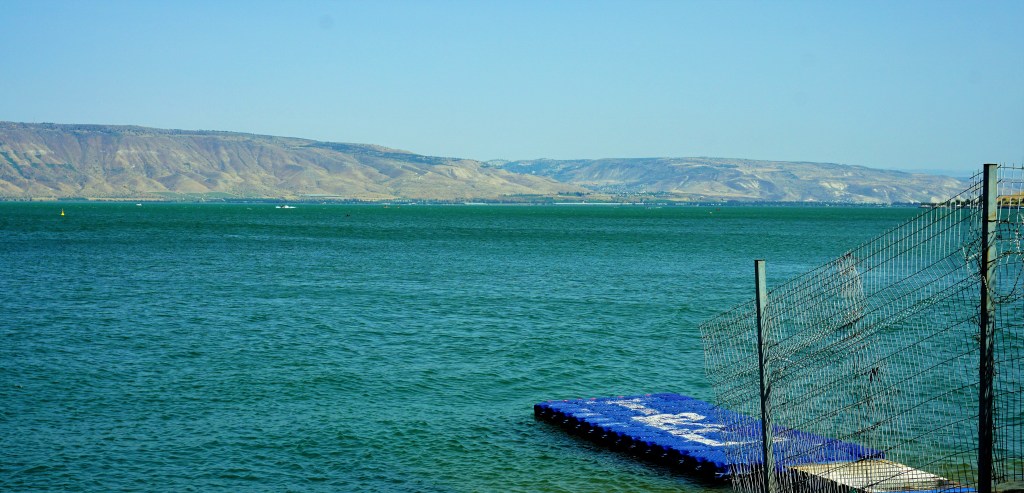
It was pretty cool to visit the Sea of Galilee, but, for us, the real attraction in Tiberias is Hammat Tiberias, a 4th Century CE synagogue. Little remains of the synagogue except some foundational stones and its magnificent floor mosaic. On one side of the floor the mosaic displays the traditional depiction of a Torah ark flanked by ceremonial menorahs, shofars (ram’s horns), and palm fronds. At another end, the names of the synagogue’s benefactors are written in Greek, the most used language of the time, surrounded by two lions.
The center panel of the mosaic is a magnificent zodiac wheel, featuring, among other pagan images — the wheel encircles a haloed Helios, the Greek sun god, mounted atop his chariot. Women representing each of the four seasons sit to the corners of the zodiac, with the accompanying Hebrew inscription of the names of the seasons. Pagan imagery in a house of worship would appear a flagrant violation of God’s injunction, “Thou shalt not make unto thee any graven image,” but similar synagogue zodiacs have been found at other sites. An oddity perhaps, but then again possibly a trend of the times?
The synagogue is part of a national park and just steps away is an Ottoman-era bath house – the natural springs bubble through cracks in the earth; temperatures can reach as high as 140 degrees Fahrenheit. Step-down pools are not as hot and are available to bathers.



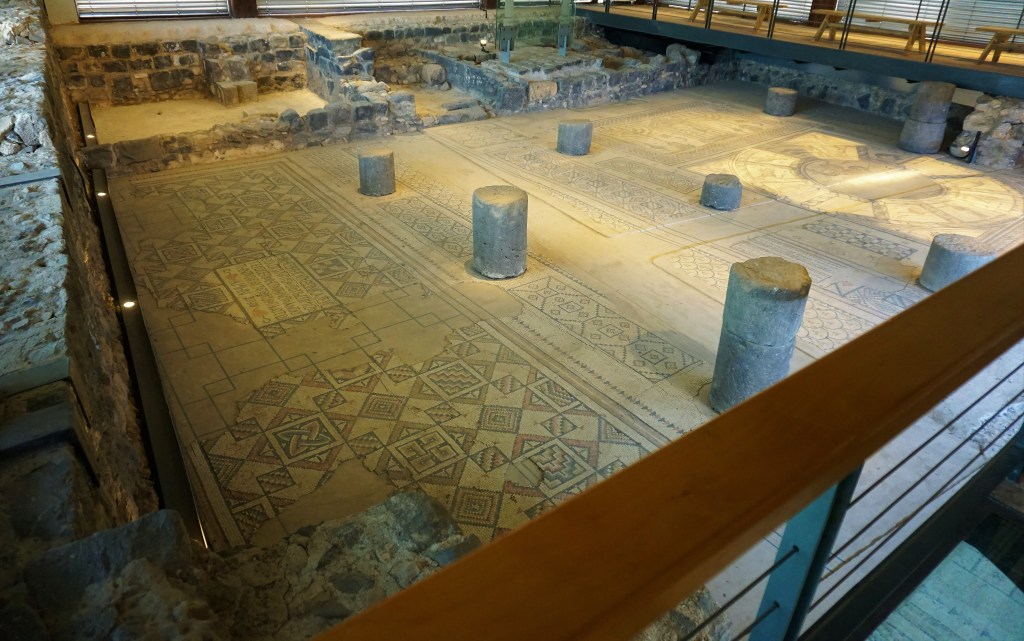
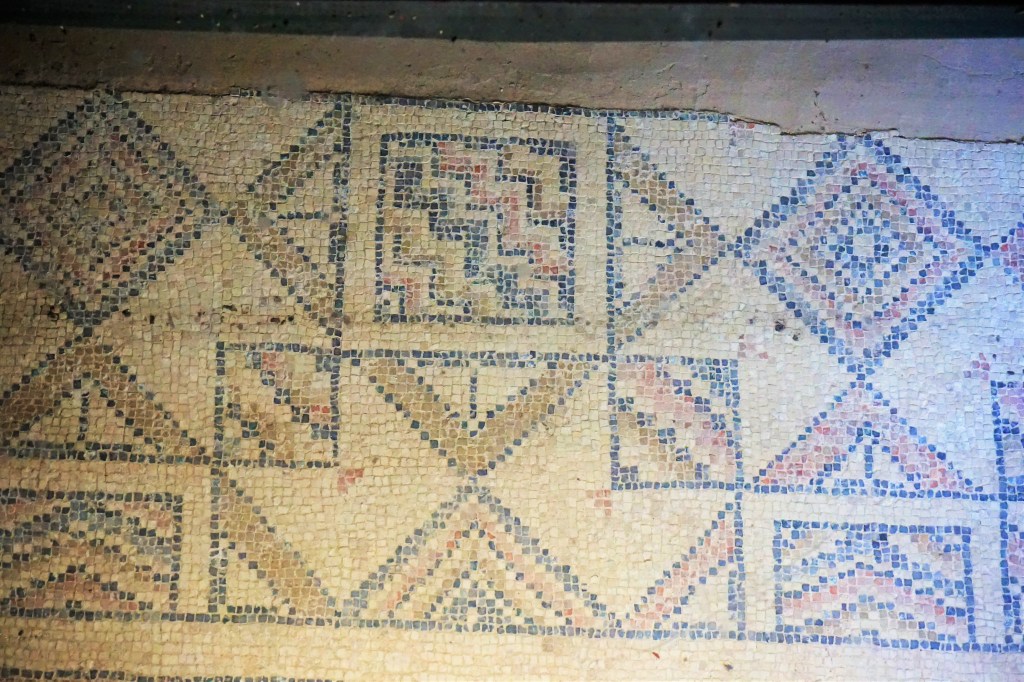

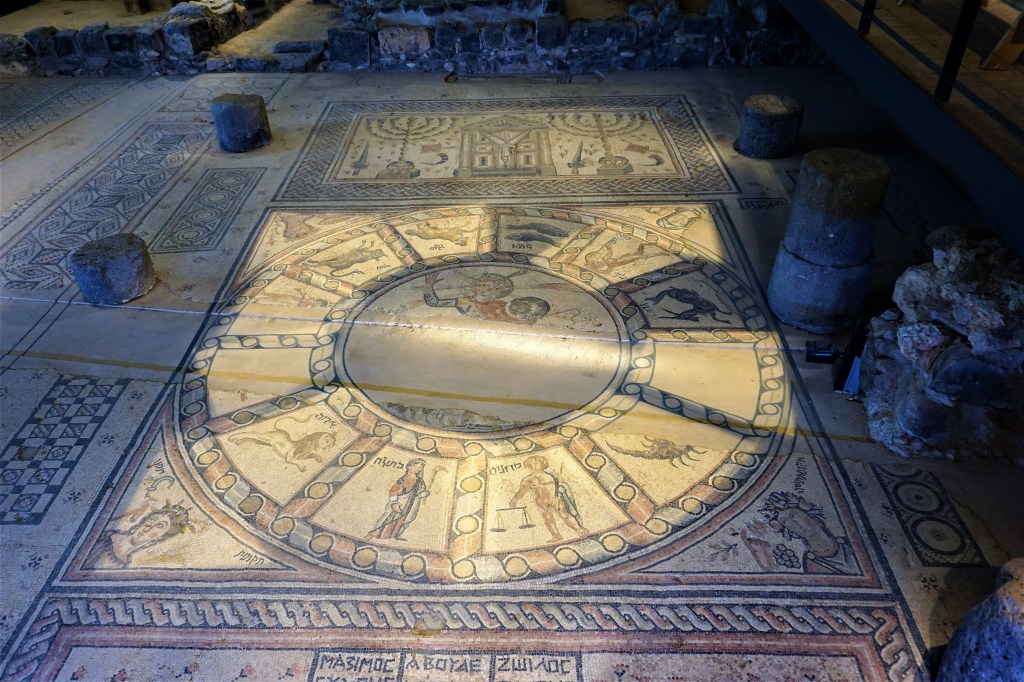

Although Barbara loves the mountains – she grew-up and lived in the Rockies for 42 years – she has discovered that she is drawn powerfully to the sea. She finds herself longing to be on, in or near the water, and can spend hours sailing or cruising or on a beach collecting shells or looking for sea glass. As long as she can walk along the beach, have the tide run over her feet and feel the sand between her toes she is one happy human. Israel, of course, is bordered on the west by the Mediterranean Sea…so down to the sea we went. We did collect a fair share of sea glass, some fossilized coral and a few shells, and as an added bonus it was sunset!






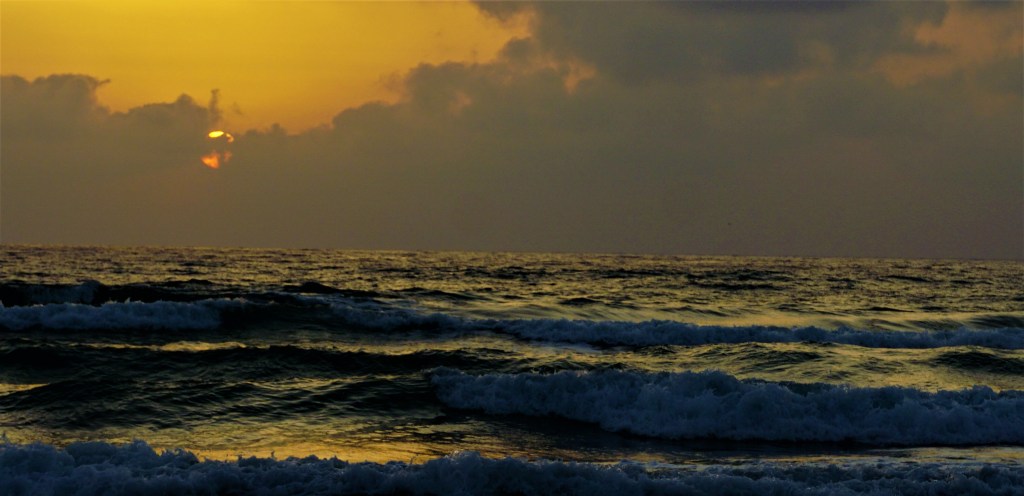
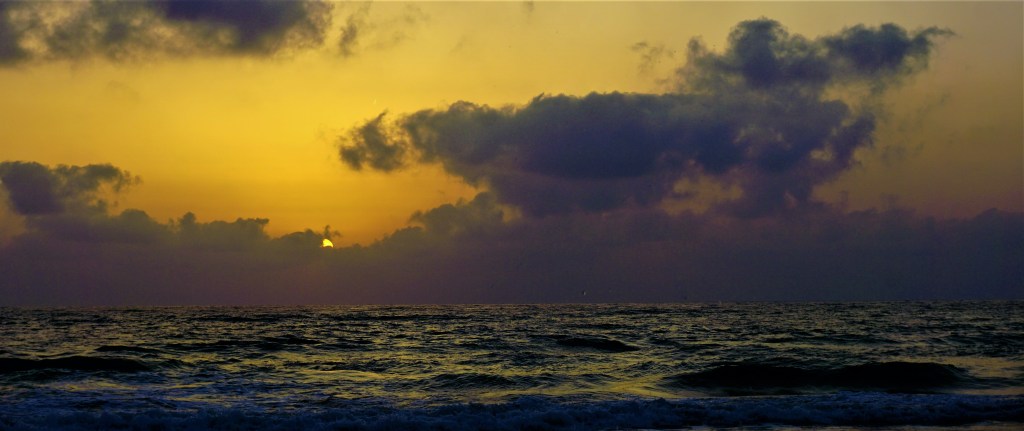

The Israel Museum is a historical, archaeological, and contemporary art and culture museum in Jerusalem. There were 2 exhibits drawing us to visit – a scale reproduction of Jerusalem during the period of the Second Temple, and the Dead Sea Scrolls.

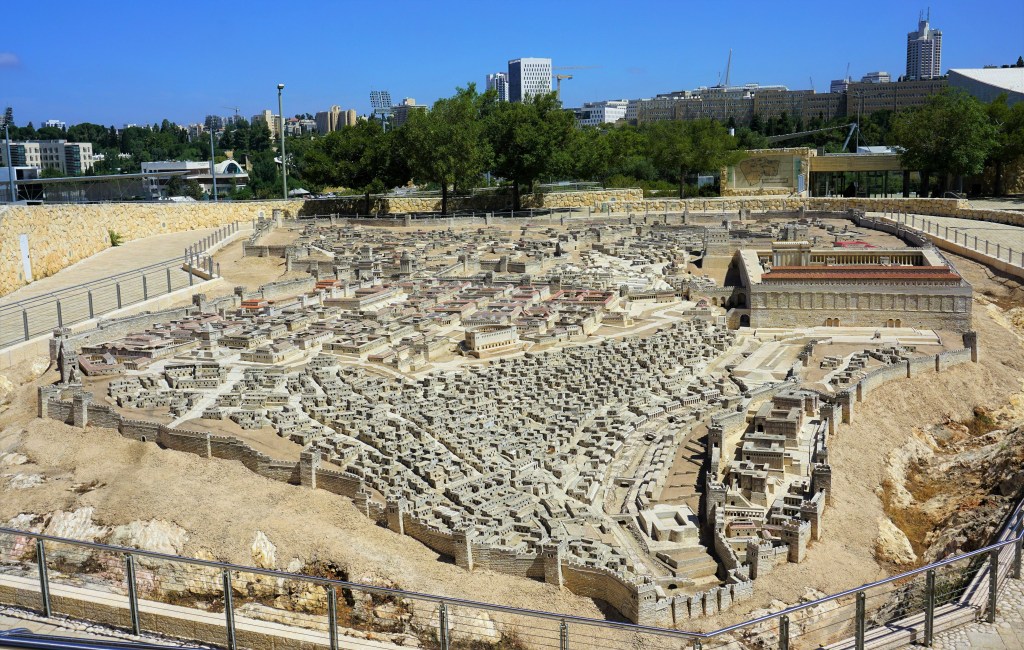



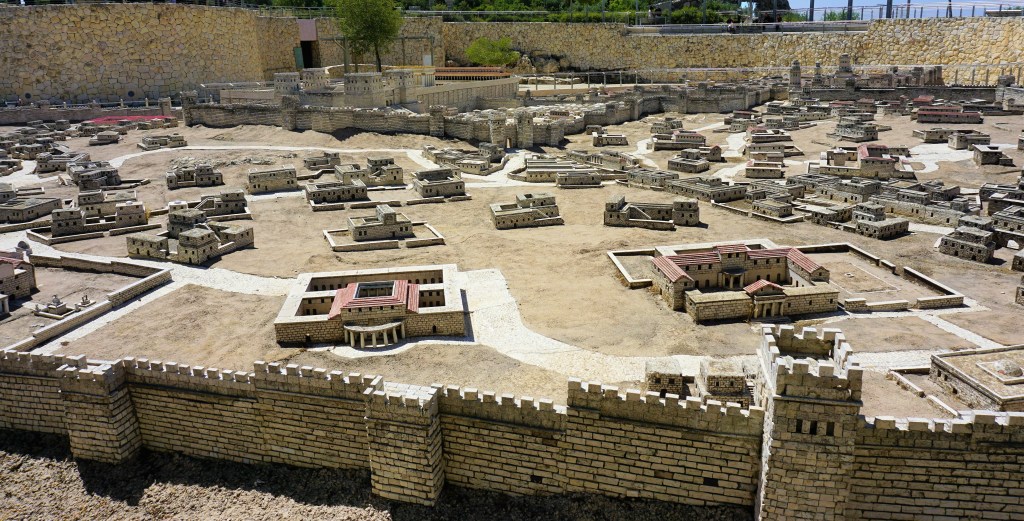

The Shrine of the Book houses the Dead Sea Scrolls and Aleppo Codex among other ancient documents. It is estimated that the Dead Sea Scrolls were written between the 3rd and 1st Century BCE, and are so very significant because they include the oldest surviving manuscripts of entire books later included in Jewish and Christian Scripture, as well as apocryphal and sacred books that preserve evidence of the diversity of religious thought in the late Second Temple period. There have been over 15,000 manuscripts and manuscript fragments found.
The Aleppo Codex is a medieval bound Torah – the Jewish bible. The codex was written in the city of Tiberias during the tenth century CE, and was authenticated by Maimonides (Jewish philosopher who became one of the most influential Torah scholars of the Middle Ages).
No pictures are allowed to be taken within the display room itself.
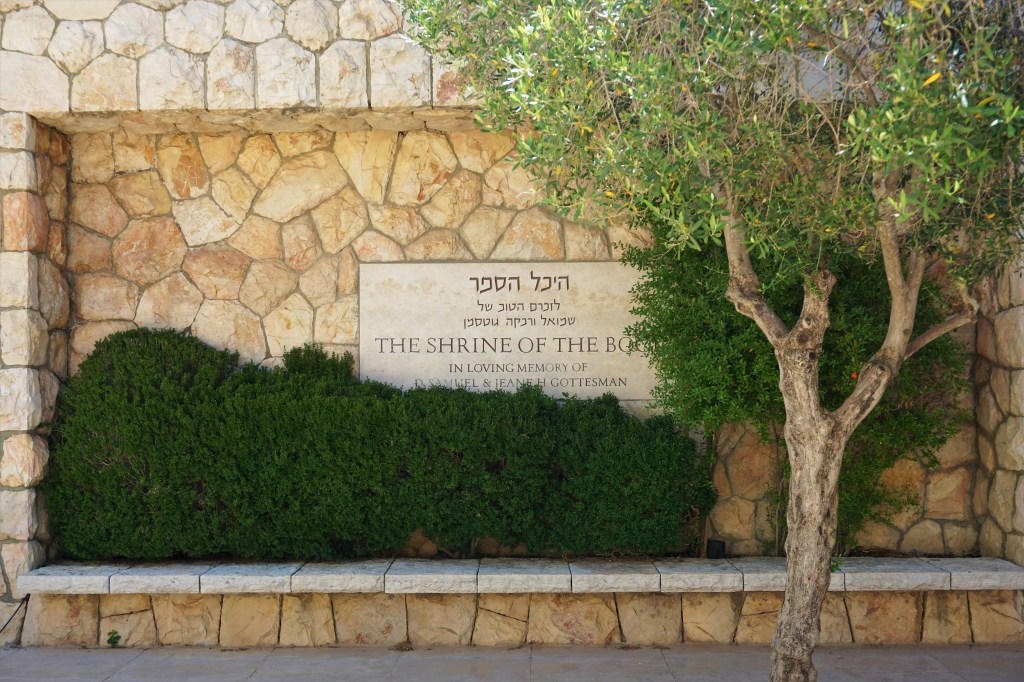


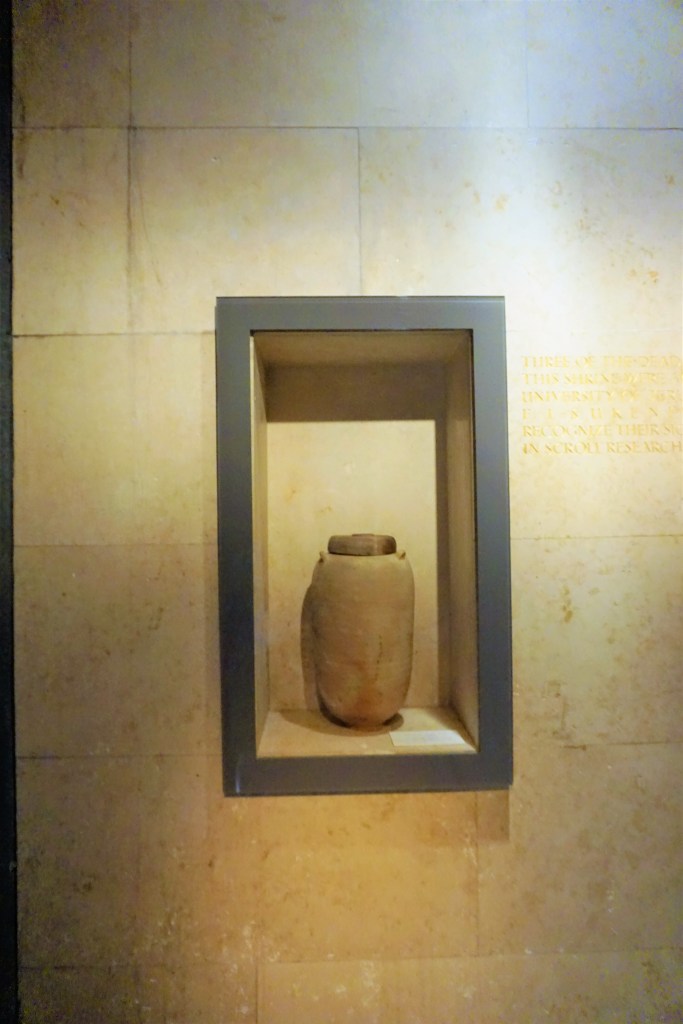
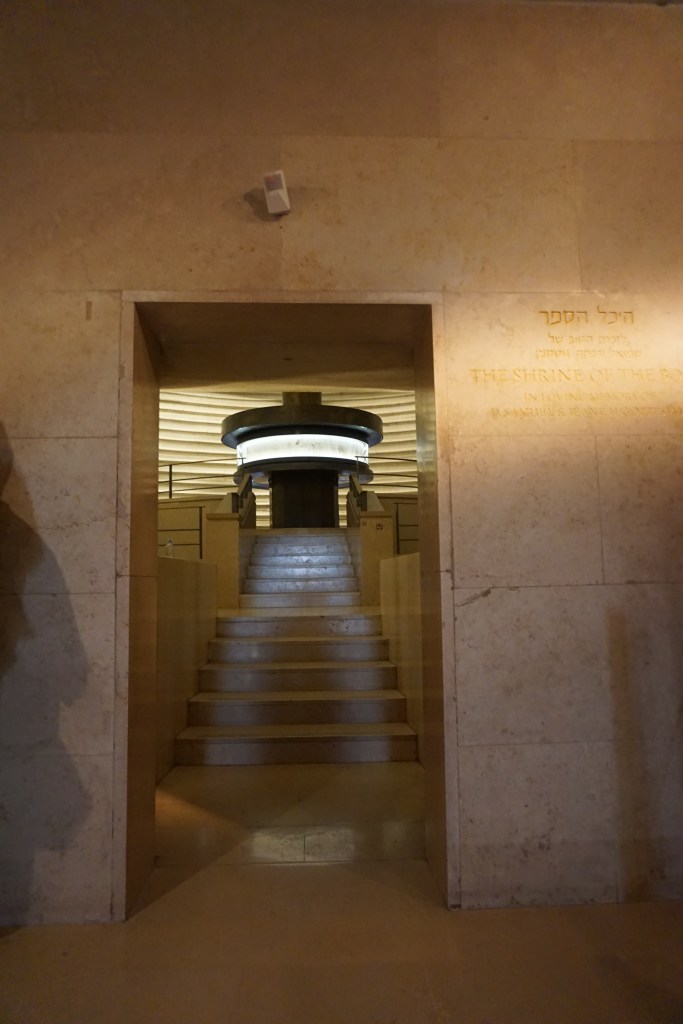


Our visit to Israel had to include honoring the 6 million slaughtered in the Holocaust. We looked forward to visiting Yad Vashem, the Holocaust History Museum. Located in Jerusalem, the museum traces the timeline of the Jewish peoples’ fear, terror and horror as the rise of antisemitism in Germany moved so very aggressively towards their agenda – the ultimate solution – not just annihilation of the Jews, but of anyone not determined to be of the Aryan Race. The museum made sure to address the culpability of the world in not acting sooner to the evident genocide.
A single exhibit shaped in the form of the interior of a furnace chimney with pictures and a brief biography of Jews put to death posted on the walls – men, women and children – took our breath away and brought tears to our eyes. In a separate on-grounds location the Hall of Remembrance gave us a chance to say Kaddish, remember, and pray for the coming of the Messianic era and for God’s greatest gift – peace for all mankind.




We were scheduled to return back to the US the next day, but had yet to have the opportunity to enjoy what some believe to be one of Israel’s national dishes. Kosher foods are milchig, fleishig or parve. Milchig dishes are made of or are dairy; eggs are usually considered milchig as well. Fleishig dishes are made of or are meat (there are other rules about meat protein, but not something to consider right now). And parve basically means neutral – vegetables, herbs and spices, fruits, beans, and grains – and can be consumed on their own, paired with or cooked with either dairy or meat. So we ate traditional Israeli dishes and meals – shakshuka, Israeli breakfast and lunch with so many small plates of parve or milchig dishes, and hummus and pita so far superior to what we might find at home. But we had not had shawarma – an overflowing fleishig pita wrap of marinated chicken (or beef or lamb) that has been stacked on a skewer and roasted prior to slicing, hummus, lettuce, tomato, onion, and harissa (chili pepper paste). On returning to the Duckenfield Estate Middle East we found that The DITC had taken care of us yet once again. The shawarma was delicious.

Our time in Israel came to a close, and we bid farewell to Paul, Kea and Dan. Paul dropped us off at Ben Gurion Airport in Tel Aviv around midnight – plenty of time for our 4:30am flight. We passed through security and customs quickly and boarded the first leg of our journey home. From Tel Aviv to Frankfort, Germany – a 2-hour layover – and then from Frankfort to Chicago. total travel time in the air was 17 hours. Our return flights on Lufthansa Airlines were quite a letdown compared to our incoming United Airlines flights. The seats were smaller, electronics and entertainment not always in working order, and the food served, well, was an example as to why travelers complain about airline food.
We easily passed through US customs, called for the hotel shuttle to pick us up in order to fetch our car and headed home. Some fool decided that a 5-hour drive after long air travel would be ok – might have been but for the traffic in and around Chicago. Nah, lesson learned. It would have been much better to spend the night, and head out for home in the morning.
We experienced only one small glitch in our travels. Brian was concerned that the tahini we had purchased would not fare well in checked baggage so Barbara ended up putting the quart jar in her carry on. No problem with Israeli security and customs, but we had to go through security and customs again in Frankfort where the jar of tahini was confiscated. What we later found out was that pastes such as peanut butter, nutella, and, yes, tahini fell into prohibited items of “not more than 3 ounces” classification. Apologies to the Bullock and Umstattd families.
Oh yeah – remember we experienced no jet lag traveling to Israel? Well, that nasty bugger does exist. Both of us were physically out of sorts for about 2 days.
There were some aha moments during our time in Israel. **The West Bank is 81 miles long – that’s almost 1/3 the entire length of Israel. There are both Israeli and Palestinian communities and cities in the West Bank; you can tell the difference – the Palestinians build out and the Israeli’s build up (high rises). **The Golan Territory (Golan Heights) is Syrian and includes the NE part of the Sea of Galilee and the entire Sea borders directly with Israel. There are terrorist group enclaves all along the West Bank, and terrorist groups as well as Syrian armed forces encamped in the Golan. **In biblical times there were only cart paths until the Roman’s built roads. Nonetheless imagine being (9 months) pregnant or elderly or infirmed or just simply having to walk or travel on the back of a donkey/in a cart to report for the mandated census count…it’s 94 miles from Nazareth to Bethlehem. Is the story of Joseph and Mary biblical apocrypha or reality? And for perspective it’s 68 miles from Jerusalem to Masada. Just how long did it take the Jews fleeing Jerusalem to reach the community at Masada? Remember they had the best of the Roman army on their heals. **What if the Hebrews didn’t “go up to Jerusalem” and turned left at Mount Nebo and into the desert? The land of milk and honey or the land of thirst and scorpions?
There are so many memories of a lifetime, so many emotional moments, and such wonders to reflect upon from our visit to the Holy Land. There are also so many places we did not visit, and some to be revisited in order to sit, reflect and involve oneself in contemplation that we hope we can return.
For Brian making Aliyah became an unexpected reconnection to and strengthening of his Jewish identity – the religious impact was tremendous and soul-deep. It was so wonderfully rewarding to meet and talk with Israelis – to hear their stories and their experiences as a Jew living in this land. He’ll be forever grateful to Roni, Danella, and the Israeli soldiers with whom he was honored by that took their time to share a lunch hour for their conversations – common experiences yet 5,700 miles or so apart as well as eye-opening glimpses into Israeli culture. Chance encounters with Jews in The Great Synagogue of Jerusalem, 2 shop owners at Mahane Yehuda Market, the woman at the light rail station, and so many others helped him become enveloped in Israel.
For Barbara, the excitement of going to Israel fulfilled a much-anticipated desire to feel the promise of a connection with the land and the Jewish people. The bonus was getting to spend time with Paul, Kea, and Dan whom we had not seen in person since 2019. Words of gratitude to the Duckenfields for giving us the Israel experience of a lifetime. Thank you for making our visit the experience of a lifetime. We have bragged about our visit so often to friends and family, folks are wondering if you’re willing to give them the same unbelievable adventure!
Every day was new and with no expectations, I began to feel, understand and appreciate the Israeli passion for life and what it means to live every day with intention. We felt genuinely welcomed by all of the people we met and thoroughly enjoyed the lively discussions we shared. We came to appreciate the hustle and bustle of the freeway system; the crowds in the markets; spending time exploring in cities, old synagogues and structures that are thousands of years old; enjoying the delicious, delectable and incredible food experiences. Traveling with family to explore amazing landscapes, museums, a kibbutz and archaeological sites filled me with awe. Seeing The Old City of Jerusalem was humbling and spiritually rewarding. While our goal this first time in Israel was focused on a religious experience, it became so much more.
Israel has a beauty that changes depending on where one is – desert and rolling hills to the south, the sea and a lush coastline to the west, the almost tropical terrain and hills in the central part of the Country, and the greenery that increases and becomes denser the further north one goes. There’s the vastness and saltiness of the Dead Sea, the freshwater Sea of Galilee, the oases and waterfalls found in the desert, underground rivers, flora we’ve never seen before and houseplants that thrive and become massive outdoor displays in the Israeli climate. There’s evidence of humanity and organized religion dating back millennium, there’s the city that’s the holiest of holies for the world’s three great religions, the Country has a history unlike anywhere else in the world, there’s an ancient fortress which holds sway on the great religions, there’s an ancient fortress with a deep harbor and narrow cobbled streets still available to the visitor and resident alike. The Country has been subject to invasion and conquest after conquest after conquest after conquest – wars still being fought over a piece of land 260 miles long and no more than 80 miles wide at its greatest width. Whether Jew or Palestinian or Christian, Israelis are passionate and loudly outspoken, but most of all welcoming. Israel has great national pride, and the Country is both ancient and modern at the same moment. Going to Israel is not like going to one of those “most beautiful places on earth not to be missed.” There are no vistas so beautiful that your breath is taken away. However, it’s beauty is all of these things, and transcends a single definition. It is simply humbling to experience.
Barbara and Brian
“It’s not what you look at that matters, it’s what you see.“ – Henry David Thoreau



